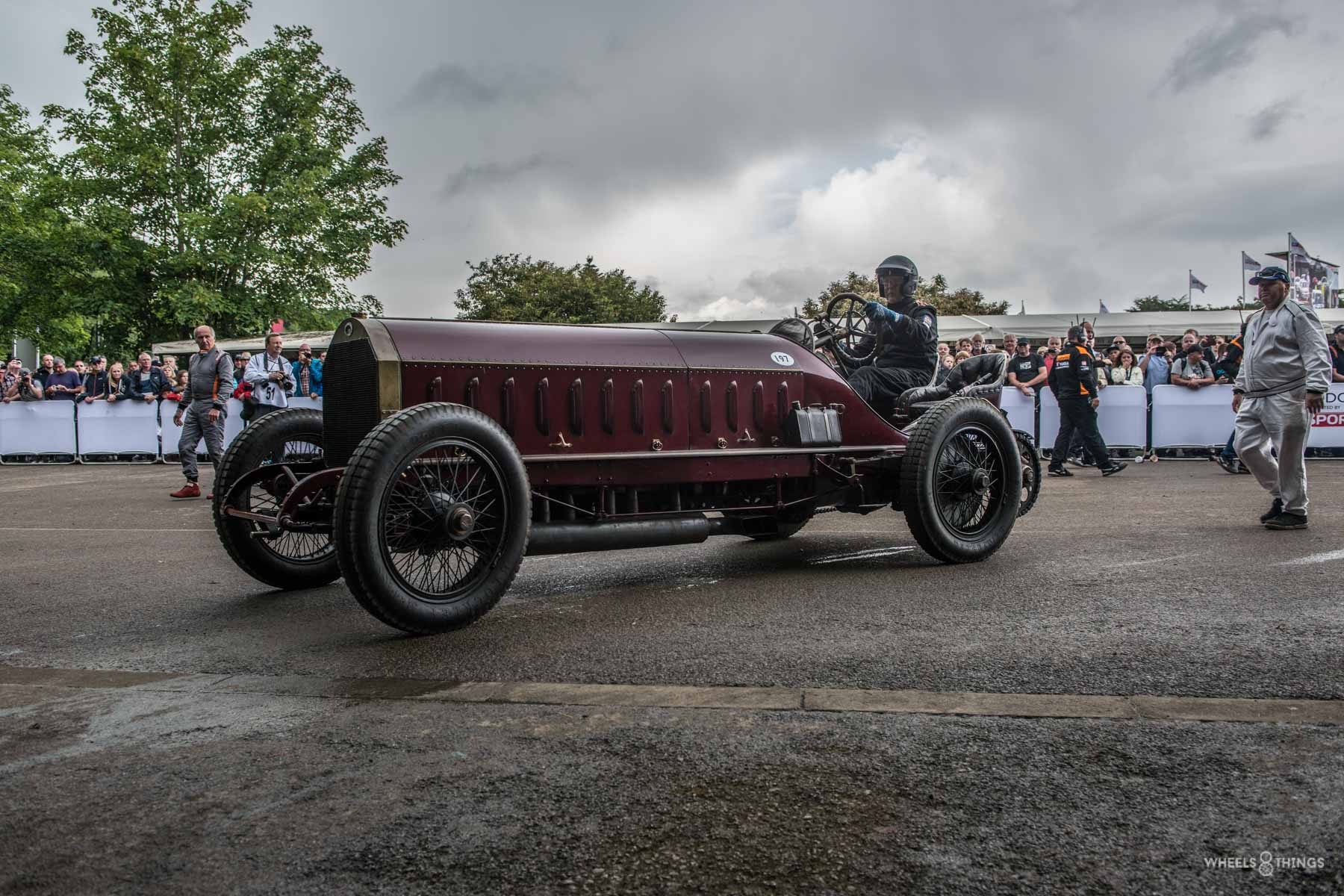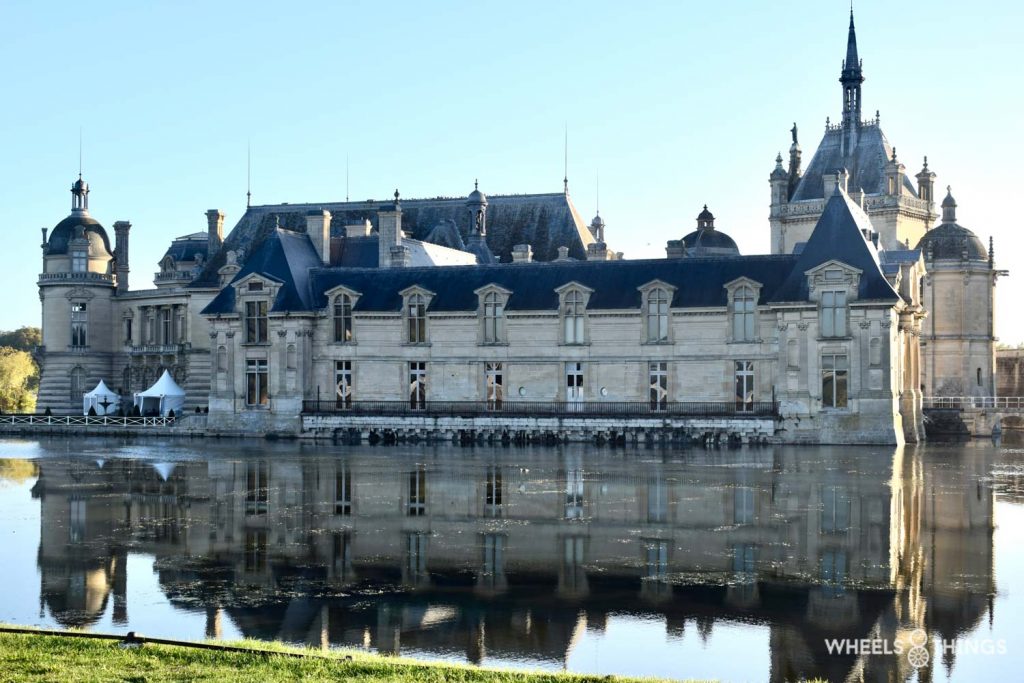
In this end-of-year period, we return to one of the finest events of the past year: the Chantilly concours near Paris. In these dark days, we want to let you enjoy the many and beautiful historic cars we came across. Enjoy reading and especially watching!
After a three-year wait, the sixth edition of Chantilly Arts & Elégance was finally back on the Peter Auto organisation’s calendar. The beautiful grounds of Chantilly Castle were the setting for the Concours d’ Elégance and the Concours d’ Etat for the election of the most beautiful cars driving around our globe.
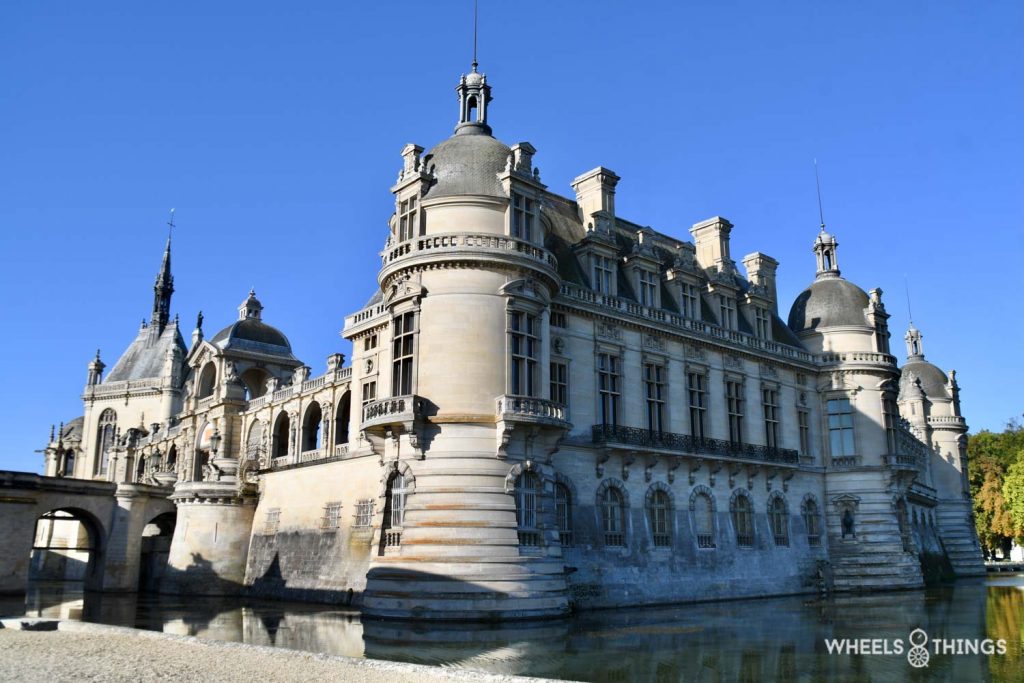
Chantilly Castle is a gem of French heritage. Located 40 km north above Paris, the original building ( then a fortress ) dates from the 16e century. It was later greatly enlarged with a real castle but this structure was completely destroyed during the French Revolution. In the 19e century it was rebuilt in almost the same configuration on top of it. The estate covers 115 hectares and also includes the large horse stables that were added in the 18e century. These are used today as a museum of the horse.
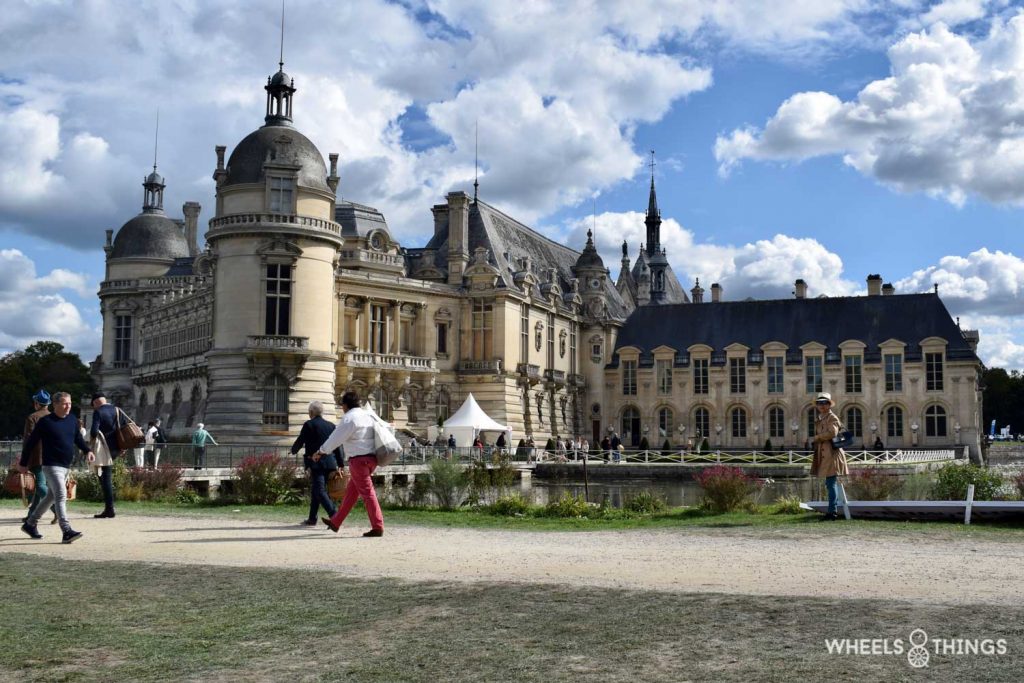
About 100 cars had registered for the Concours d’ Etat. These were divided into seventeen classes. A winner was chosen for each class and this winner could then compete for the title “Best of Show” at the end of the day. This did involve a division with a pre-war and a post-war winner. We go over the classes.
CARROZZERIA TOURING
This class was the largest of the event with a pre-war, a post-war and a post-2000s series. They were a tribute to Roland D’ Ieteren, who died in 2020, who also owned the Italian coachbuilder with his automotive empire, and had done so since 2006.
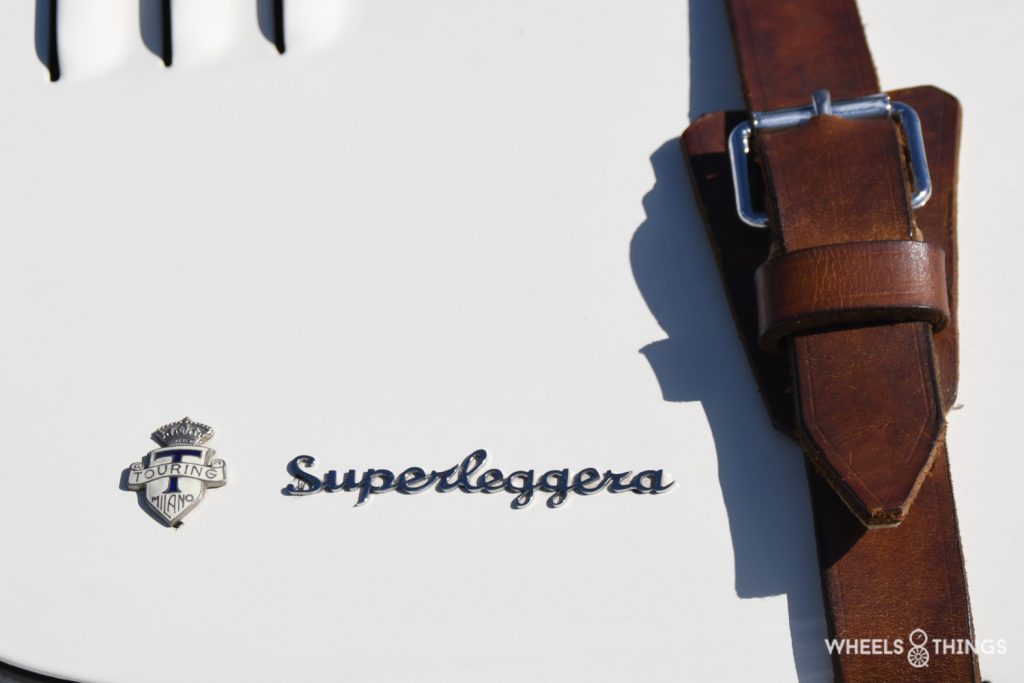
Carrozzeria Touring saw the light of day in 1926. At that time, it was quite common for a customer to buy a driving chassis without bodywork from a car brand. He then took it to a coachbuilder who usually fitted it with a unique or at least rare bodywork. At Touring, they preferred light bodies that were named “Superleggera” because the less weight, the faster the car.
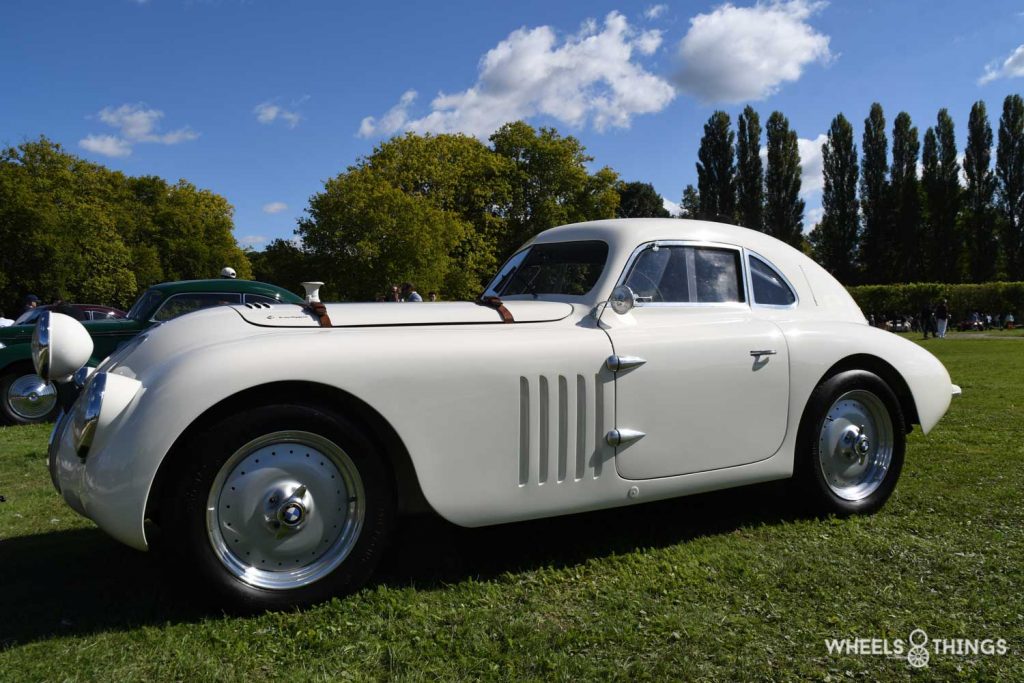
In the pre-war class, apart from one BMW 328 Mille Miglia, we find only Alfa Romeos. We must admit that this really was a top series with some cars more beautiful than others. It is therefore a difficult decision for the 60-strong, very international jury. It finally chose the 1939 Alfa Romeo 6 C 2500 SS Touring as the winner.
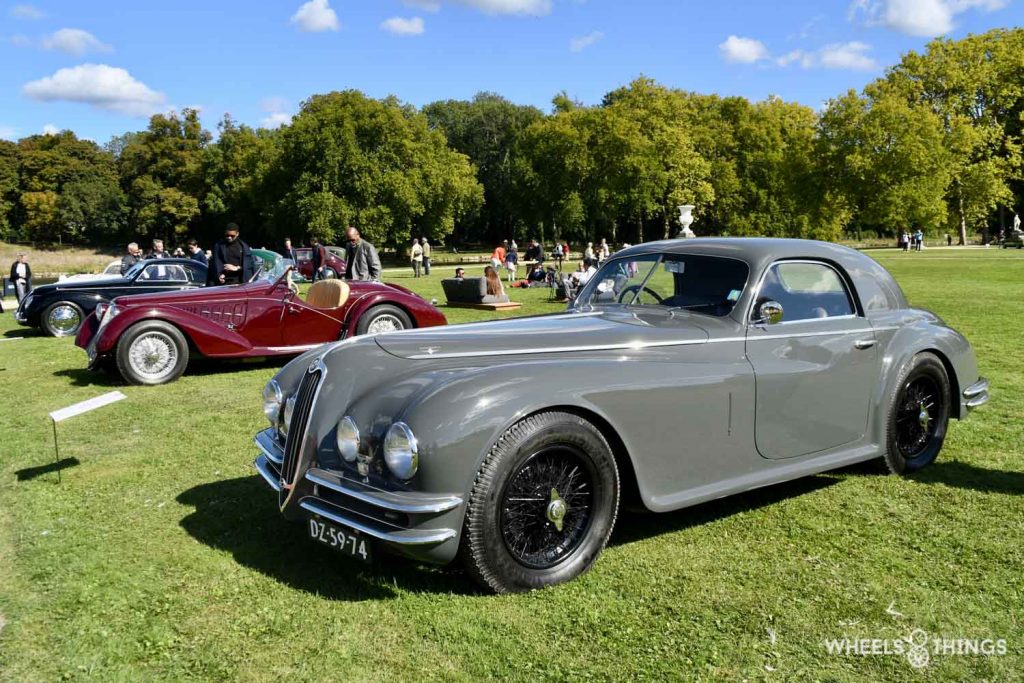
A special mention goes to another Alfa Romeo with the 1931 6 C 1750 GT aerodinamica. This Alfa Romeo, with its three red headlights, won its series in the 1933 Mille Miglia.
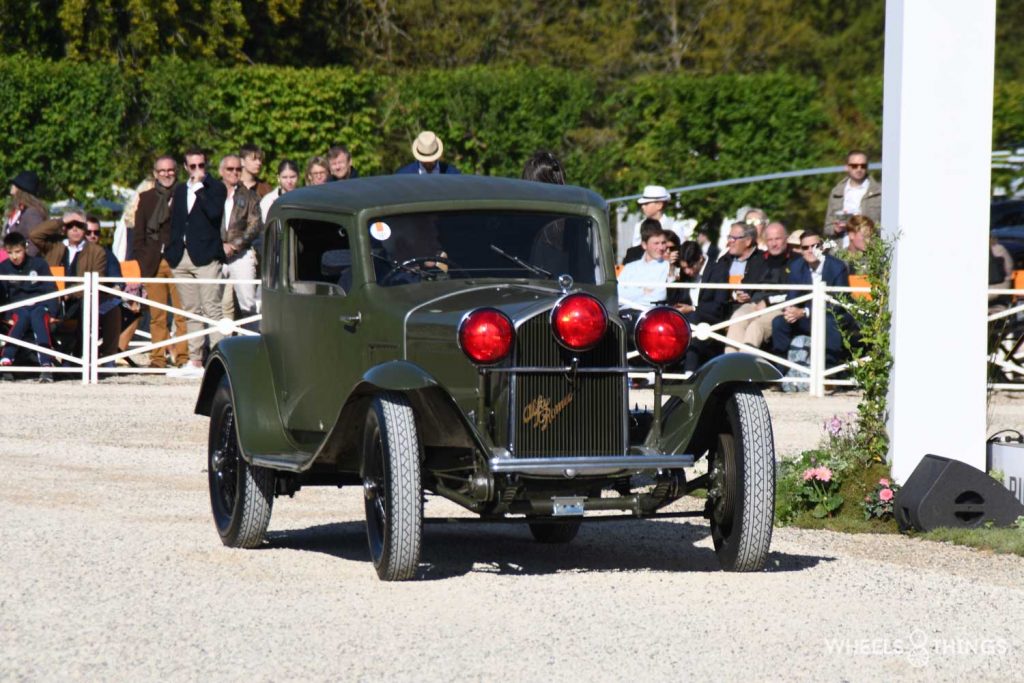
The post-war class also found some very nice machines with again an Italian supremacy with Alfa Romeo, Maserati, Lancia and Lamborghini. But also two “foreigners” with a Spanish Pegaso and an English Aston Martin. Touring’s customers in that period apparently came as from a little further afield.
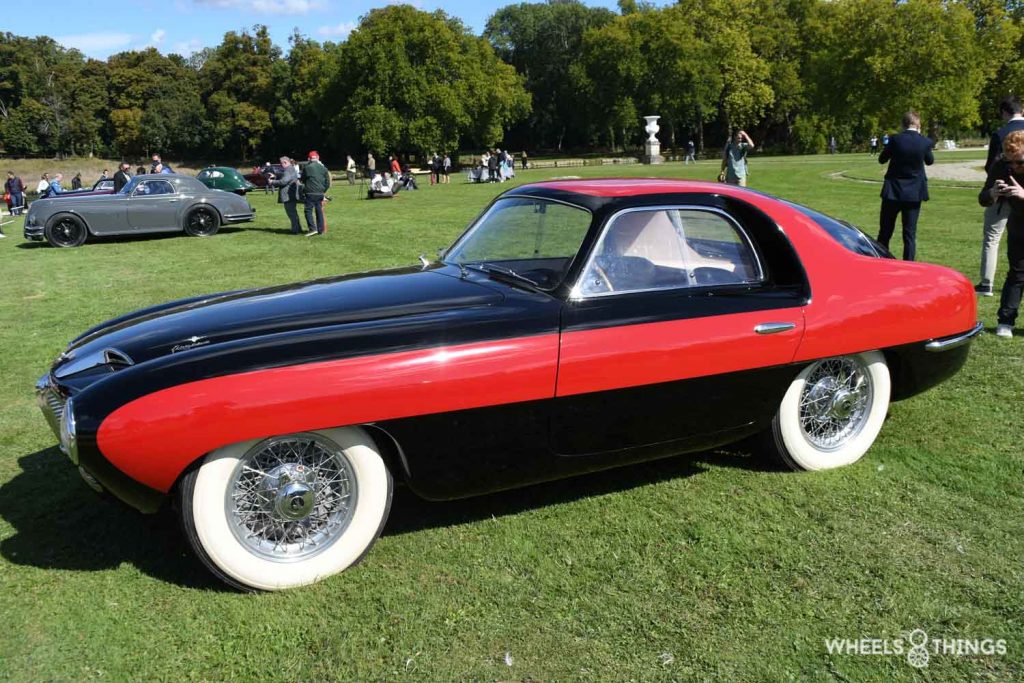
The win was again for Italy with a 1954 Alfa Romeo 1900 SSC Touring Superleggera. The standard Alfas of the 1950s were already masterpieces and this 1900 SSC raised the bar even higher.
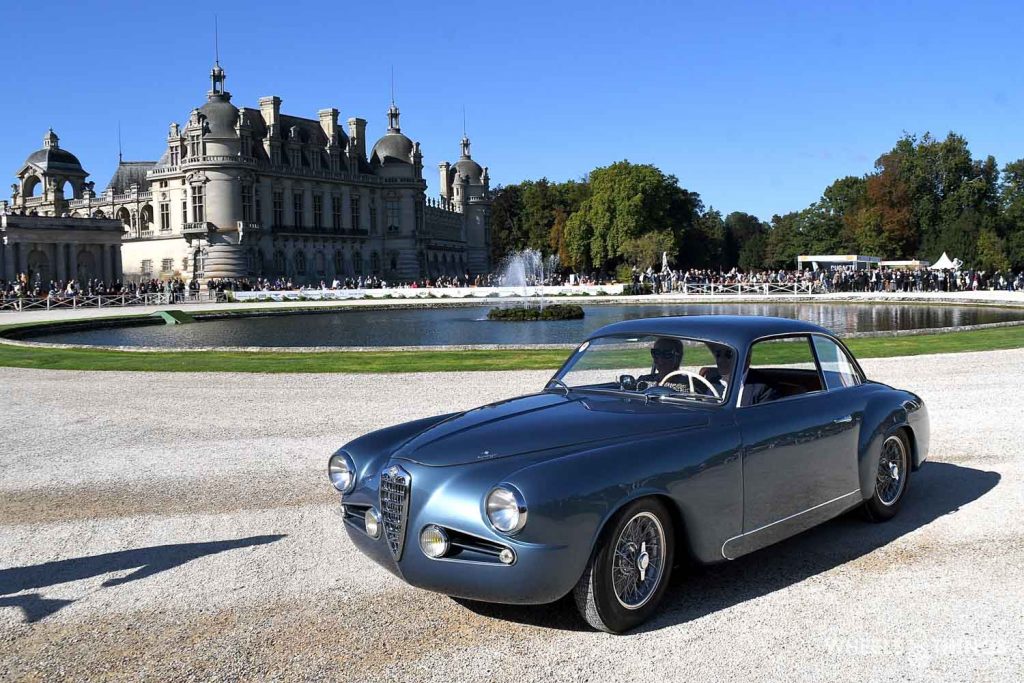
Surely, the competition was no mean feat, including a Maserati 3500 GT, a Lancia Flaminia GT, a Lamborghini 350 GT, a Pegaso Z 102 and an Aston Martin DB4 Convertible.
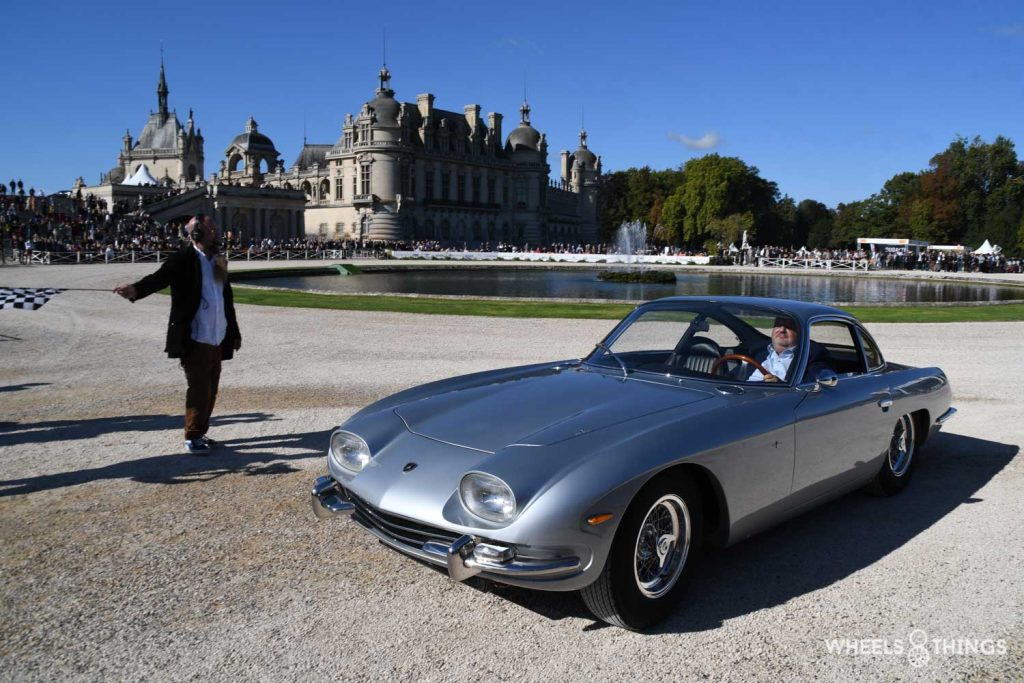
Surely this high level is much lower in the post-2000 series. They may be hand-built bodies, but whether they are better than the original we dare to doubt. So you can judge for yourself the 2004 Maserati Bellaggio Fastback Touring. We still opt for the original version of this “Quattroporte”.
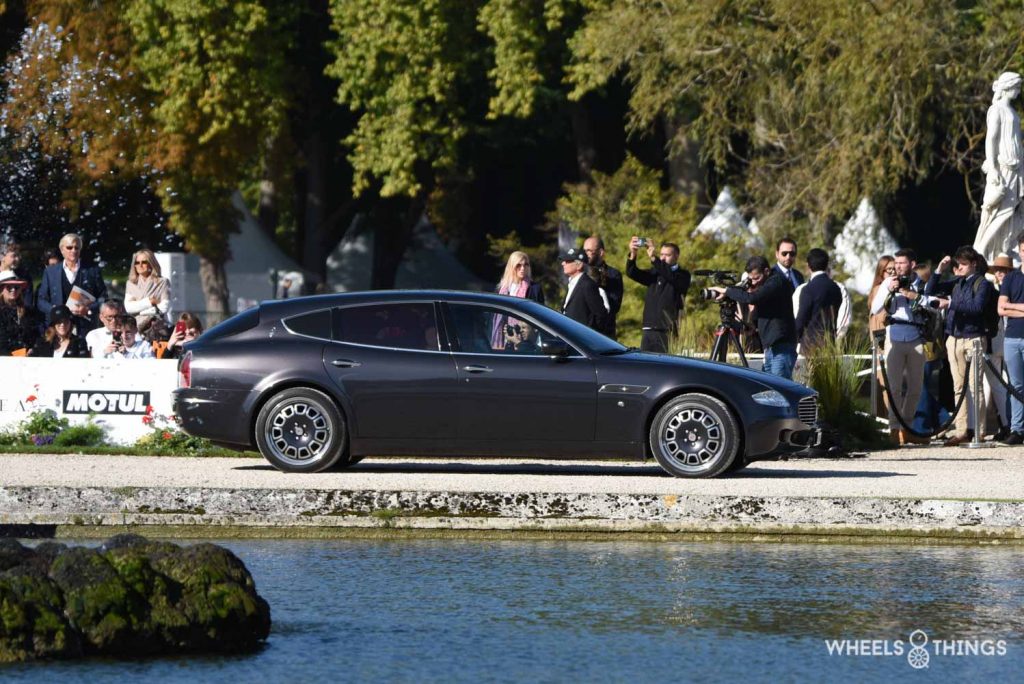
We then found the most successful to be the 2008 Alfa Romeo Disco Volante. Based on an 8C, Touring built this Disco Volante. A Spider version would follow later.
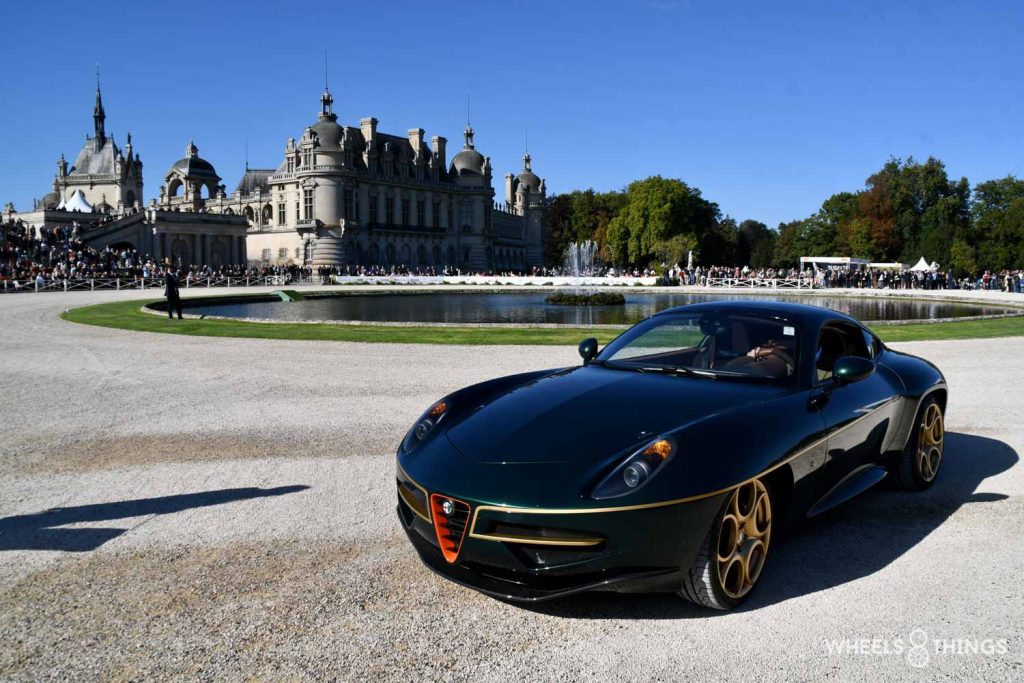
In this series, there was also a concept car of a Mini that BMW had built at Touring.
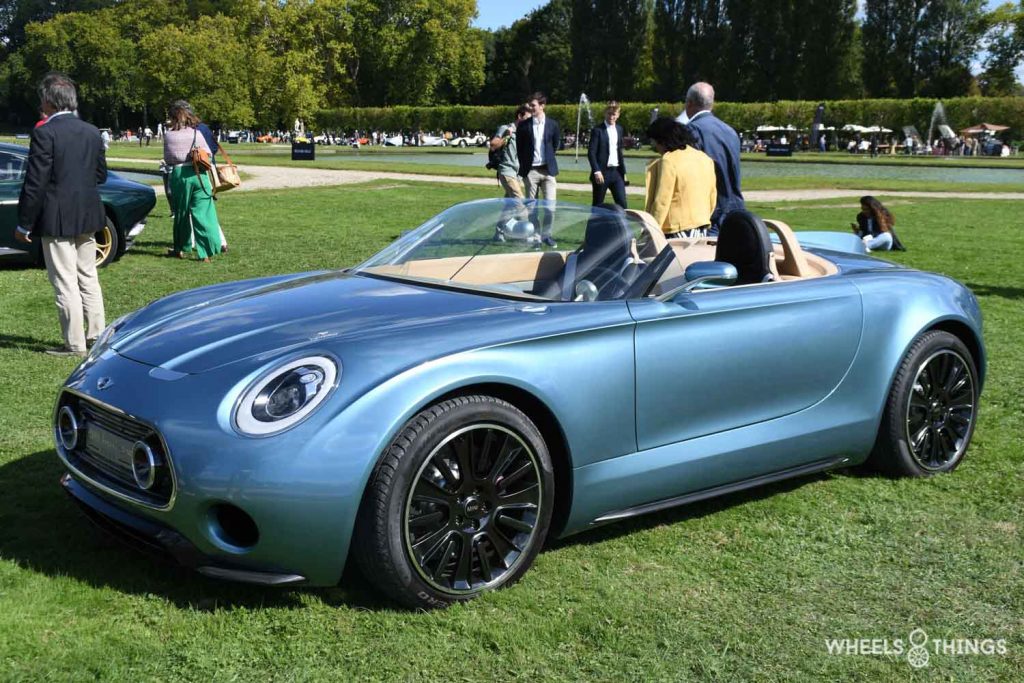
Apparently, the prettiest does not always win because it was the Touring Superleggera Aero 3 that went home with the first prize. This Aero 3 is based on a Ferrari F 12 berlinetta and its bodywork refers to pre-war cars where people were looking for speed and aerodynamics. You can judge for yourself.
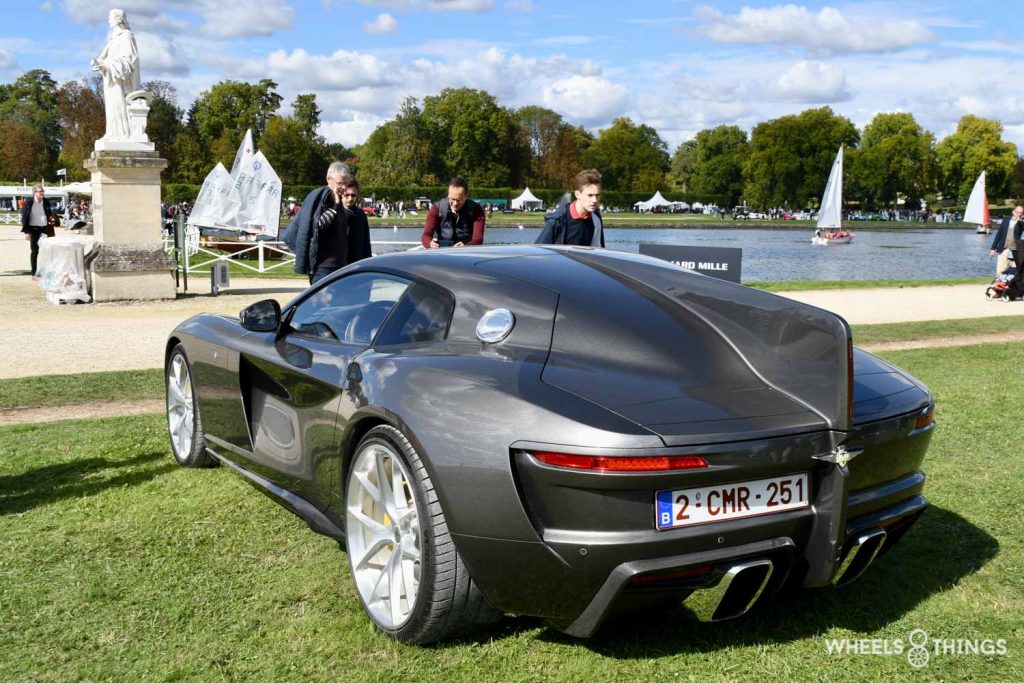
RACING CARS FROM 1905 – 1925
We continue with these pioneers in motorsport. When this was still in its infancy, engine builders were looking for power. So we see such diverse creations as a 6 cylinder with 7.8 litre capacity , a V12 engine with 1050 cc or a 4 cylinder with 16 litre capacity in a Fiat 130 HP! And as its name suggests, it delivers 130 HP with which a top speed of 160 km/h was reached in 1907!!! A hallucinatory speed in those years.
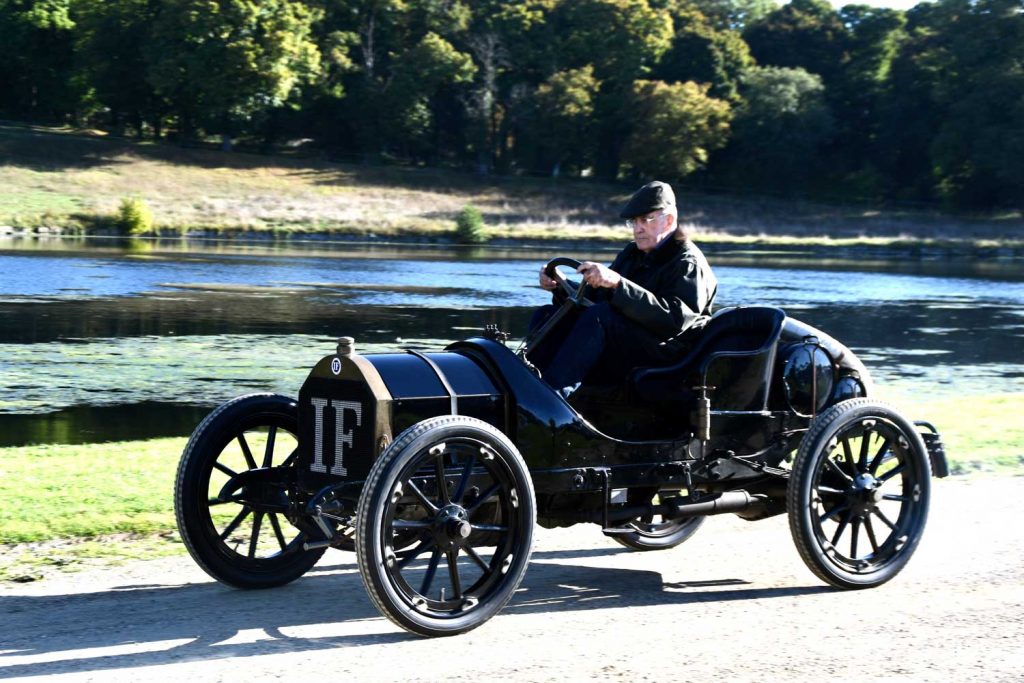
Lots of Italian violence in this class too, with some FIATs, an Italia, an Aquila Italiana and an Isotta Franchini. But the Italians have to leave the win to a 1920 French Ballot 3/8 LC Grand Prix.
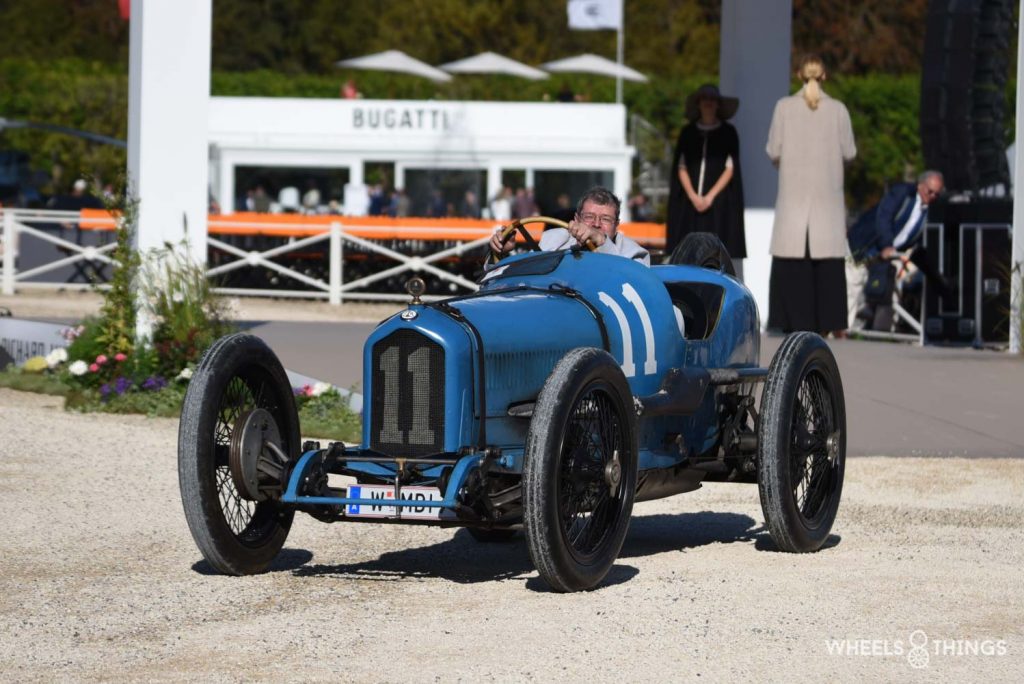
Ballot was originally a marine engine manufacturer. They designed and built this 3/8 LC Grand Prix equipped with a three-litre 8-cylinder. This No 11 achieved seventh place in the 1920 Indy 500. Two years later, they did even better with a third-place finish. Between these two American races, this Ballot was also winner of the first Grand Prix of Italy in 1921.
24 HOURS OF LE MANS: SPEED AND AERODYNAMICS AT THE HUNAUDIERES
“La ligne droite des Hunaudières” is a name that rings a bell in the motorsport world. It used to be a long almost straight line, of 6 kilometres, between the corners of “Tertre Rouge” and “Mulsanne” on the Le Mans circuit. Top speeds of up to just over 400 km per hour were achieved on this stretch of public road. After several serious accidents, two chicanes were installed in 1990 to slow down the speeds.
Teams and constructors were constantly looking for top speed. Aerodynamics were certainly the solution to this and from the 1950s onwards we saw these streamlined cars, with or without wings, appearing on the circuits. We found in this class quite “simple” cars like a 1954 Bristol 450 Le Mans or a 1964 CD Panhard LM 64 but also quite sophisticated machines like a 1981 Lola T 600 with streamlined bodywork and a built-in venturi tunnel to obtain more speed.
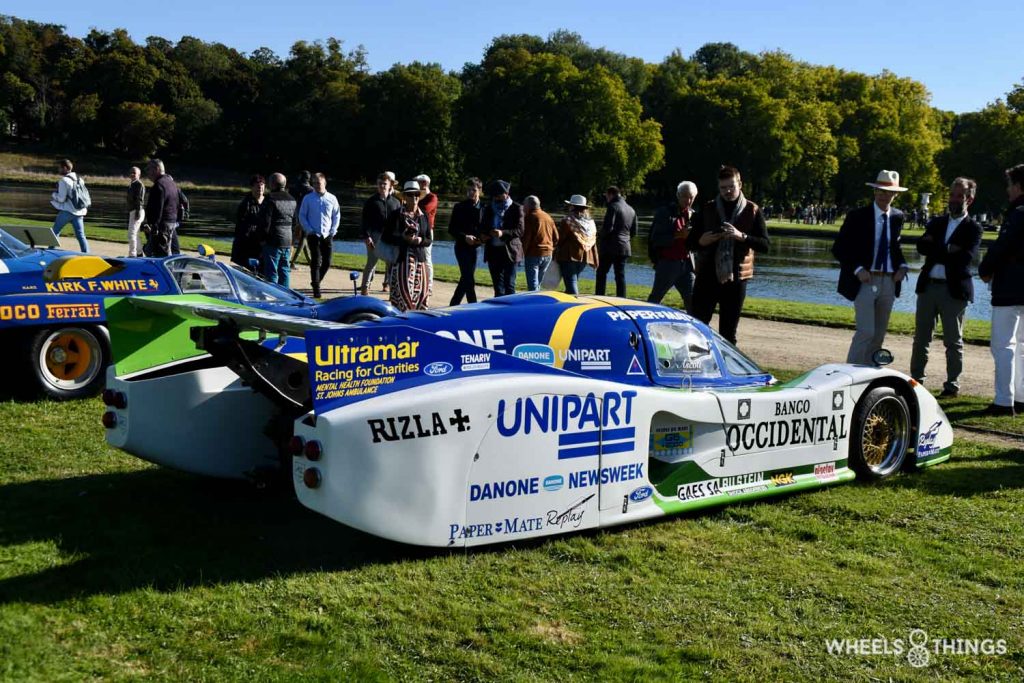
But it can be even more extreme with this 1992 Peugeot 905 Evo 1. To win, you have to make continuous improvements. The first 905 was replaced by this Evo 1 version and was able to win the 24 hours of Le Mans in 1992 and 1993. The 905 Evo 1 on display came third in 1992.
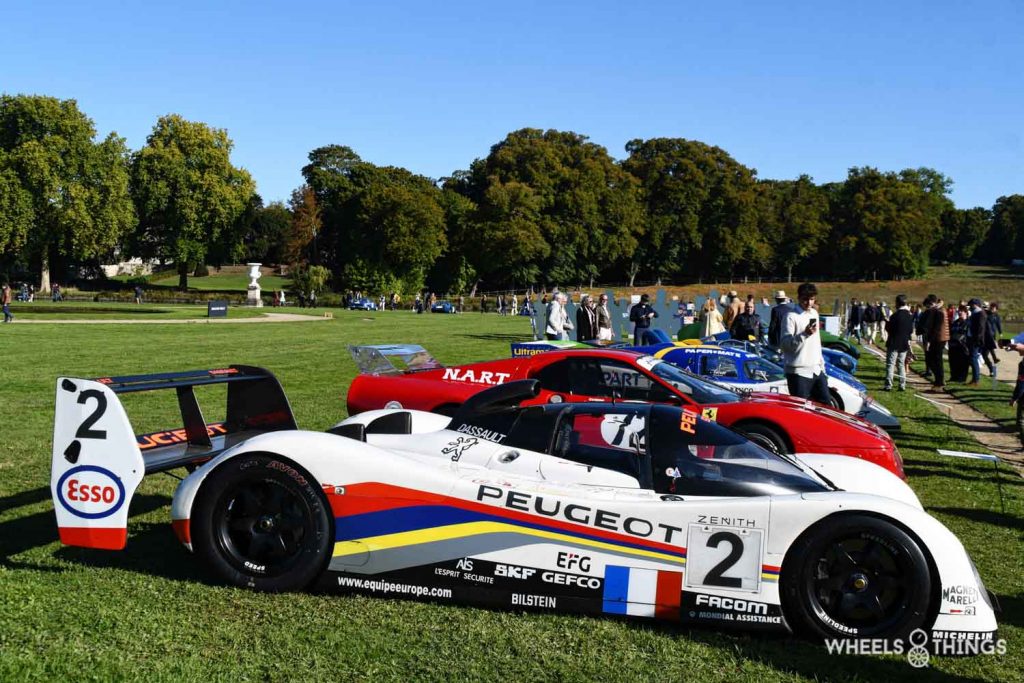
Also in this series are two Ferrari 512s: a 1981 BBLM and a 1971 M. The BBLM is a Berlinetta Boxer that was fitted with a very aerodynamic bodywork designed by Pininfarina. This red BB was the last Ferrari to be entered by Luigi Chinetti’s NART team in the 24 hours of Le Mans. Chinetti himself won the race three times as a pilot and later returned to his favourite race in France each time with his own team.
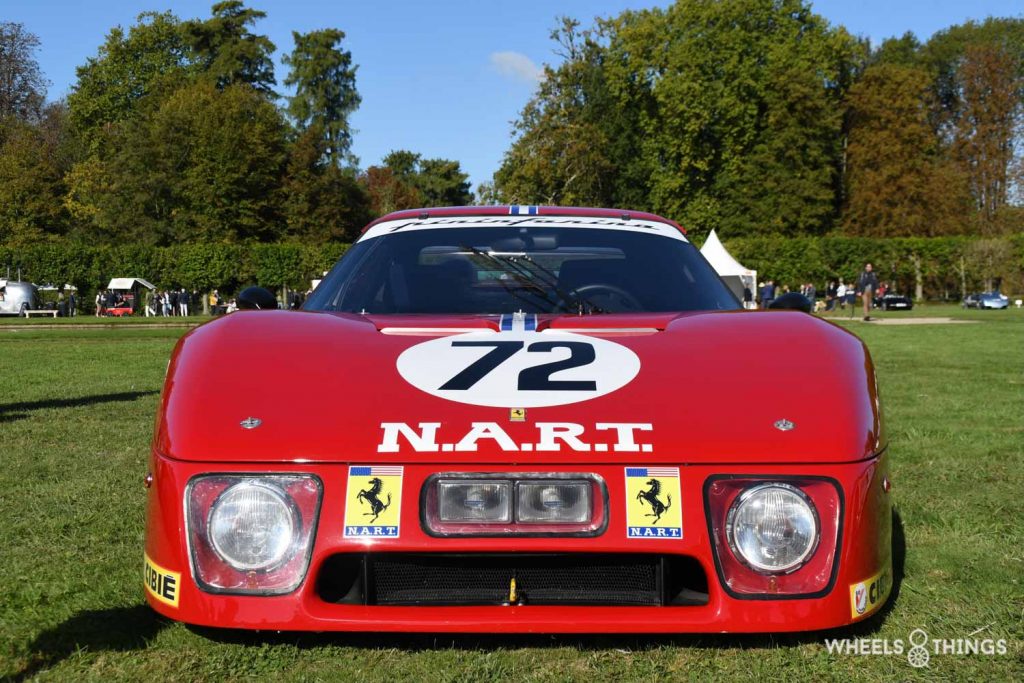
The winner of this series was Roger Penske’s stunning Sunoco Ferrari 512M. We already came across this one at the Festival of Speed at Goodwood and you can find all further info on this thoroughbred here.
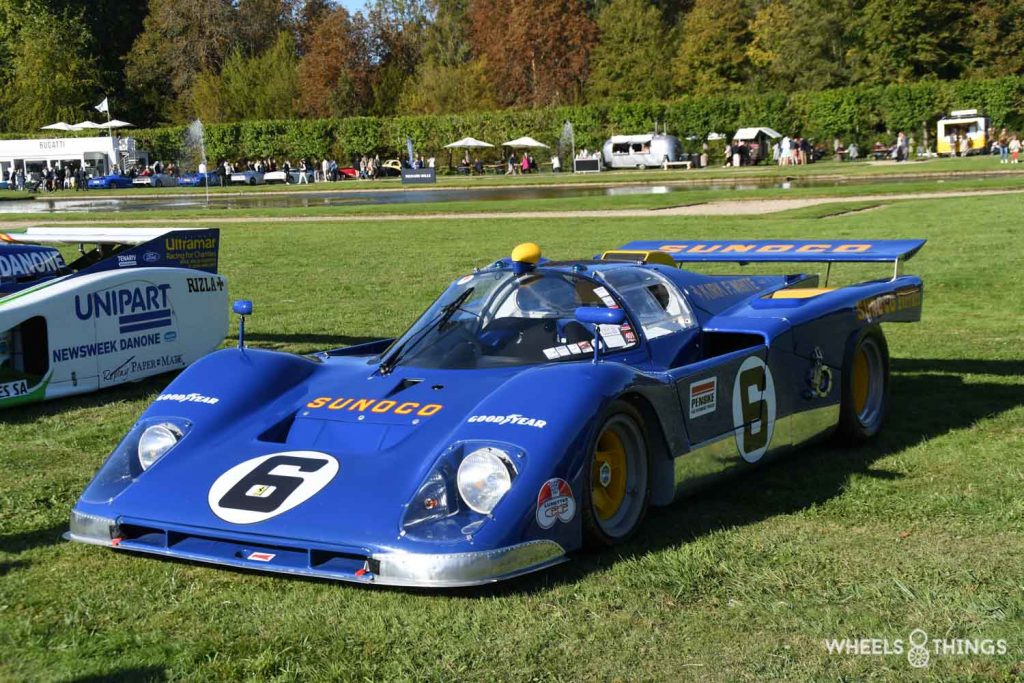
Among all this violence, we could admire the exclusive trophy designed for the celebration of “100 years of Le Mans 24 Hours” in 2023. Indeed, it will then be 100 years since this race was run for the first time. This trophy will then be for the winner of the 2023 edition. A unique fact because in normal circumstances, you have to win three times in a row to definitively take home the victors’ trophy. This 100 years version was presented last summer at the Pebble Beach Concours, then travelled to England for the Goodwood Revival and is now back in its home country France.
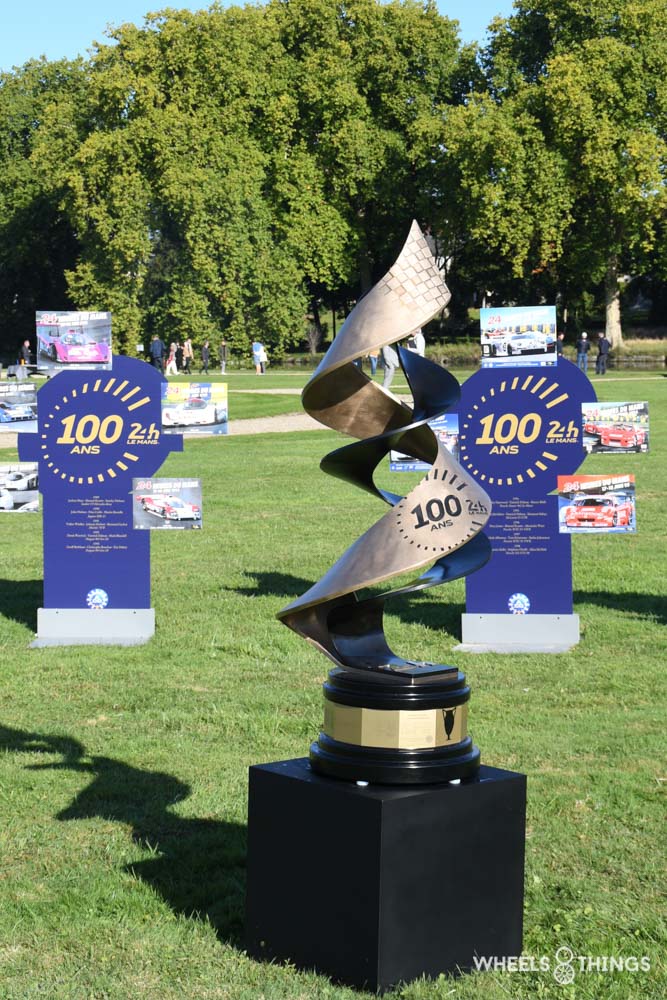
THE 24 HOURS OF LE MANS: THE SEARCH FOR PERFORMANCE
The organisers of the 24 Hours of Le Mans have always played a leading role in defining the regulations. The constructors developed applications that could then later be used in the production of standard cars. E.g. the quest for power, fuel consumption restrictions and currently the switch from petrol to hydrogen is high on their list of priorities. From 1926 to 1971, there was a series “L’ indice de performance. The team that could cover the most kilometres with the smallest engine capacity was the winner. In this way, cars with small engines also had a chance of glory.
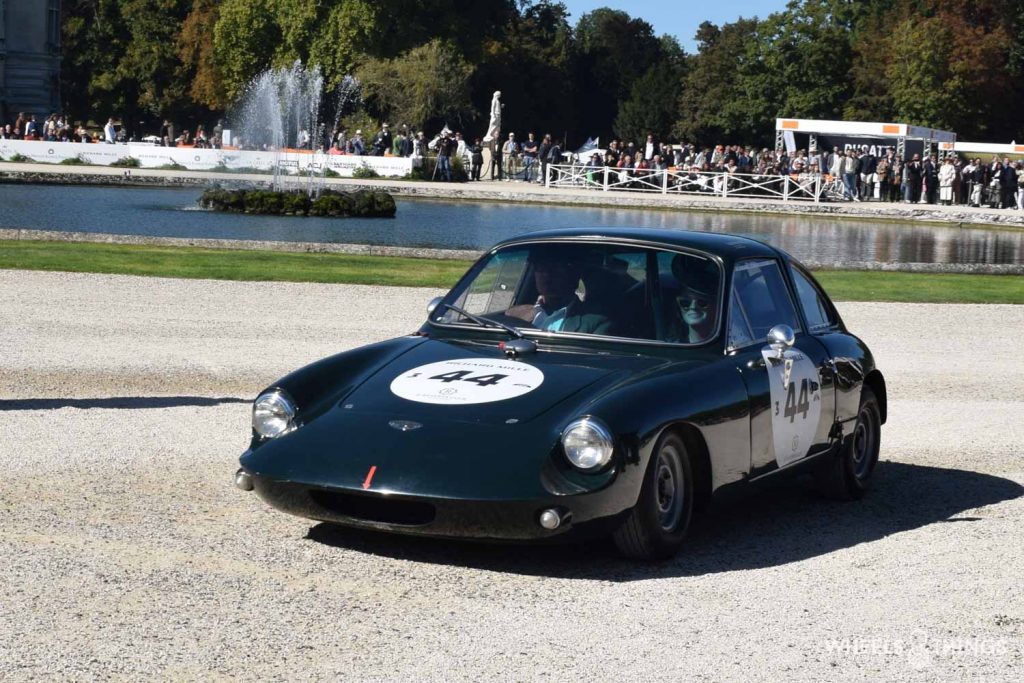
So we saw a 1963 Deep-Sanderson DS 301 that used many parts of the Mini Cooper for a 24-hour race against much stronger competitors. Engine and gearbox were taken over and placed behind the pilot. The Mini’s front suspension was also used. You just have to make do with such a small thing. Note the wheels on this Deep-Anderson: there are grass machines with bigger ones these days!
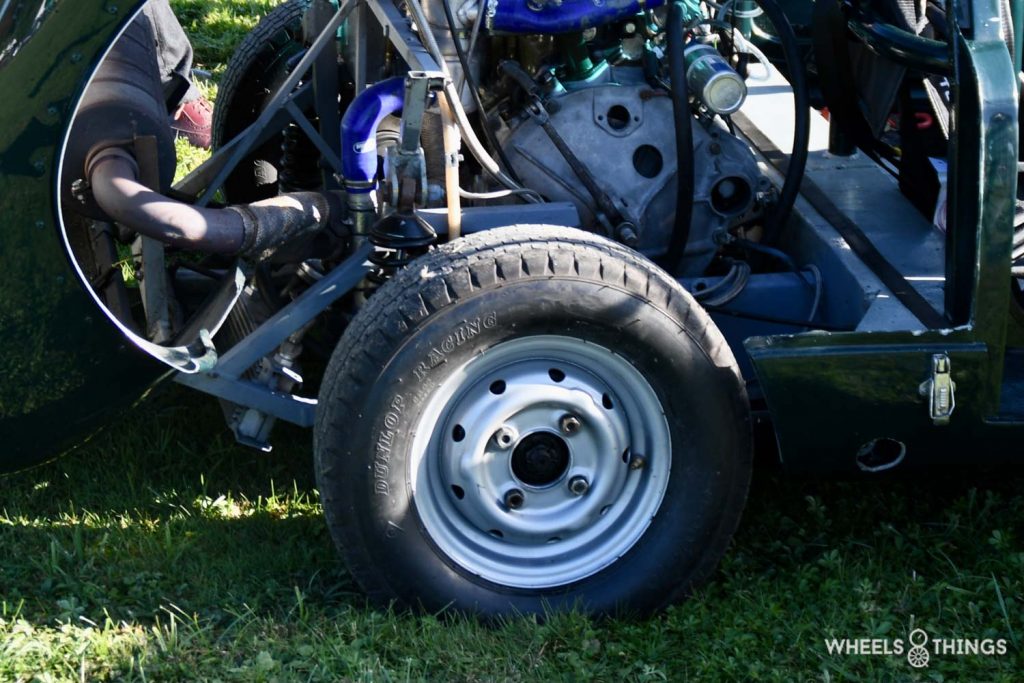
A good example of this technology was the Lotus Eleven S2 with an 1100 cc Coventry-Climax engine that delivered 71 HP. This power proved sufficient for a 500 kg Lotus.
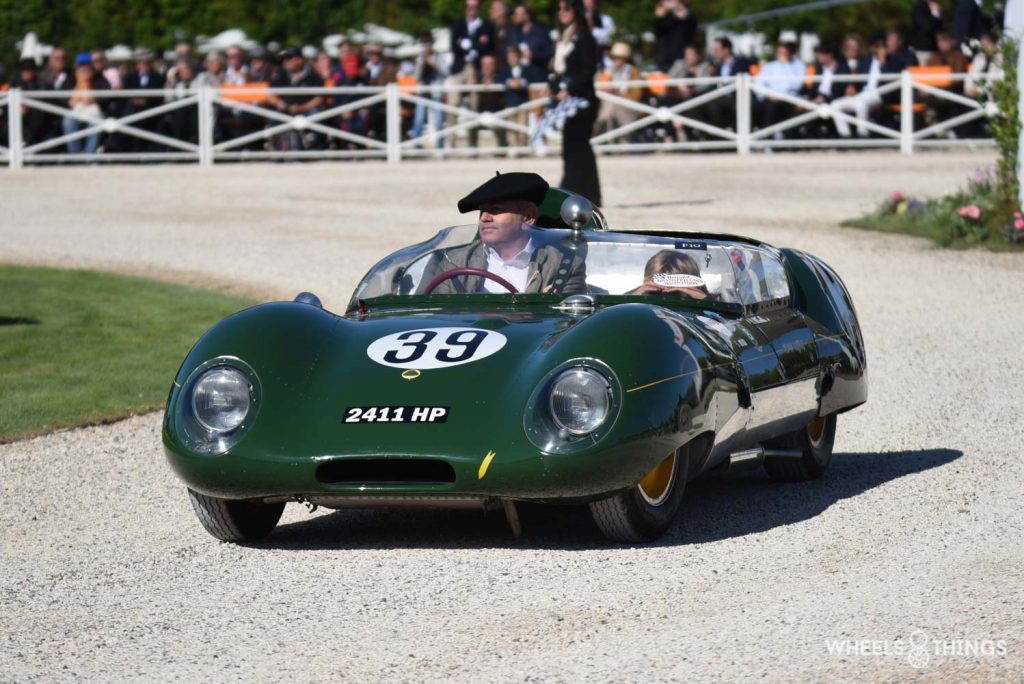
Abarth is also playing along with the 1968 1000 SP developed for customers. With its Fiat engine from the 600, boosted to 1000 cc and fitted with twin camshafts, drivers get a whopping 105 HP at their disposal. The Abarth weighs just 450 kg and is a real race car. Fiat France participates in the 24 hours as a customer but ignition problems force this beautiful proto to give up.
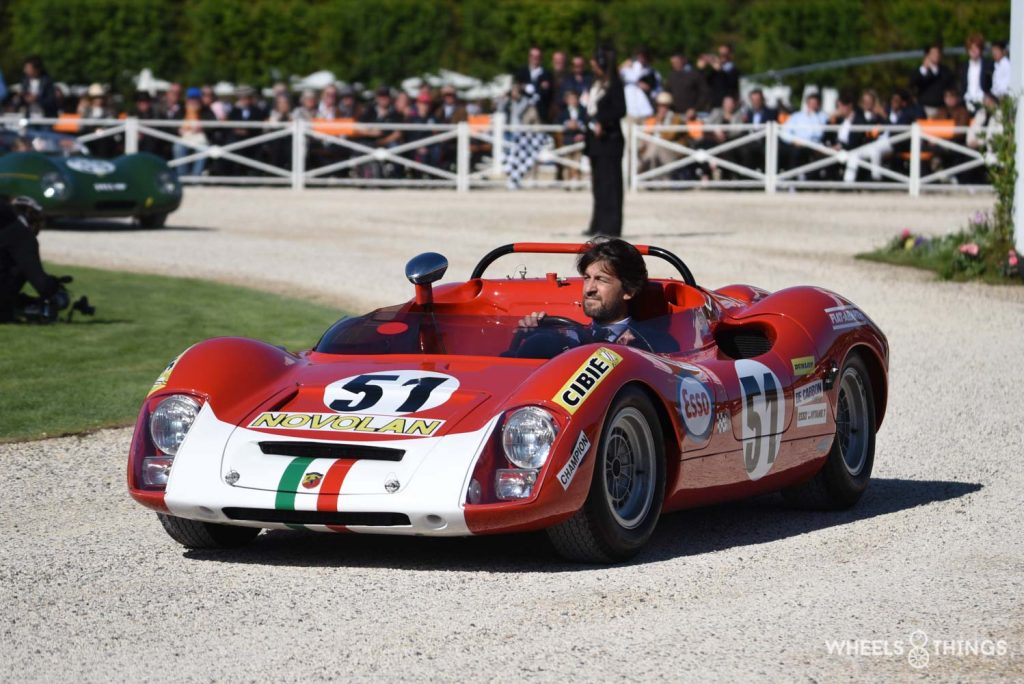
The French are obviously not to be missed and at Alpine they are used to making small and fast cars. They are doing so again today, by the way, and with very great success. This 1962 Alpine M64 wins its class with an average of 162 km per hour. Note the beautifully streamlined rear section of the bodywork. Two years later, they tried it with the Alpine A 210. The rear bodywork is even longer than its predecessor. In 1966, they do even better and achieve the complete podium in their class
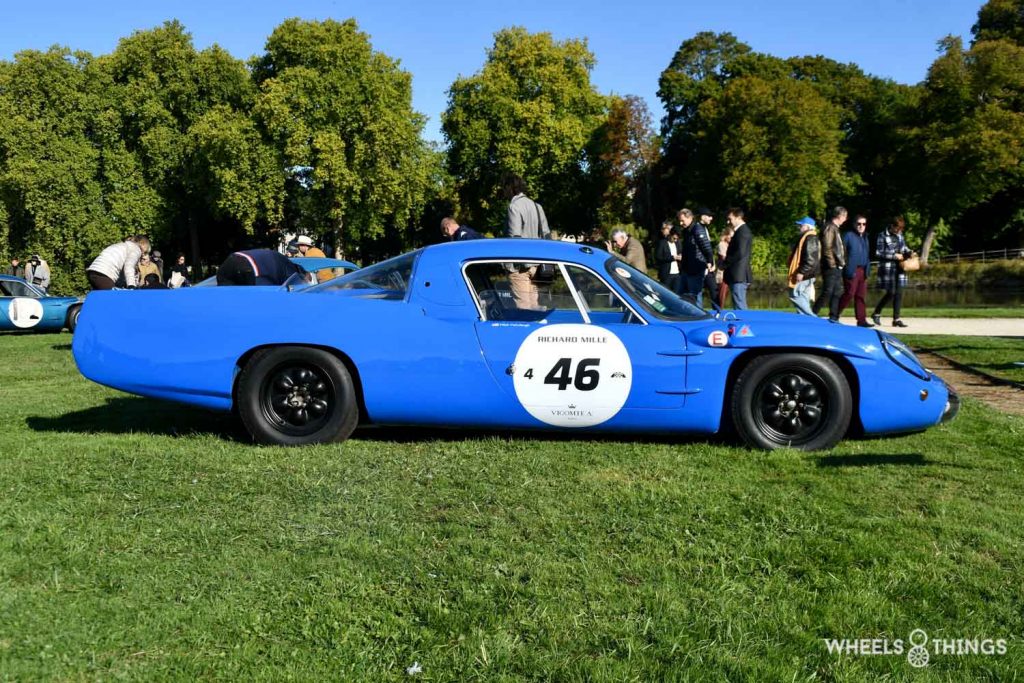
And there was also a French winner with the 1956 Panhard Monopole X86. A beautiful appearance with the typical wing doors of the period.
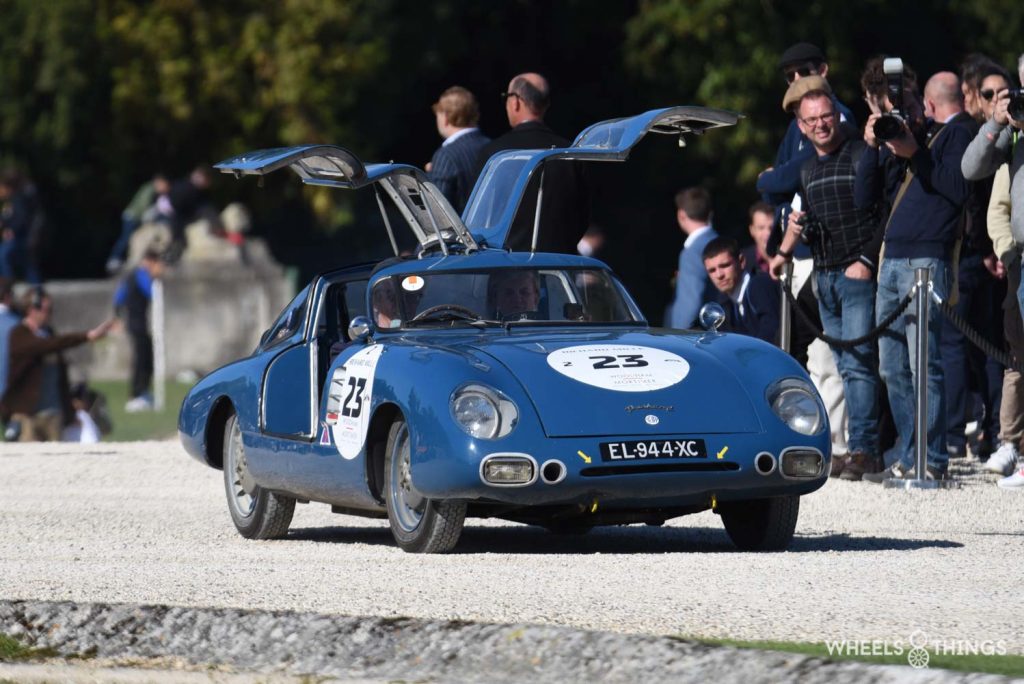
OPEN AMERICAN RACING SPORTS CARS
We start this class with the very first Chaparral built. This MK1 was the founder of this iconic American marque. Jim Hall was an airline pilot and owner of a small petroleum company. He raced in the USA with mostly European cars such as Austin Healy, Lister, Ferrari and Maserati. He decided to build his own cars with some ex-Scarab designers and the rest is history. Chaparral will build cars for the World Championship and Le Mans but the Canam will also be on their programme. We saw one such Canam at the Festival at Speed in Goodwood.
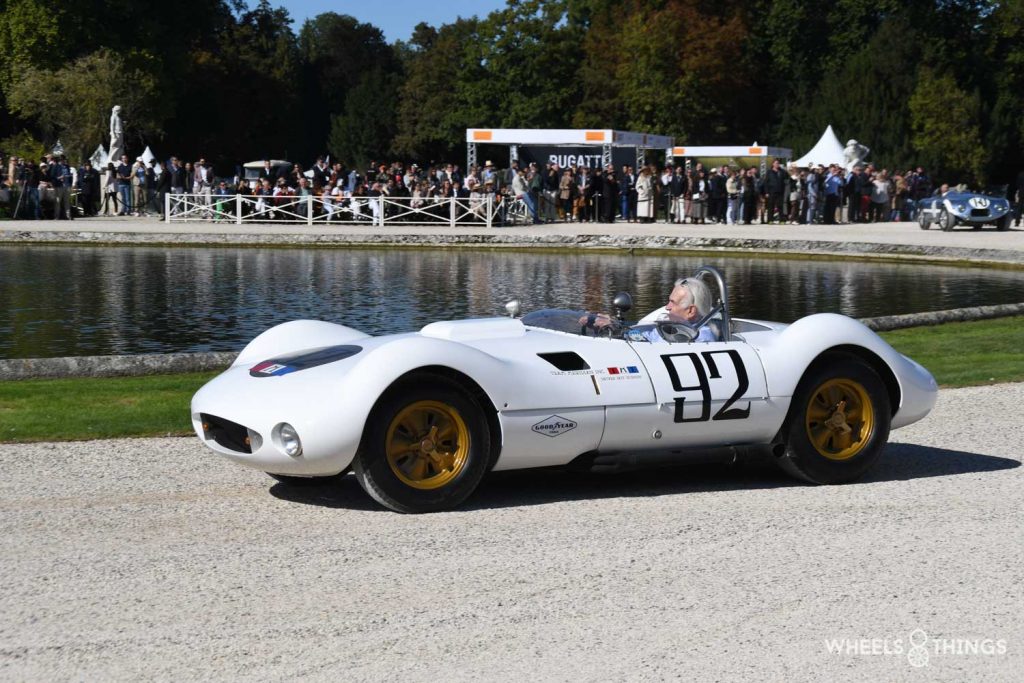
Among the participants a unique Kurtis Craft 500 S which, equipped with a powerful Cadillac V8 engine, competed twice in the Carrera Panamericana in 1953 and 1954. This 3500km race was organised five times, cutting through goose Mexico in five days. Sort of a South American “Mille Miglia” but much tougher. The dirt roads in Mexico could not be compared to the Italian asphalted routes.
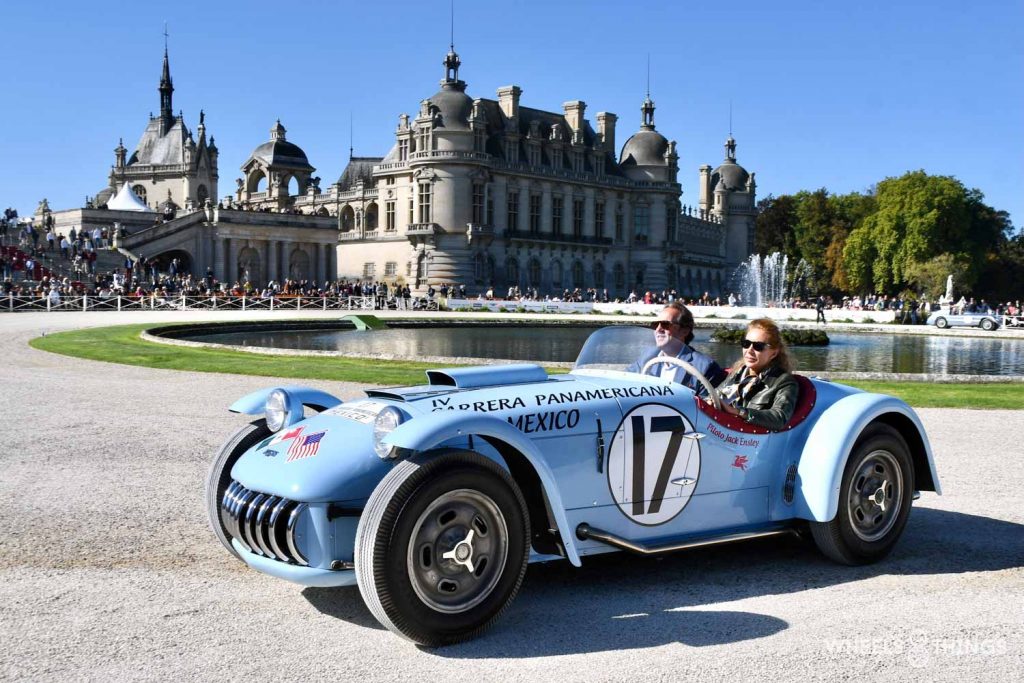
Victory in this class was also for a Kurtis but this one was fitted with a Buick V8 engine. This 500 X took nine victories in the 1955 California championship.
CARS IN THEIR ORIGINAL STATE
A car is only in its original condition once it leaves the factory. Everything that happens to it after that such as repairs or even restorations reduce the authentic or original state of the vehicle. A restoration may be as well done, but it is not the same.
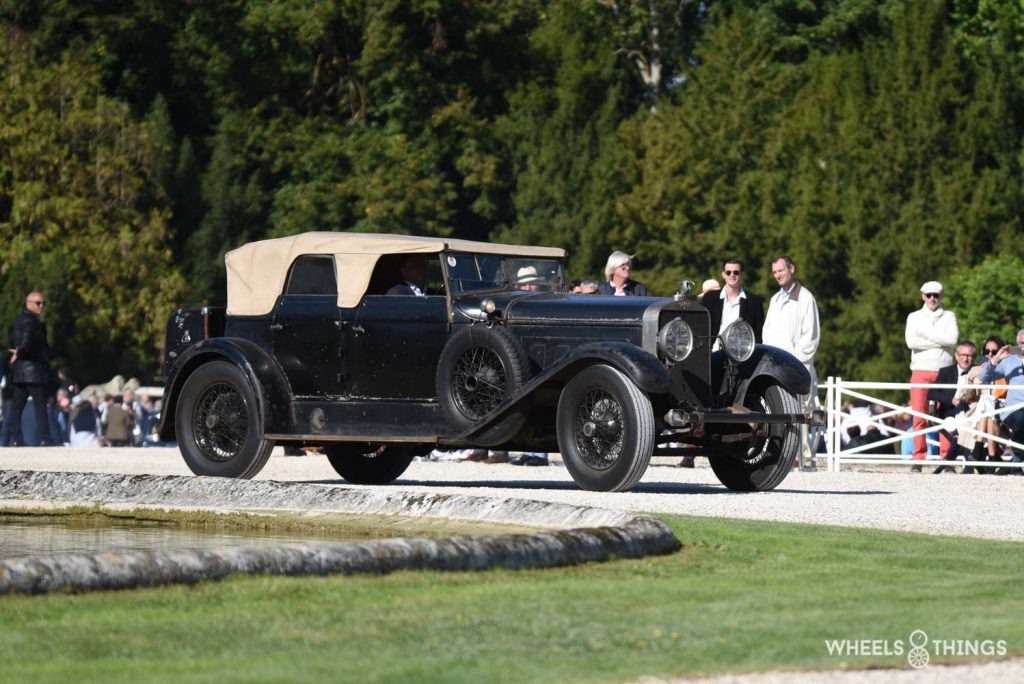
With the passage of years, wear and tear parts appear on the car and this both on the outside and inside. Nowadays, this is called “patina” and there are a number of enthusiasts who prefer to leave their car as it is instead of having a restoration done. Of course, as with many discussions, there are proponents and opponents.
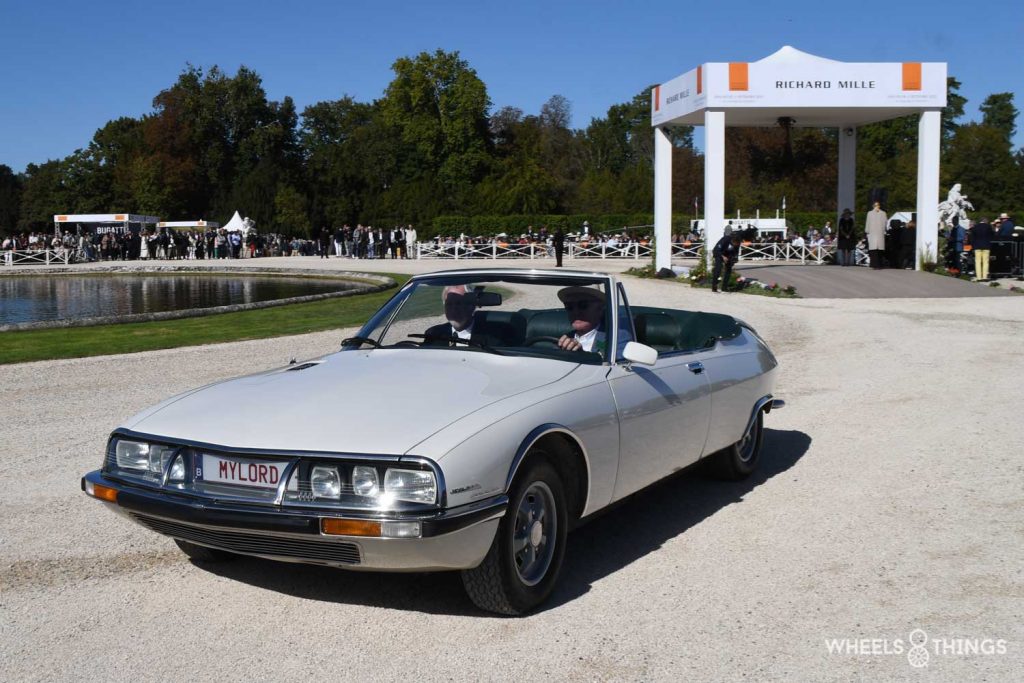
With a pre-war and a post-war series, there were obviously two winners and it was indeed the oldest entrant, a 1904 Pipe Serié E, that walked away with the first prize. In the post-war class, Chapron’s Citroën SM Cabriolet “Mylord” was the best and rightly so, because this white SM is still in a beautiful condition.
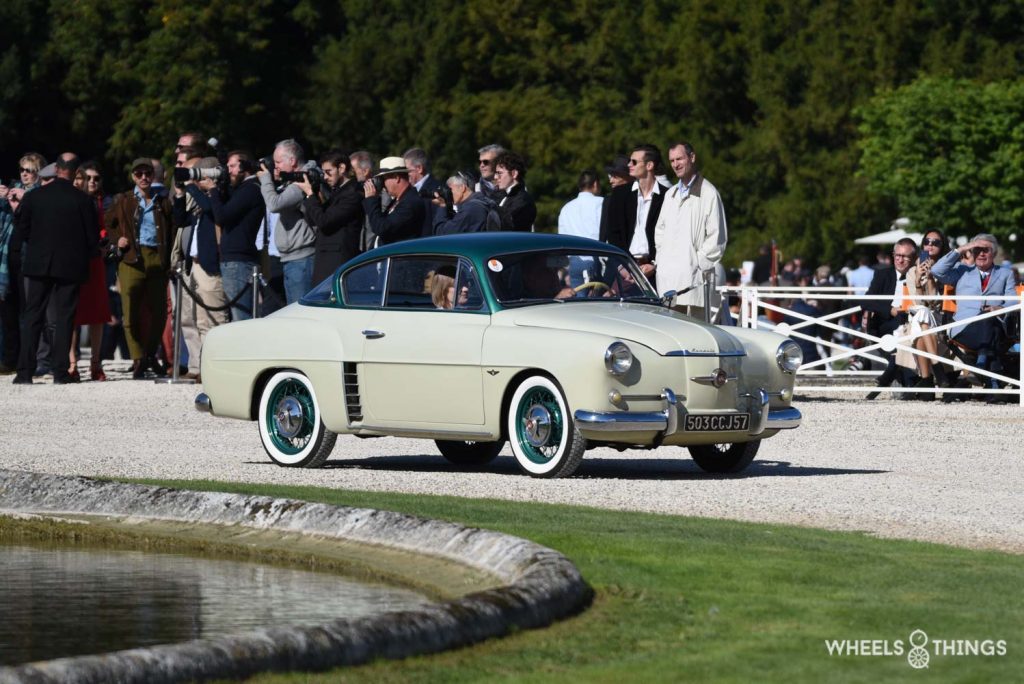
Another realisation by Henri Chapron with this Autobleu 4 CV. Based on a Renault 4 and with a design by Italian Ghia, Chapron built this beautiful bodywork. You already have to look far to find another Renault 4 CV in here. And craftsmanship because the car is still in top condition today.
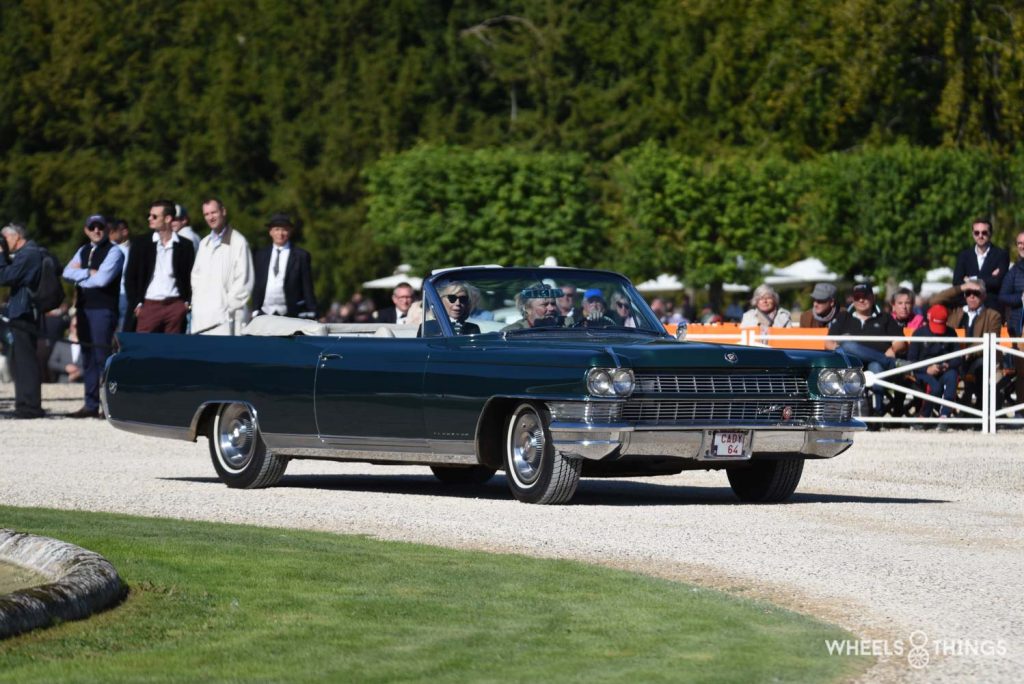
The Americans were also well represented here with a gigantic 1964 Cadillac Eldorado Cabriolet and a 1959 Plymouth Fury. This Fury would later become world-famous in John Carpenter’s film “Christine”. The first owner drove just 396 miles in 40 years with this Fury. After that, the Plymouth ended up in a museum and then in the current owner’s collection. Meanwhile, there are just over 4,000 miles on the odometer which is an average of 64 miles per year. A one-of-a-kind piece.
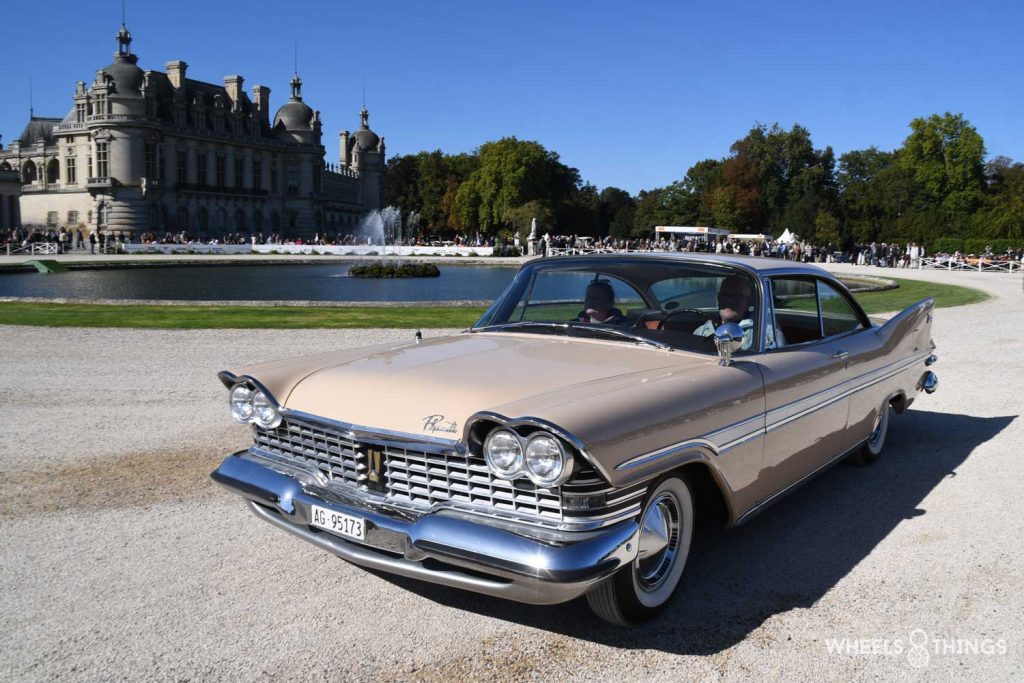
ICONOCLASTIC CARS FROM 1968 TO 1980
The automotive world is constantly looking for innovation and improvements. Some studies or designs go against the normal flow and do create surprises or special cases.
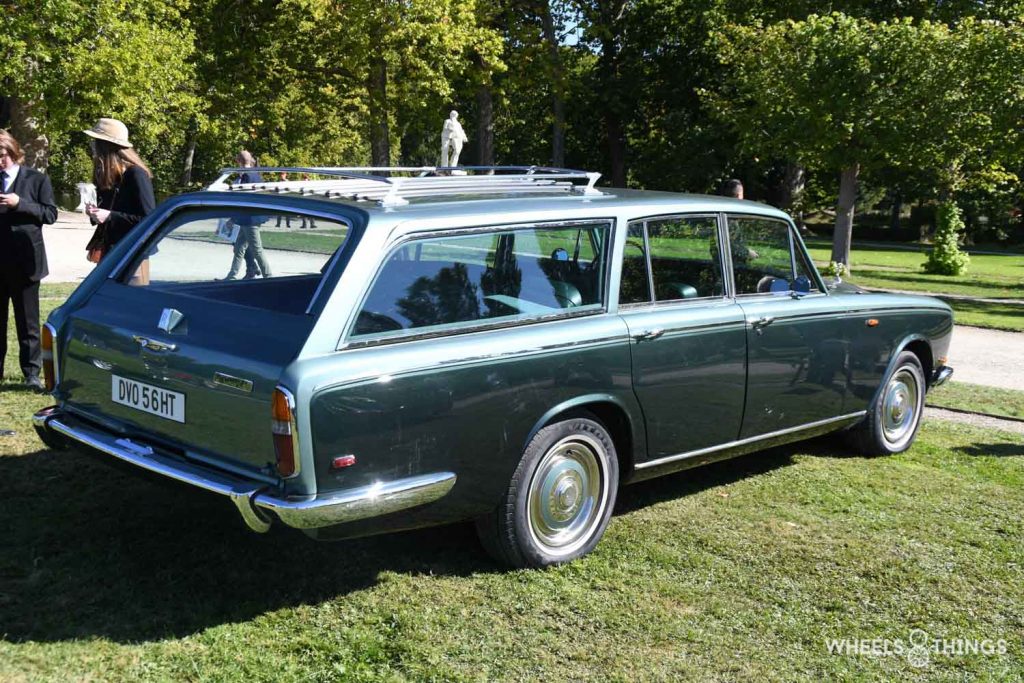
So there is this Rolls Royce Silver Shadow. The American owner has his luxury car converted into an estate car to take trips. He uses his Shadow as a pic-nic cart. This Rolls was fitted with a gas fire, a fridge and a built-in shower. So little space was left inside and the roof was fitted with a large trunk for extra storage space.
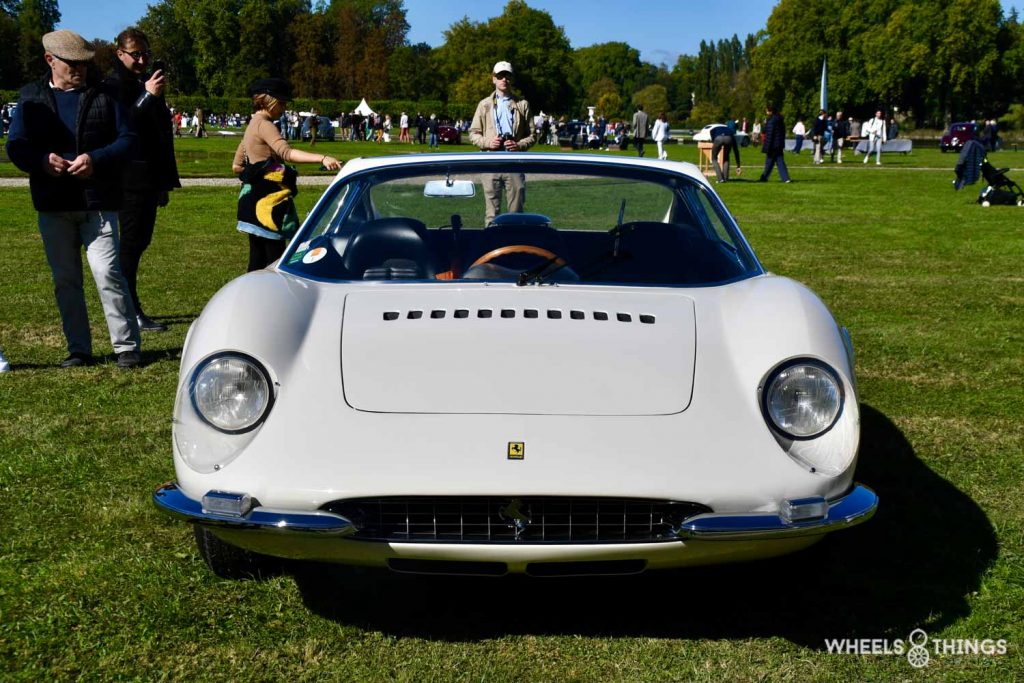
Surely, with this 1966 Ferrari 365 P Berlinetta spezial, we have a truly unique thing. At first glance, it looks like a Dino 246 but this 365 P is bigger, has the steering wheel in the centre and is fitted with a genuine V12 4.4-litre engine. Pininfarina built a prototype that, in 1966, was presented at the Paris Motor Show. Enzo Ferrari refused to let the car go into production as he saw nothing in the concept of placing the engine at the rear. The car was sold to US Ferrari importer Luigi Chinetti.
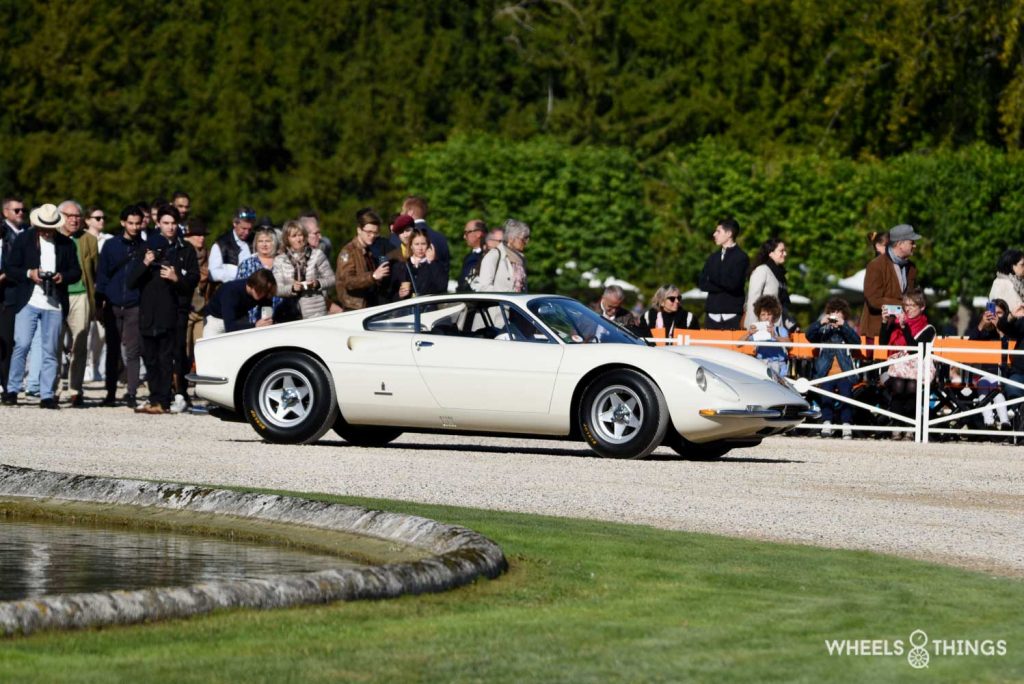
Fiat’s big boss Gianni Agnelli was a fan though and had a second one built for himself. It would remain with these two examples. Five years later, Ferrari presented its first model with centrally mounted engine so the idea turned out not to be so bad after all. This white one, chassis number 8971, was offered at Gooding’s auction in Pebble Beach in 2014. But a bid of $23.5 million proved insufficient at the time. Meanwhile, this white Ferrari did change hands and this one is “on tour” with it. After Villa d’ Este and Hampton Court, Chantilly was the next stage. Such a unique car was obviously going to walk away with the first prize.
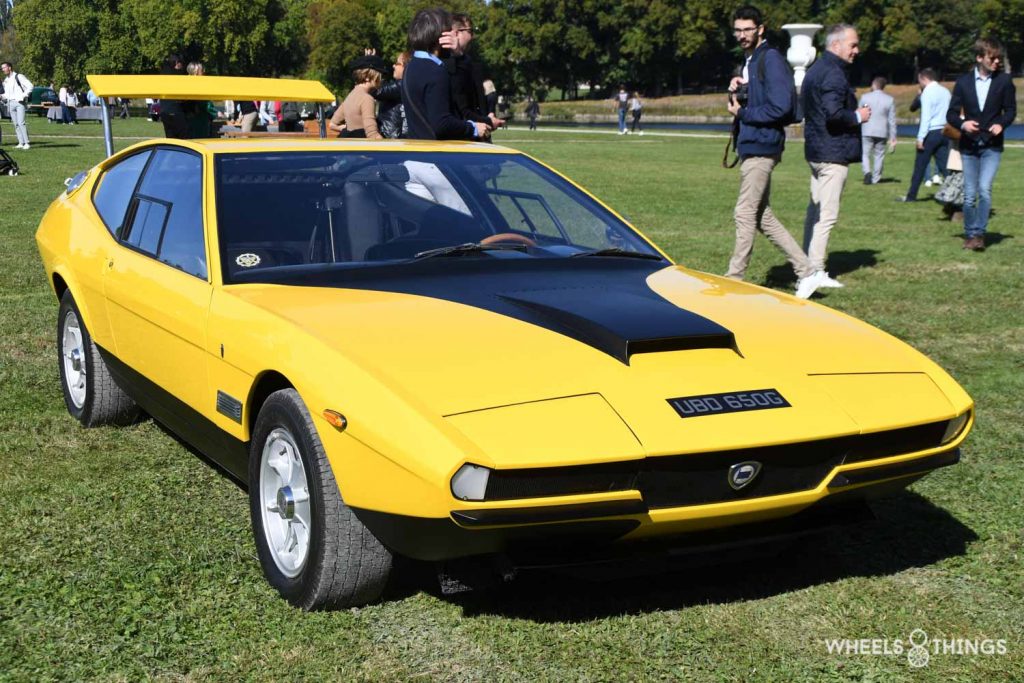
Another separate case is the 1969 Lancia Fulvia HF Competizione. Based on a Fulvia ( best known for rally cars ), Tom Tjaarda designed this HF Competizione for Ghia. It was one of the eye-catchers at the Geneva Motor Show. Concealed headlights and the adjustable rear spoiler typified this Lancia. But it stopped there: Lancia didn’t see much point in this concept and the car fell behind Vignale.
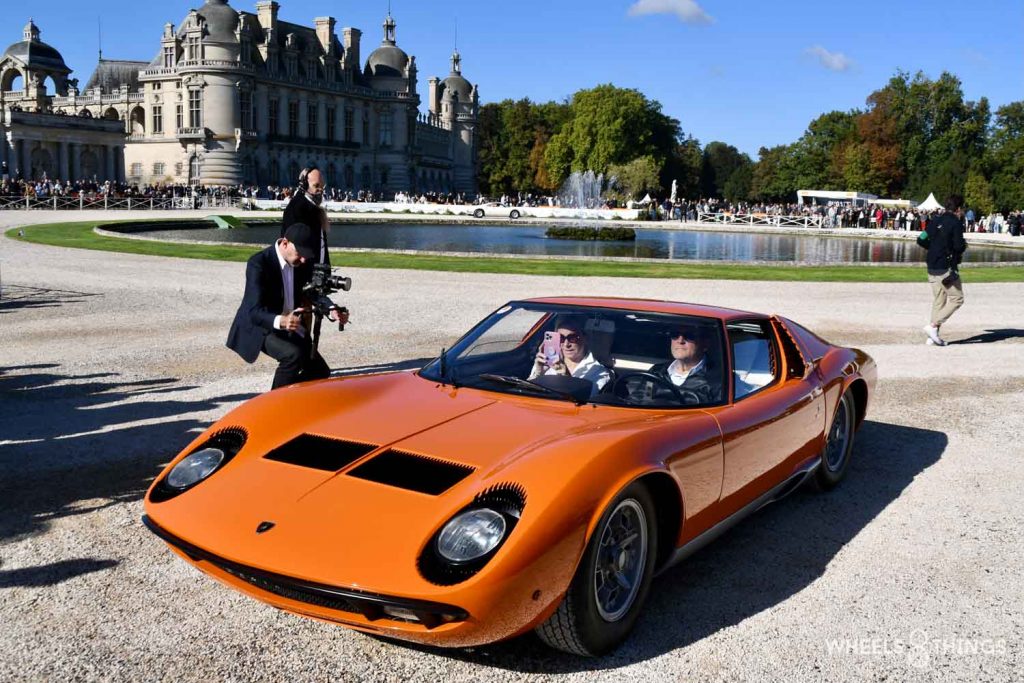
The most original car in this series was a 1968 orange Lamborghini Muira P 400 S, perhaps the “real star” of the film “The Italian Job” instead of the Minis. Lamborghini recently identified this Muira as this movie car. The Muira didn’t really need this film as it was simply the star of the car world in the 1960s. This realisation by Bertone is timeless and definitely among the top five most beautiful cars ever.
THE TOMASO
More Italian thoroughbreds with a range of De Tomaso’s. Everyone undoubtedly knows the Pantera. This is also the most famous De Tomaso. Besides the series model, this Pantera was also used in rally races, such as the e.g. Tour de France, and on circuits in races for GT cars.
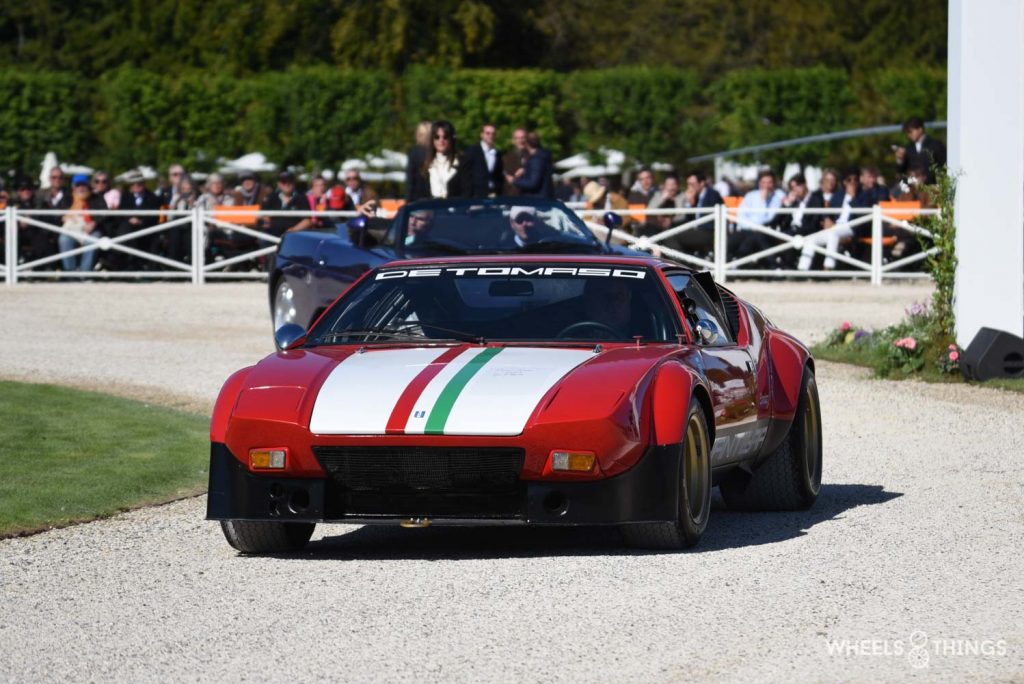
This red Pantera was winner of the “Giro d’ Italia”. The name says it all: the lap of Italy for cars.
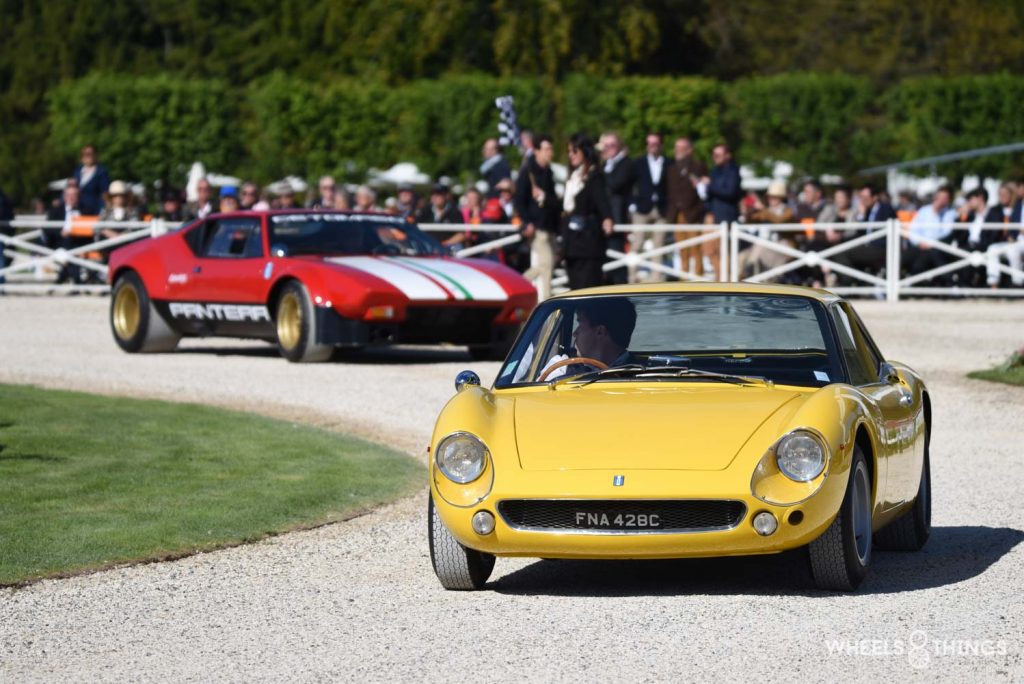
Less well known is this little 1965 Vallelunga ( Italian circuit ). With it, Alejandro De Tomaso built a small and light car, somewhat by analogy with Colin Chapman’s creations at Lotus.
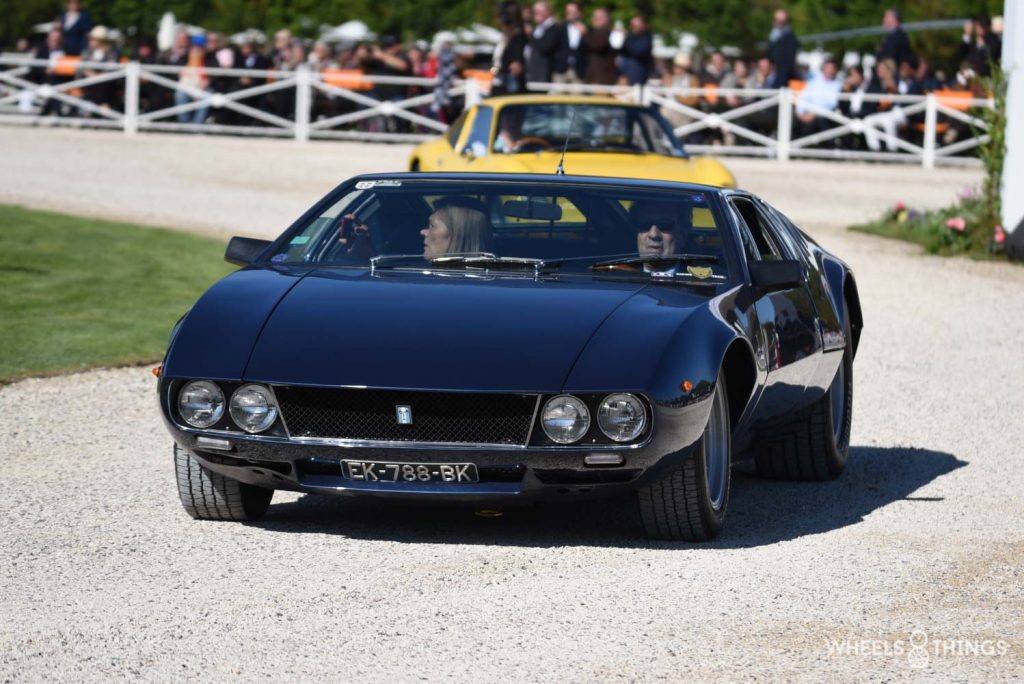
Five years after the Vallelunga, the Mangusta appears on the scene. Giorgetto Giugiaro’s design is fitted with a fat Ford V8 engine. Consequently, the model mainly targets the US market where most customers for these GTs could be found.
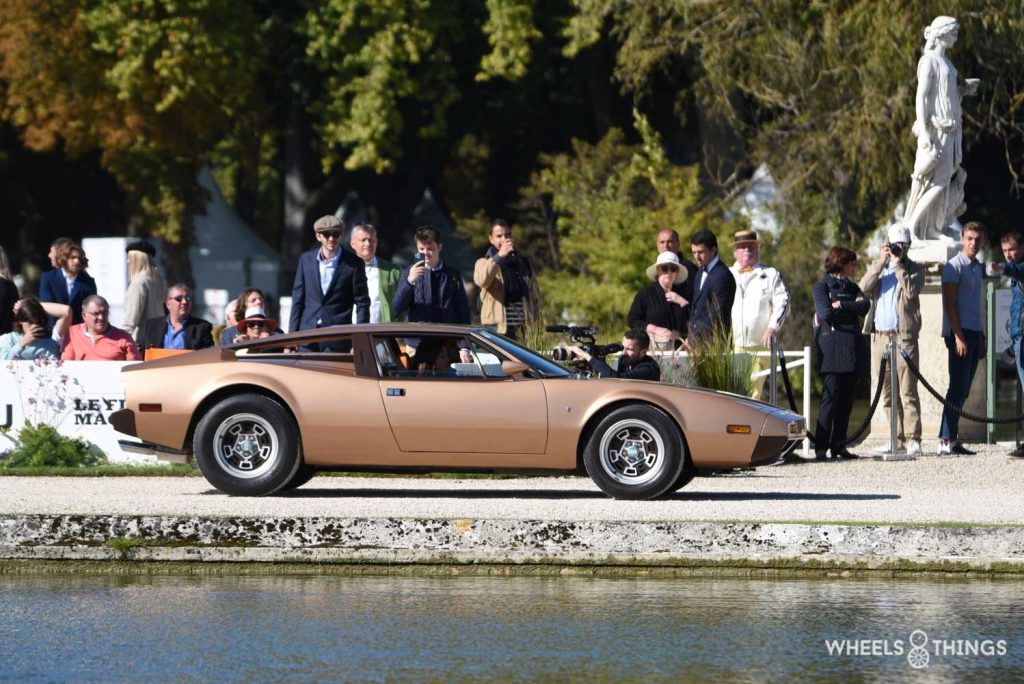
With this Pantera 7 X Montella, we have arrived at yet another unique piece. Designed by Tom Tjaarda, this concept car was presented at the 1974 Detroit Motor Show. Unfortunately, Ford saw no further bread in it and the one-off prototype was sold to a collector. Today, the 7 X Montella is in the prestigious Lopresto collection and the judges voted this X7 best in class.
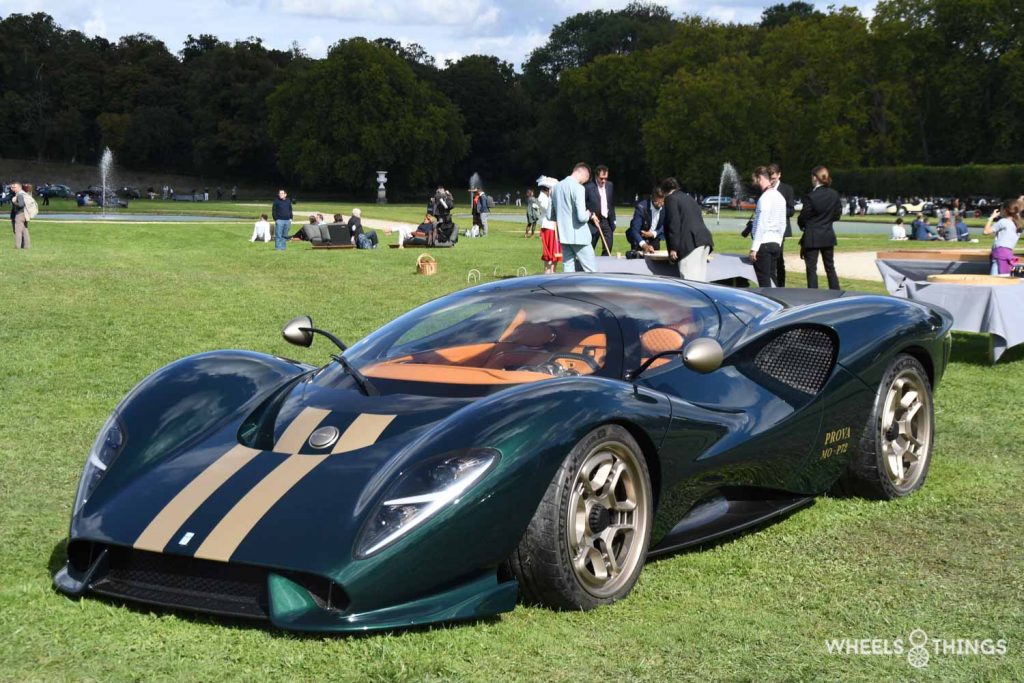
Our view of: ‘Everything used to be much nicer’, we have had to revise a bit with the new De Tomaso P 72 presented in 2019. There will be 72 units of this model to be built which is meant to represent an homage to the earlier P70. A timeless shape from the 1960s is paired with the most modern contemporary technology with this. You see a sort of time capsule, so to speak, and it was certainly the most beautiful contemporary car on the Chantilly estate. And the price of €750,000 for all this beauty is actually not too bad if you compared it to the Bentley Mulliner Batur exhibited a little further up with a €2 million price tag. Still, you sometimes wonder: What’s in that?
BARQUETTES OF THE 1950S
If we translate the French word Barquette, we end up with “little tub”. This series thus comprises a number of relatively small and highly manoeuvrable racing cars. They were mainly used on twisty circuits or public road races such as the Mille Miglia or the Targa Floria. Most famous are undoubtedly Maserati’s 300 S of 1955 and the Tipo Birdcage of five years later.
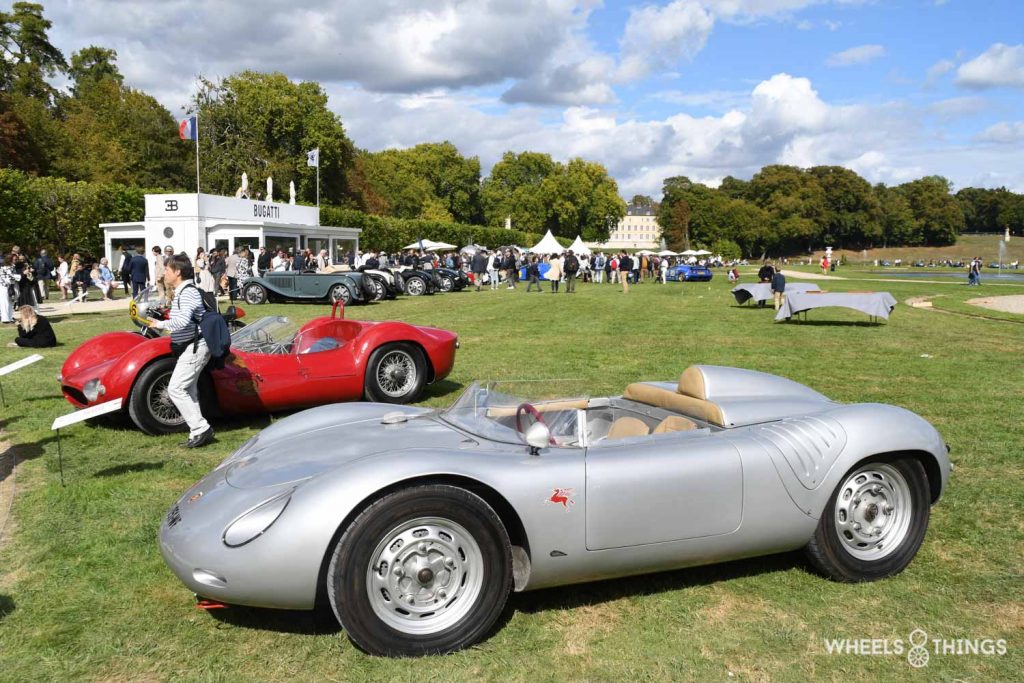
But the Porsche 718 also made its presence felt in races such as the Panamericana and the 24 hours of Le Mans.
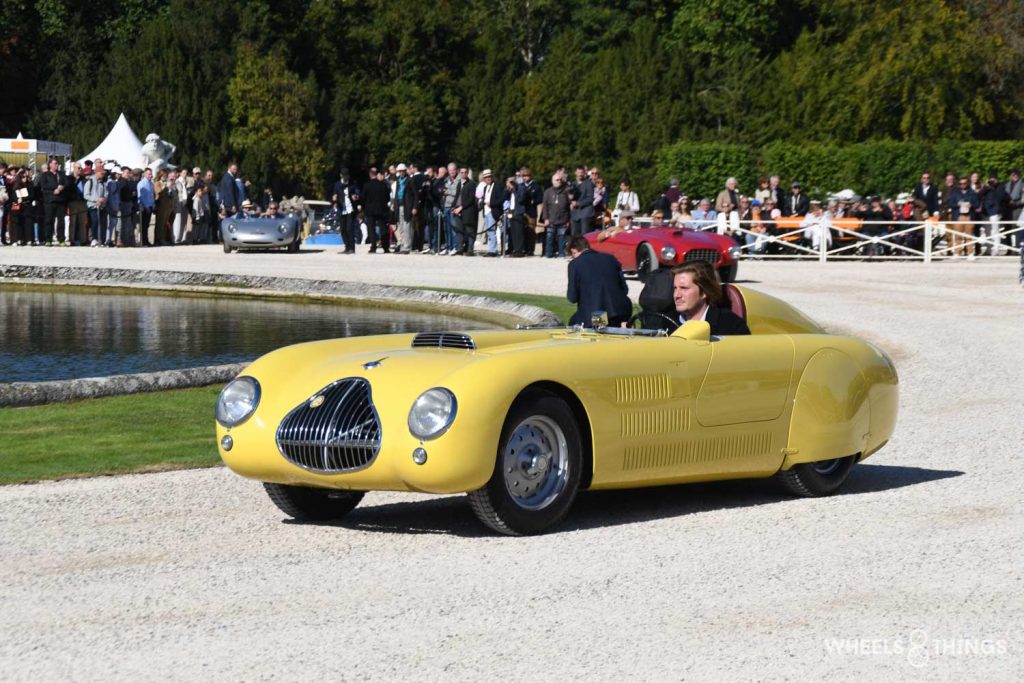
Among the participants was also a bright yellow Veritas Rennsport. And yellow was, of course, Belgium’s national colour in those years. After the Second World War, the Germans were not allowed to develop and build new racing cars. They had to make do with existing cars. Ernst Loof thus takes the pre-war BMW 328 as the basis for his Veritas. He modifies the BMW and it also gets new bodywork.
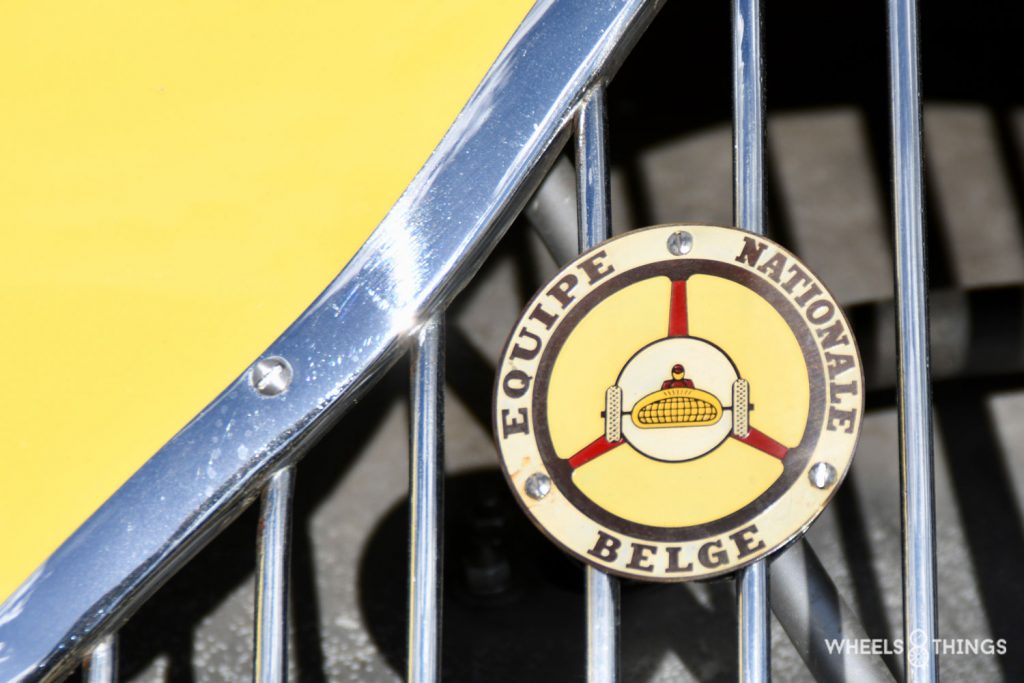
This formula works and several private drivers opt for this Rennsport. This yellow one originally ends up in France with André Chardonnet ( the later Lancia importer and best known for his participations in rallying with his blue Stratos with an overall win in the 1978 Monte Carlo rally ). Chardonnet then sells the Veritas to Jacques Swaters ( the later Belgian Ferrari importer ) who uses it in the Belgian National Team. He then switches to yellow Ferraris.
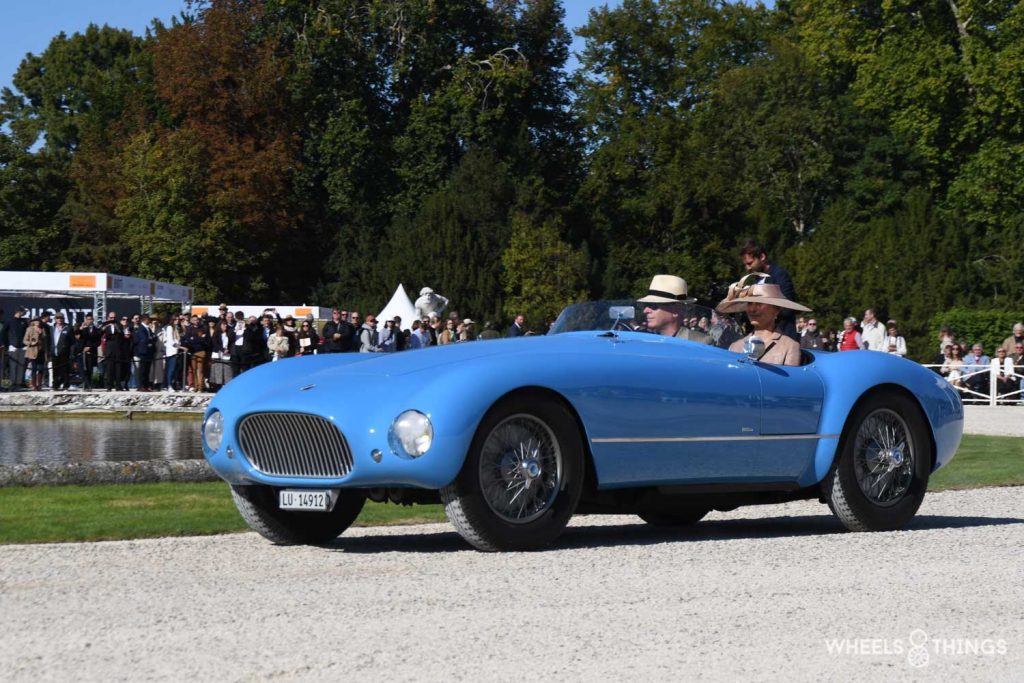
The victory was for a French entrant with the 1950 Talbot Lago T 26 GS Barchetto Motto adorned in the typical French national blue. In fact, this Talbot was able to convince the jury so much that it was also overall winner in the post-war series.
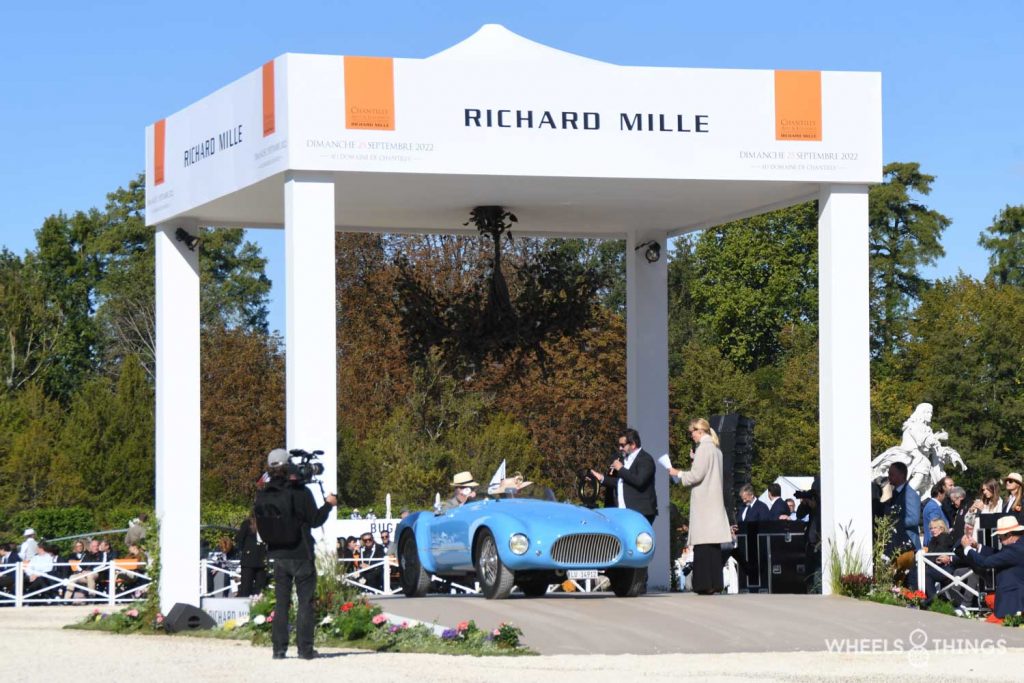
BUGATTI
A French Concours d’ élégance without Bugatti is like a cake without whipped cream. And we hadn’t really experienced that many Bugattis at one location before and we won’t experience it again anytime soon: there were more than 25!
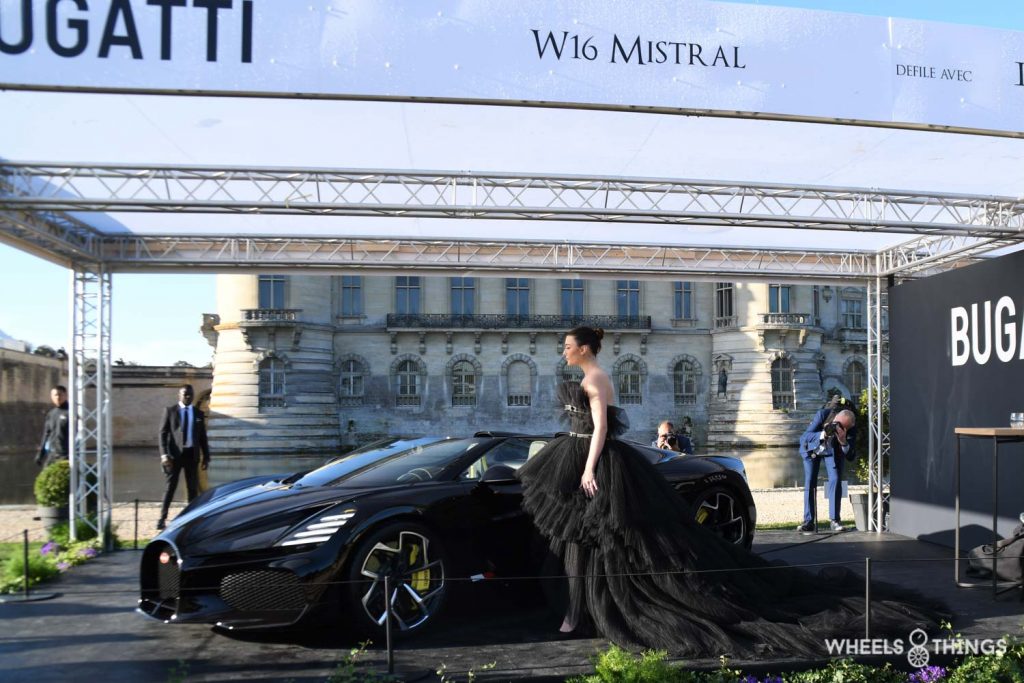
First, there was the new W 16 Mistral, the very last Chiron-based design that will be equipped with the 16-cylinder engine.
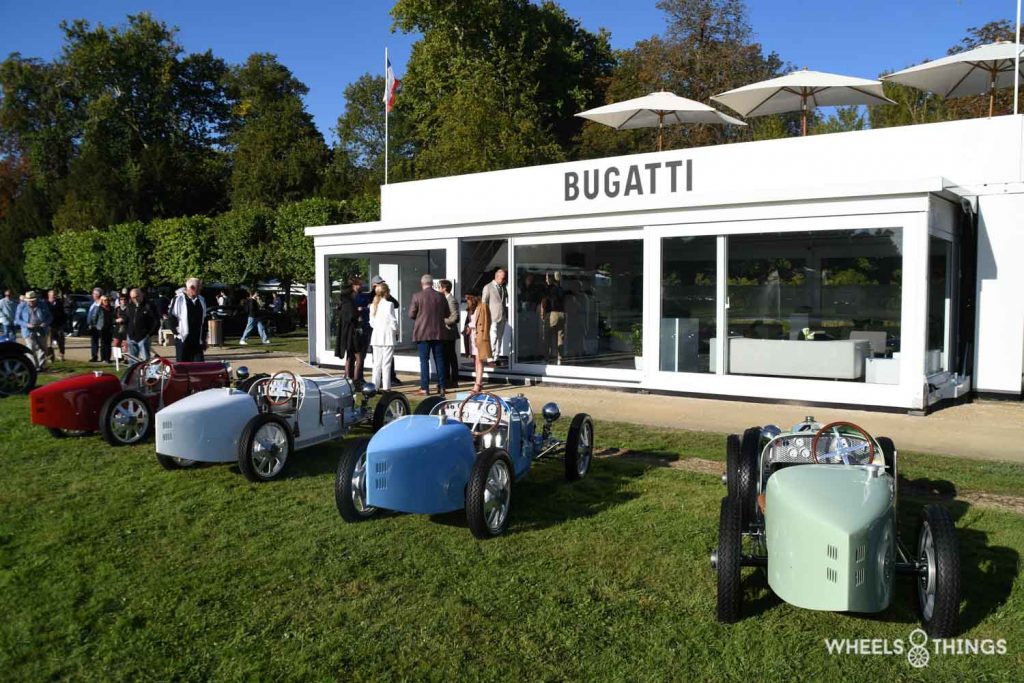
In addition, all recent Bugatti models were also exhibited around the VIP area for their customers. Every type of Veyron and Chiron was there with the Sport, Super Sport, Grand Sport and Divo in addition to the base models. Bugatti fans clearly came into their own.
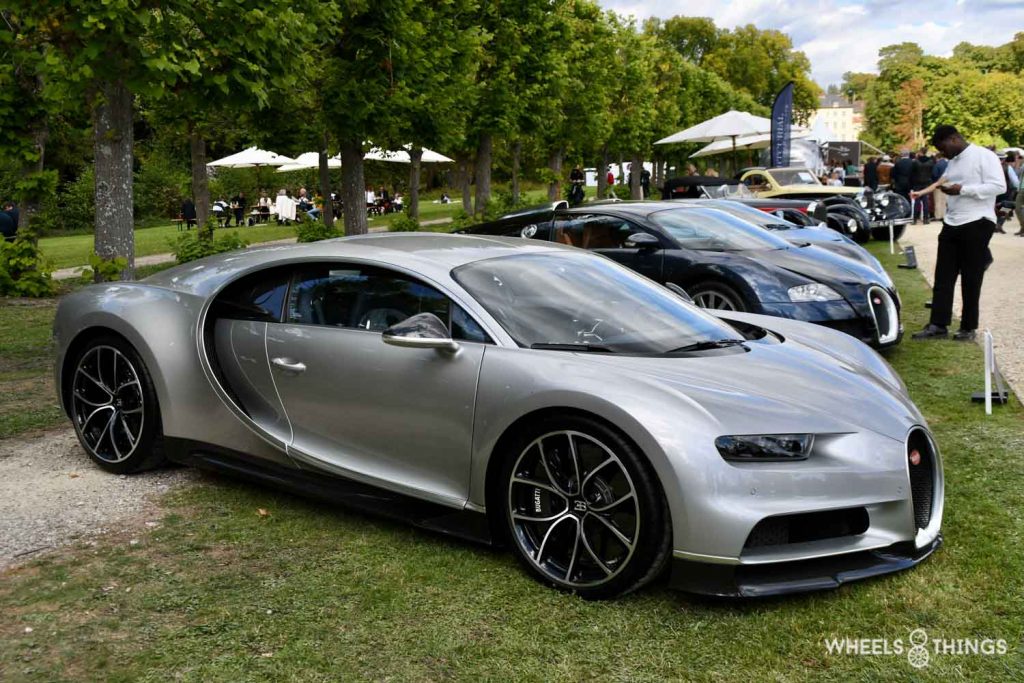
And in addition to the big Bugattis, a whole series of small ones found their way to the Type Baby I and II. This is a smaller version of the Bugatti Type 35 fitted with an electric motor.
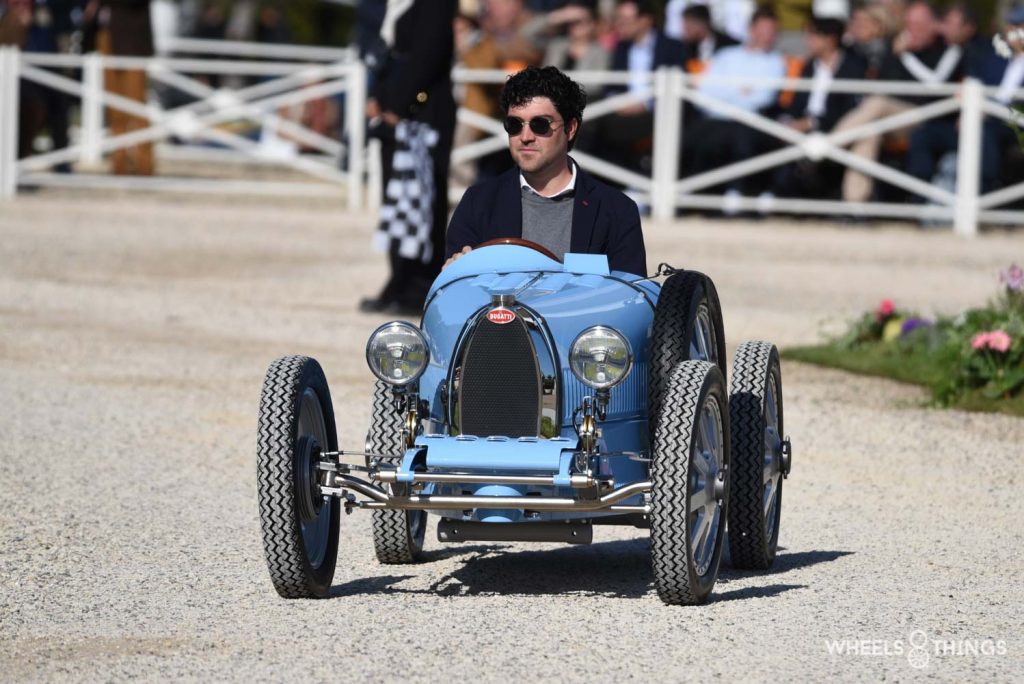
Both small and big children can take seats in this Baby Bugatti. The model is certainly successful but it should be with a price tag of at least 35,000 euros. But then again, it is not a real Bugatti as the manufacturing is done in Dublin, Ireland.
BUGATTI TYPE 55
The Bugatti 55 is a very rare car. With only 38 built, they fetch high prices at auctions these days. Four of this series could be found in this class.
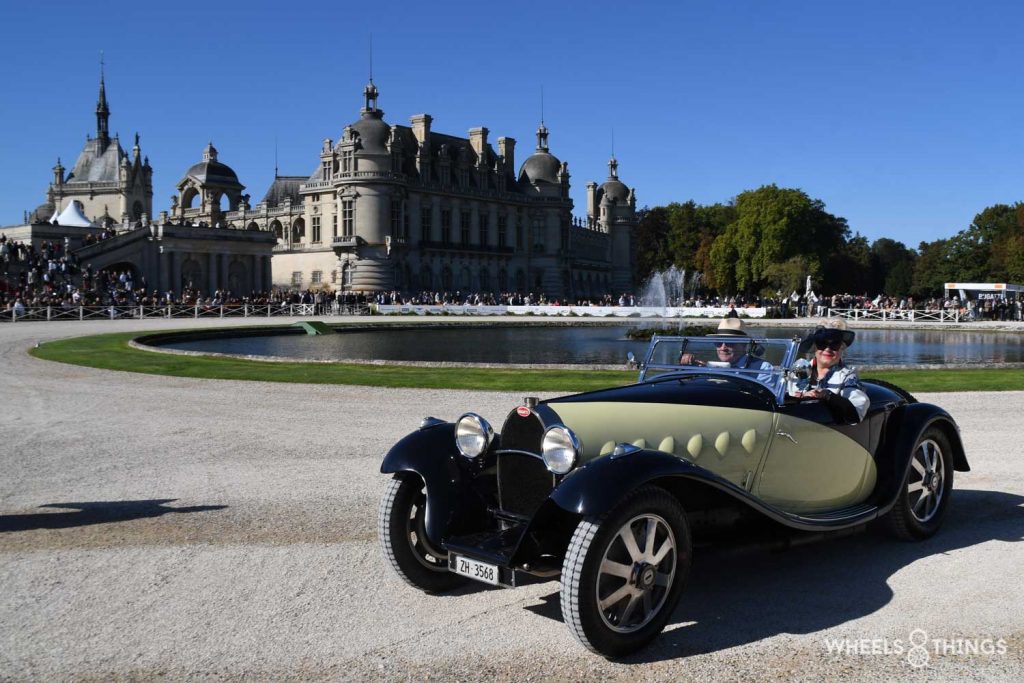
And of these 38 units, there were then also those with bodies by Figoni or Vanvooren.
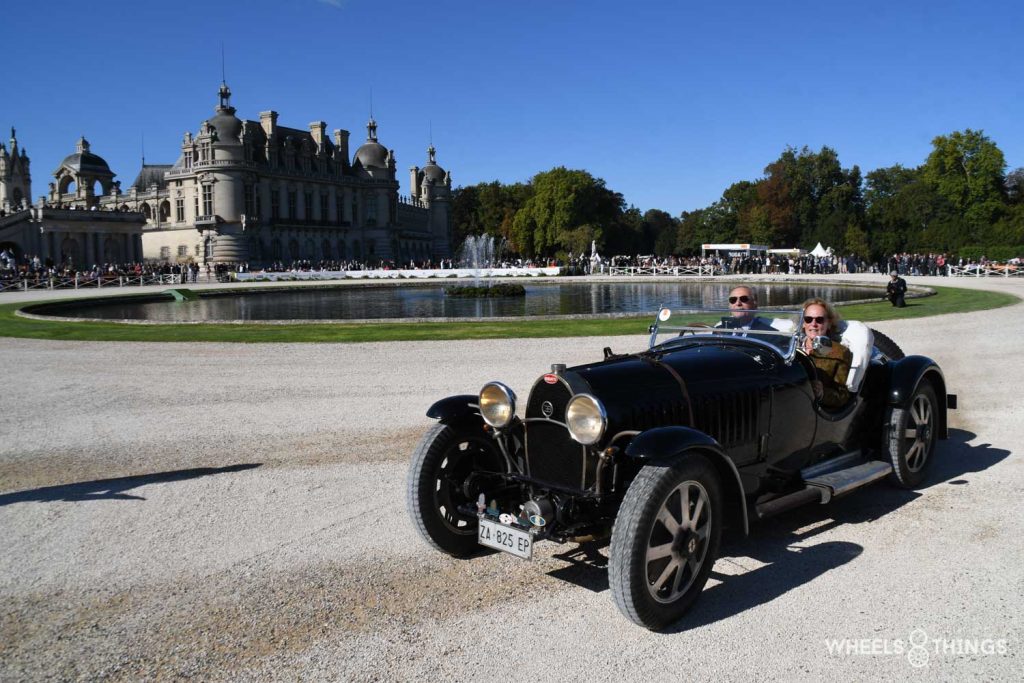
These special bodies could not really convince the judges as the first prize went to a factory-built Type 55 Roadster. Now these “series models” were also quite unique in themselves as none were identical.
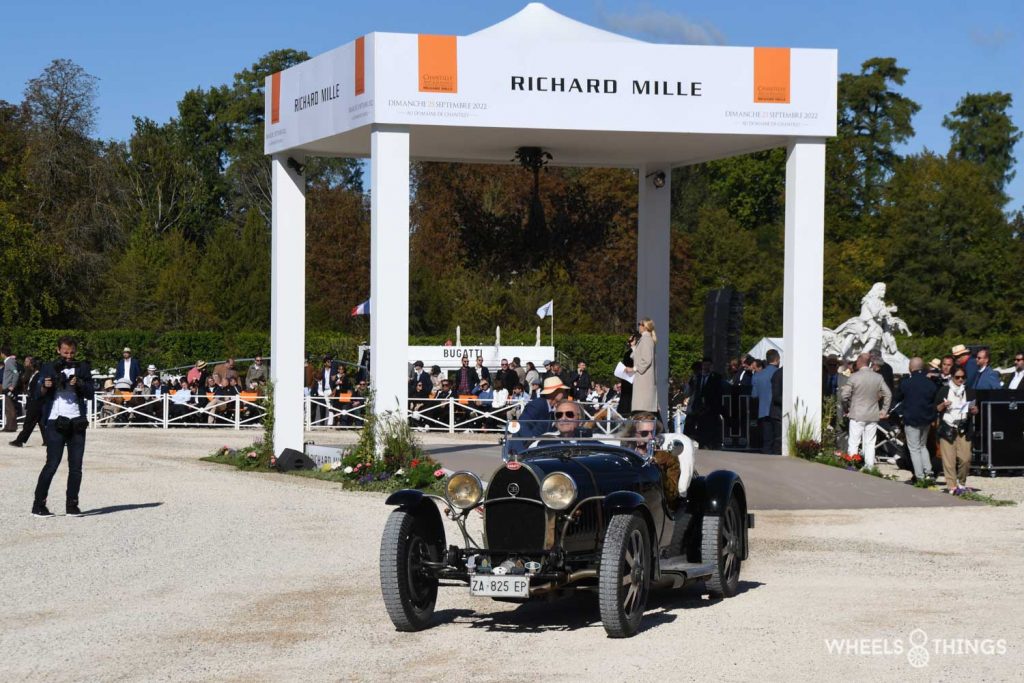
This black Roadster was custom-made for Belgium’s King Leopold III. The latter had excellent taste in cars and, of course, the corresponding financial resources.
BUGATTI THE REBIRTH
In the 1990s, Bugatti experienced an Italian revival. Businessman Romano Artioli had bought the rights to the name and wanted to revive the brand. He introduced the EB 110 to the world press under the foot of the Eifel Tower in Paris in 1991. In a brand-new factory in Campogalliano / Modena, Bugatti would come back to life.
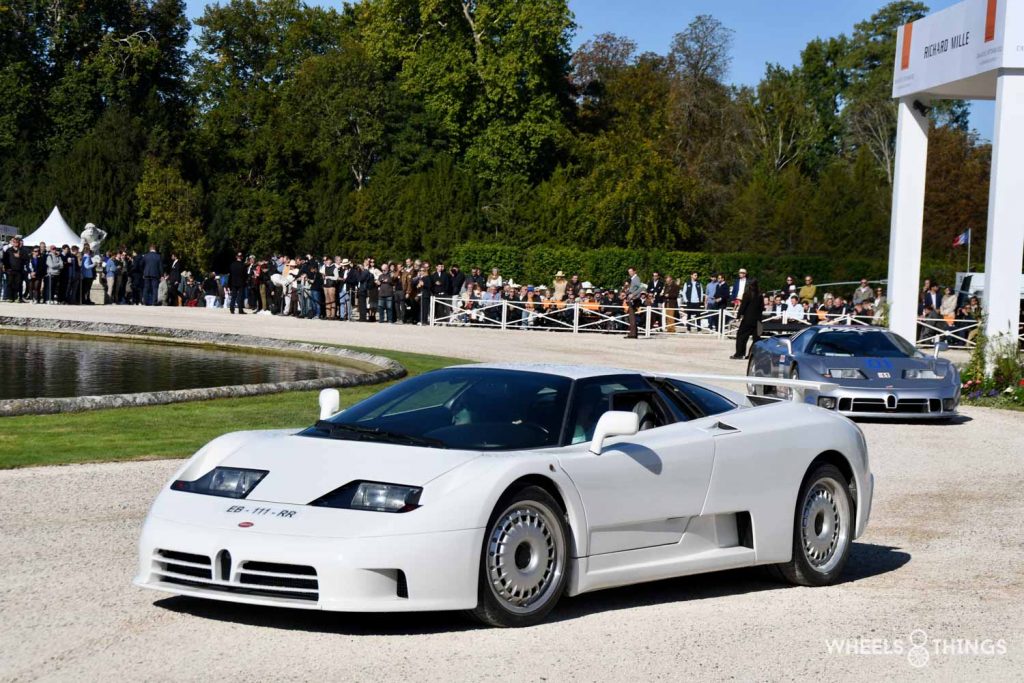
That the winner would be one of the EB 110 type was pretty much obvious: the only other EB 112 sedan prototype announced was sadly absent. So five identical EB 110 for first prize? Not really, anyway.
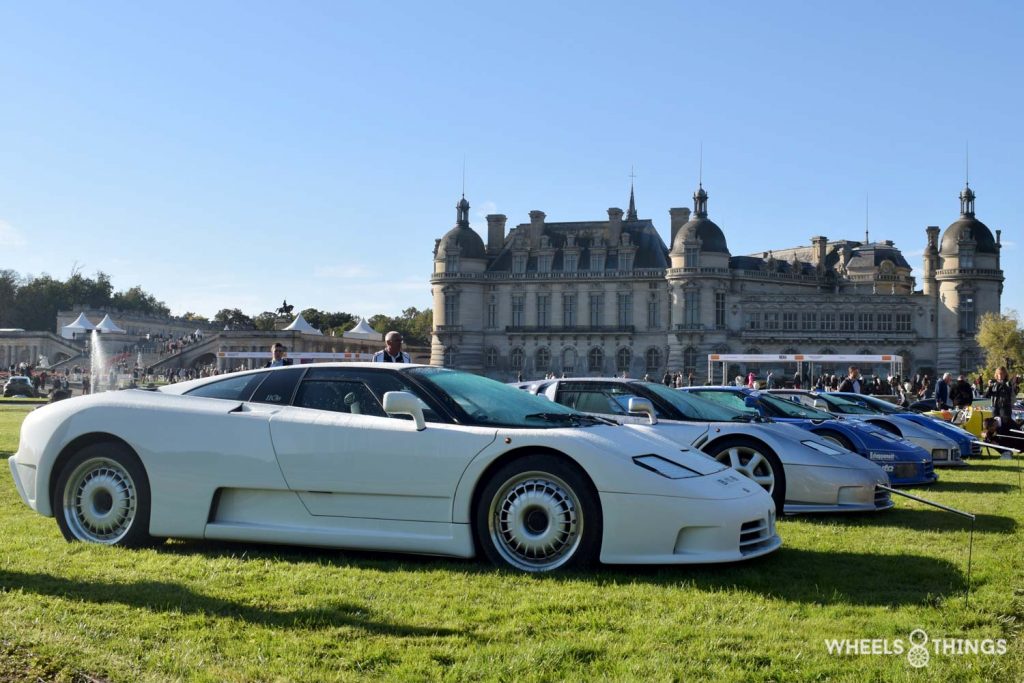
Besides the two standard EB 110 GT models, the yet again found a special case with a blue Bugatti/Dauer EB 110 SS. Jochen Dauer had made a name for himself as a race driver and later as a team owner in Group C with a Porsche 962. Later, he would also make a street version of this Porsche.
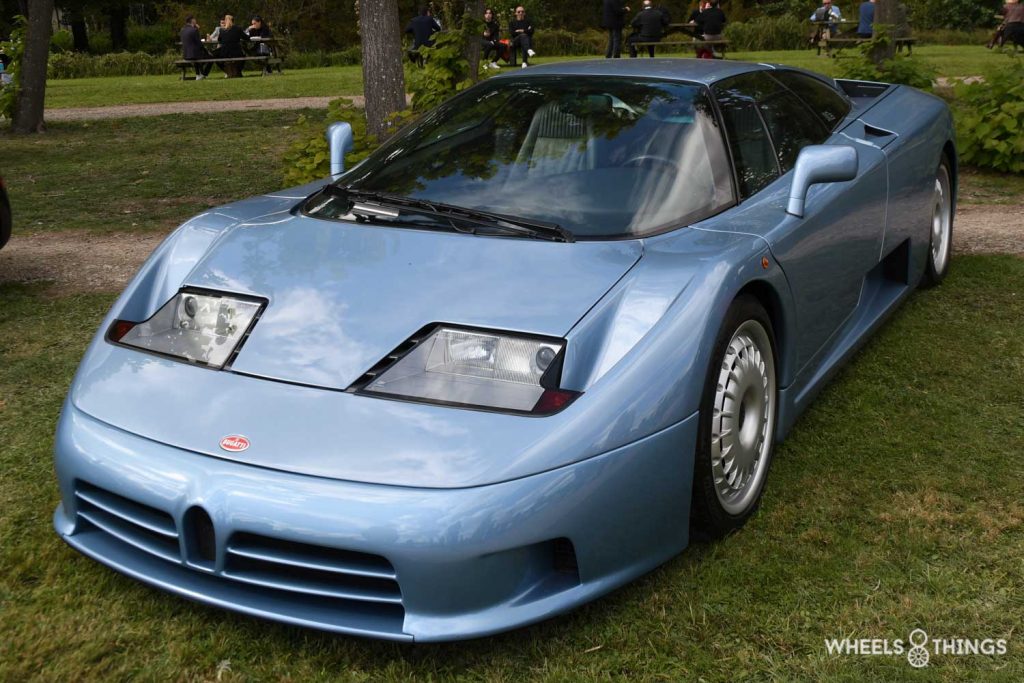
The EB 110’s life was only short-lived. Four years after its performance in 1991, the company went under. The contents were sold publicly and Jochen Dauer bought a number of unfinished examples, which he later rebuilt and modified himself for some customers. A few years after the production line stopped, the Dauer version of the EB 110 appeared.
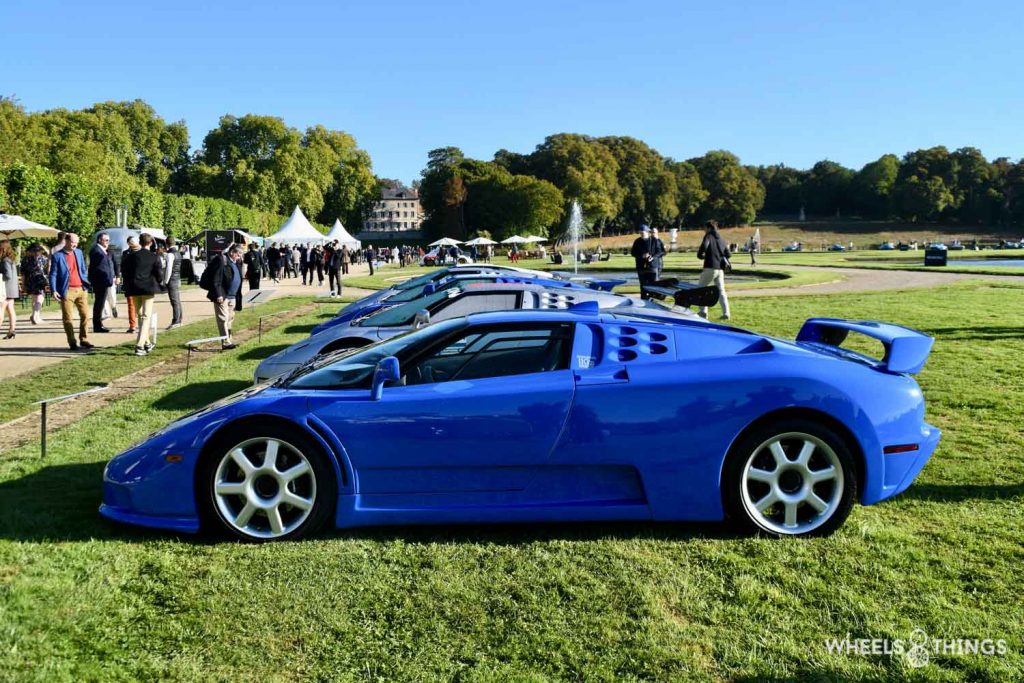
Dauer customers will then get an upgraded one that comes with a GPS system, television, parking sensors and a reversing camera.
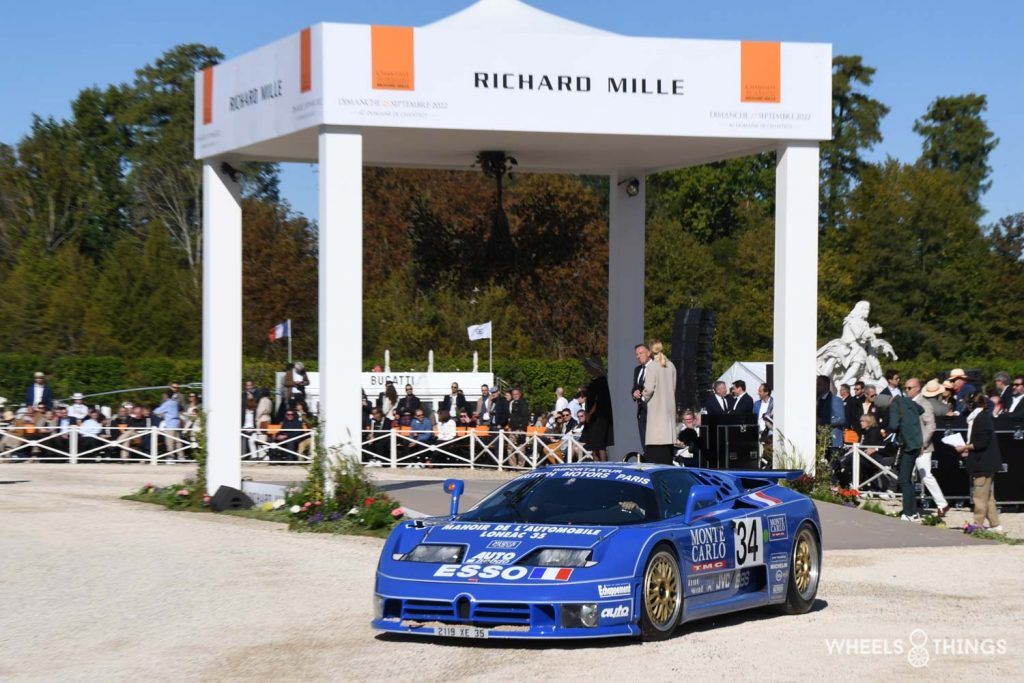
We conclude this series with the last two “racing Bugattis” ever built. Two examples of the 1994 EB 110 SS. The blue one then competed in the 24 hours of Le Mans, the grey one started a year later in the US IMSA championship for GT cars.
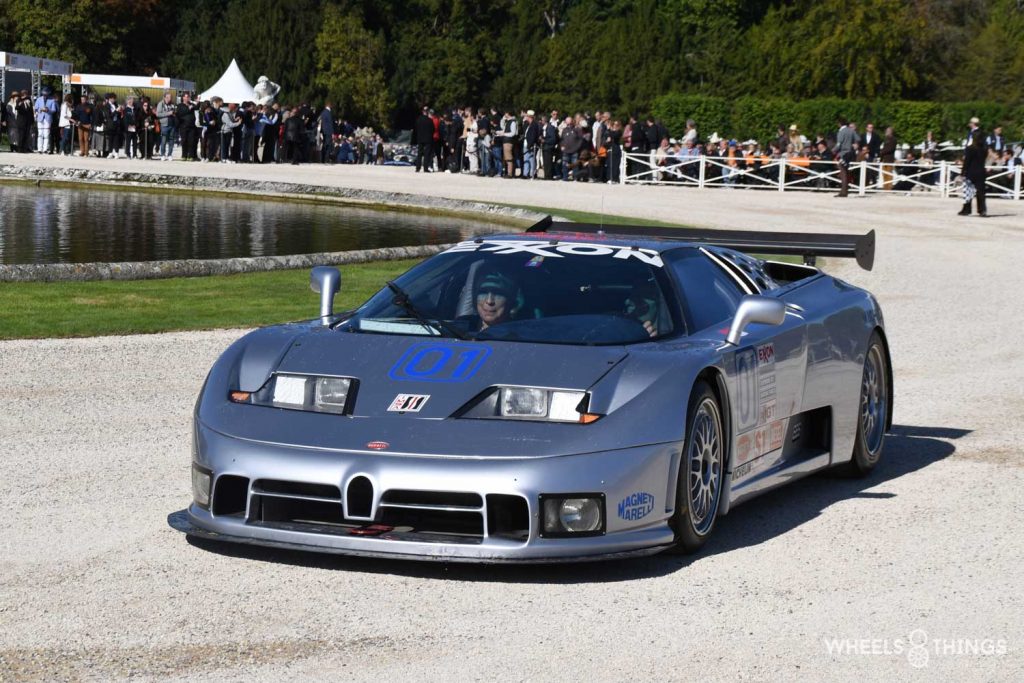
Both initiatives were done by private teams. In fact, the Le Mans Bugatti was on its way to a pretty good result. However, a blowout came to throw a spanner in the works. You can read the full story here. The silver IMSA EB 110 is not doing as well and cannot really convince our friends on the other side of the ocean. Following Bugatti’s bankruptcy, the programme is discontinued. The Le Mans car is therefore the rightful winner in this series.
HISPANO SUIZA
This Spanish/Swiss car brand produced cars from 1904 to 1938. Besides cars, it also made aircraft engines, trucks and weapons. The brand had factories in Spain and France.
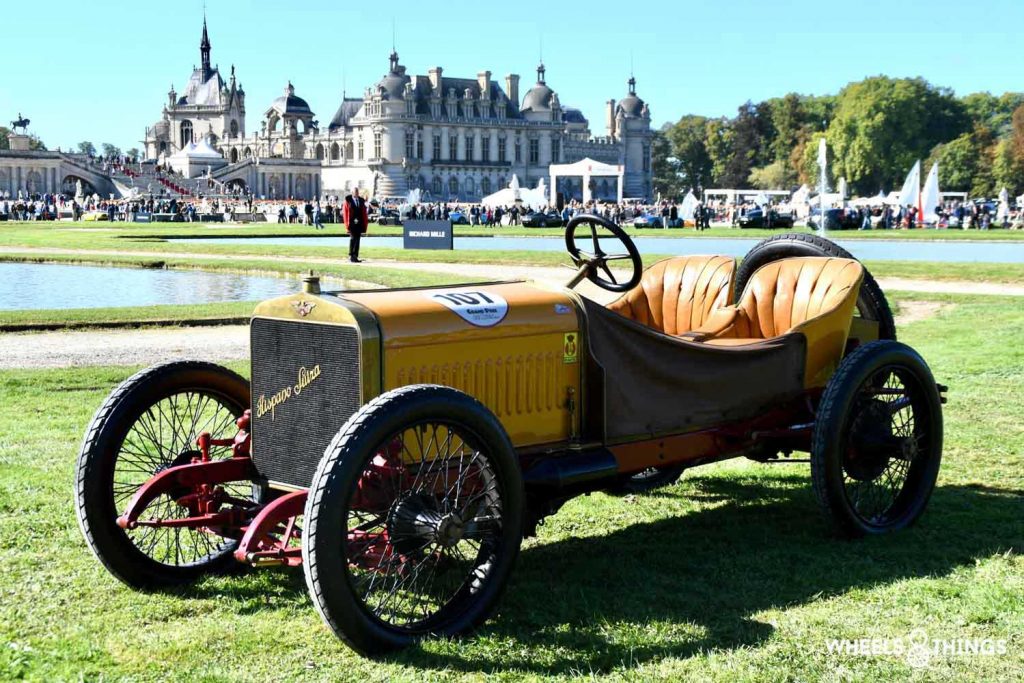
Hispano Suiza made quality, low-noise and fast cars. Its oldest entrant, the 1911 Alfonso XIII, even has a royal name. The then Spanish king was such a big fan of the marque that he had more than 30 Hispano cars in his personal collection, and he gave permission to the marque to add his name to even one of their race cars.
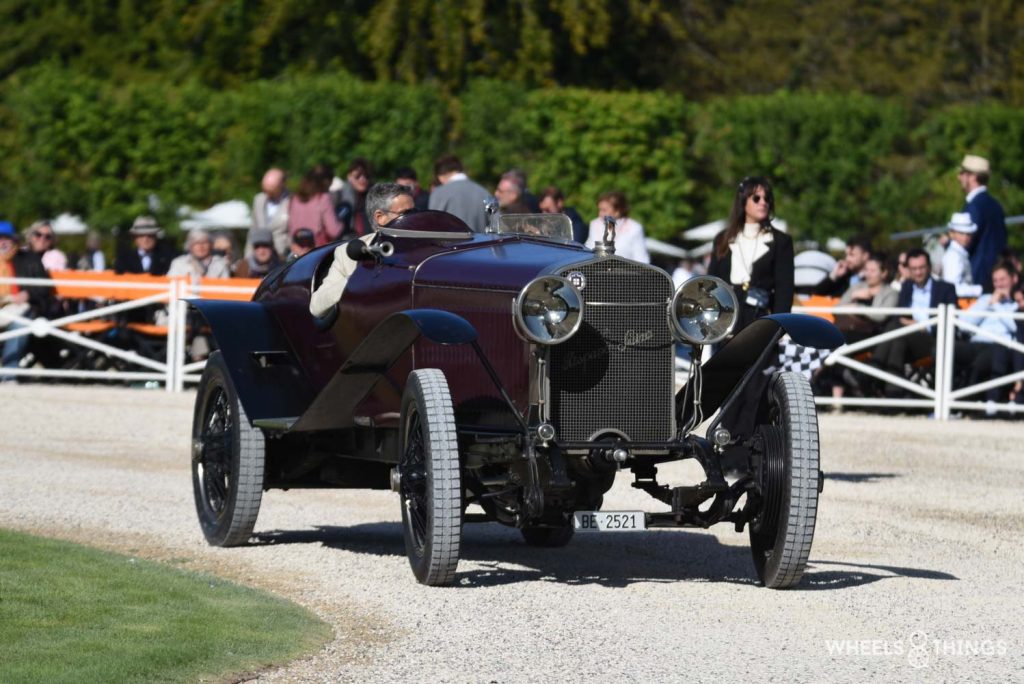
Another racing version is this 1925 H6 C. The streamlined bodywork was fitted with a 6-cylinder engine that produced 200 hp by then.
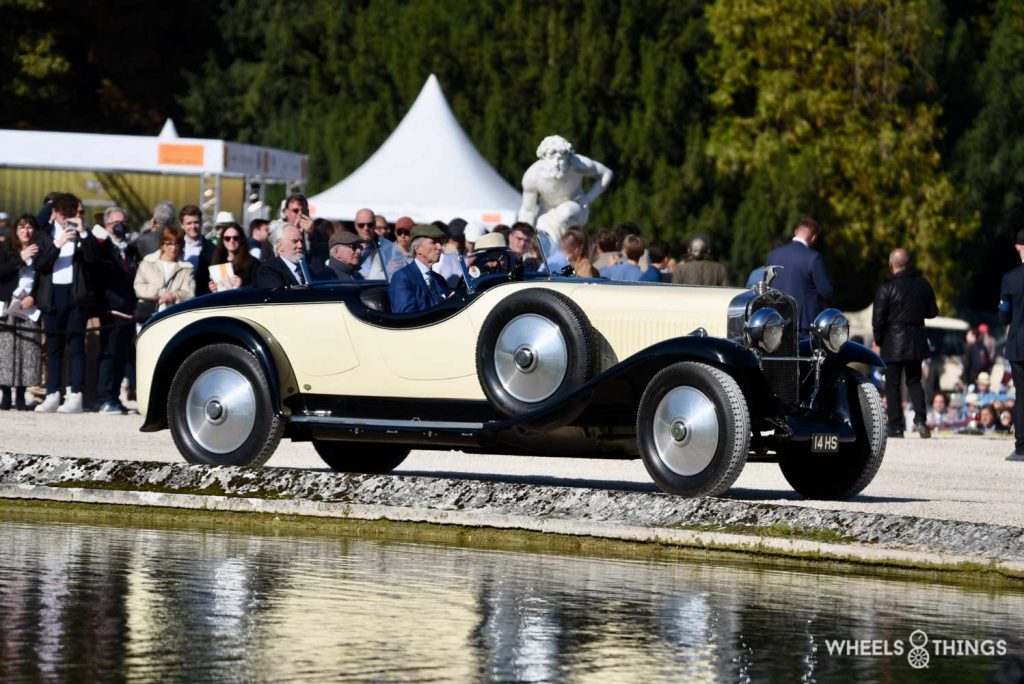
This H6 B was a realisation by Paris coachbuilder Dubois. Two separate passenger compartments were built on a Hispano Chassis. Both fitted with a front window and separate doors.
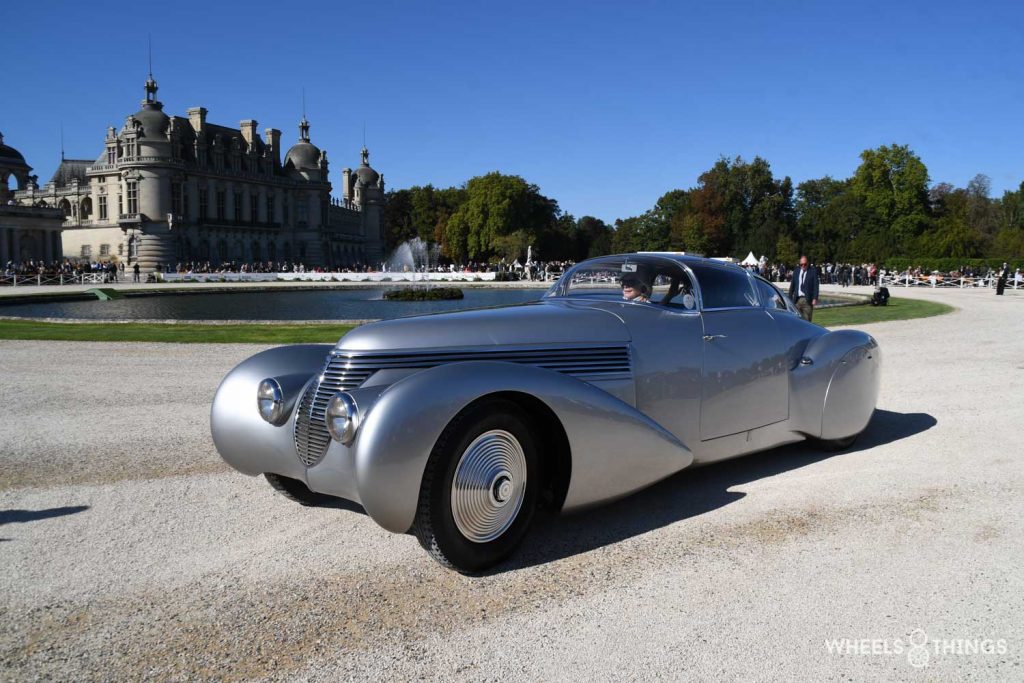
The big crowd-pleaser of this 2022 edition was undoubtedly the 1938 Hispano Suiza H6C Dubonnet Xenia. A beauty of a car. Just three weeks ago, the Xenia should have been ahead of the Delage D8-120 S “de Villars” at the Hampton Court Concours but there the Hispano had already walked away with the biggest prize in 2016.
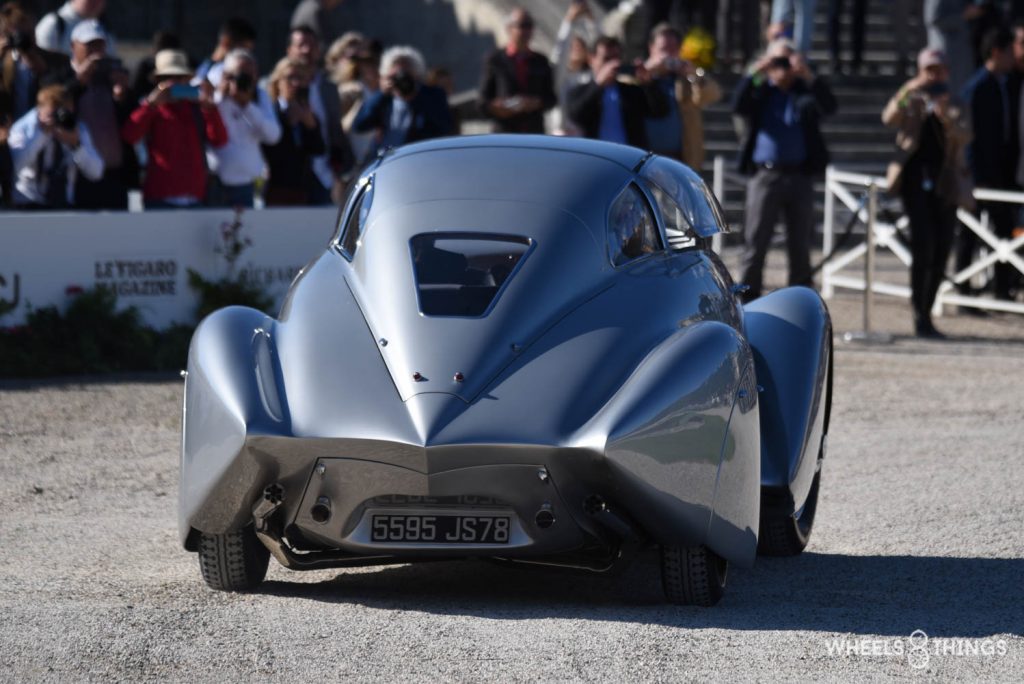
At Chantilly, of course, there were also many beautiful cars but none that could match this Hispano Suiza. The Dubonnet Xenia therefore won its class without much opposition and also took overall victory in the pre-war class. Quite rightly so.
ALPINE : THE RACING CARS
Long before Alpine owned Renault, Jean Rédelé was very active in motorsport. And this both on circuits and in rallying. Some of the Alpine cars on display also competed in the Le Mans class we have already discussed.
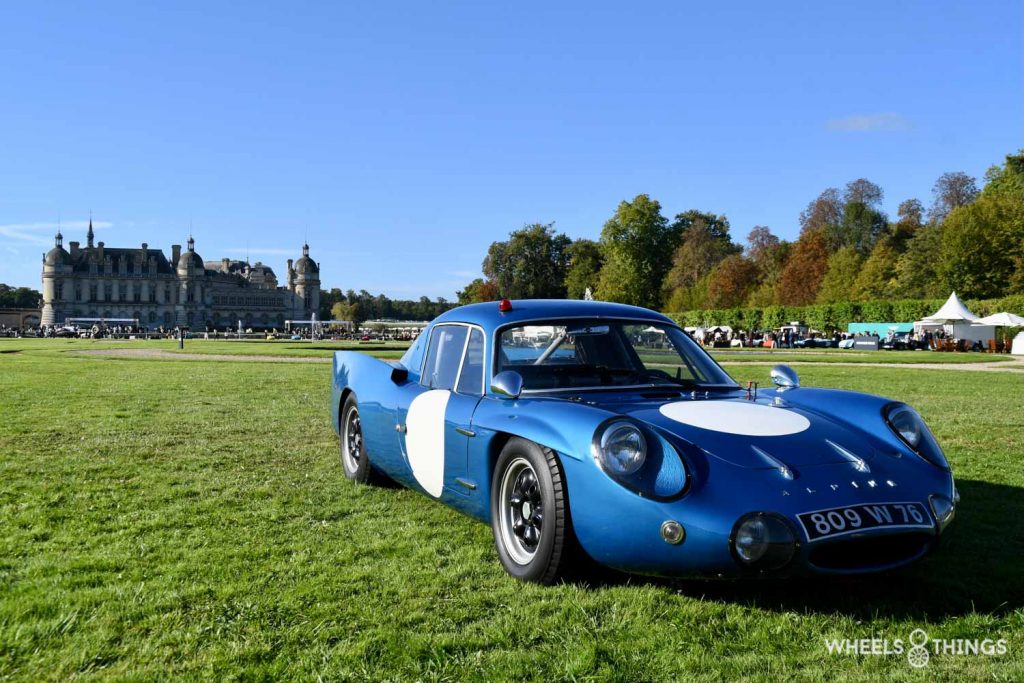
But Alpine also made its presence felt in rallies with their famous “Berlinette A 110”. Giovanni Michelotti’s design still captures the imagination today. Even so much that Renault released a new version under the “Alpine” brand name in 2017. Once again, a beauty of a small sports car.
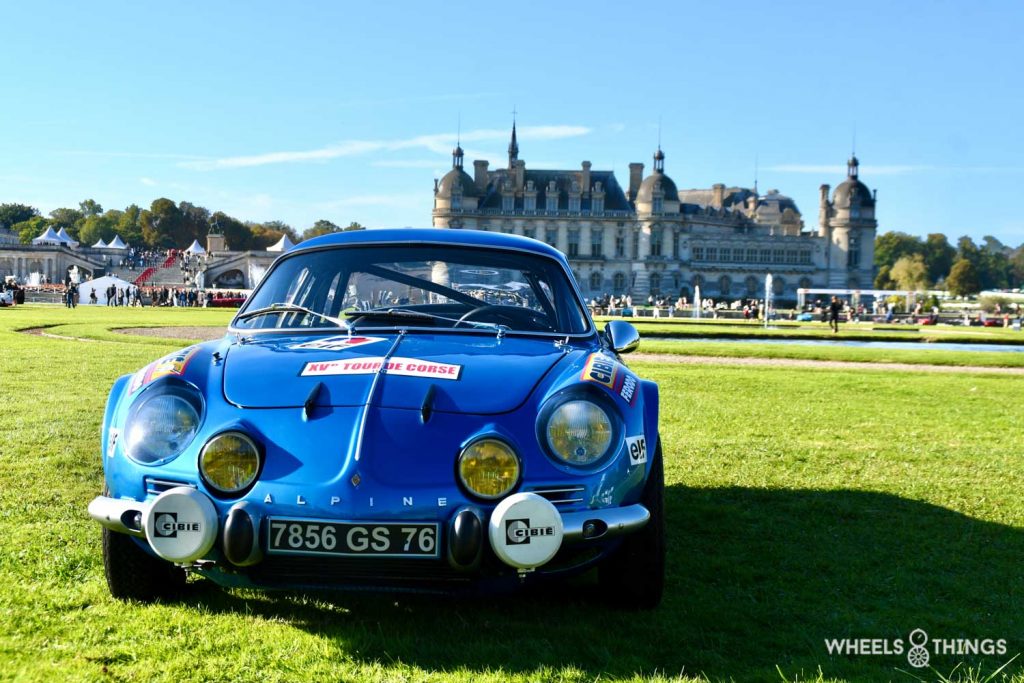
Consequently, the small, light and agile Alpine performed very well on roads of Monte-Carlo, Acropolis, Sanremo and on the island of Corsica. Jean-Claude Andruet, Jean-Luc Thérier, Jean-Pierre Nicolas and Bernard Darniche collectively won seven World Cup races with it.
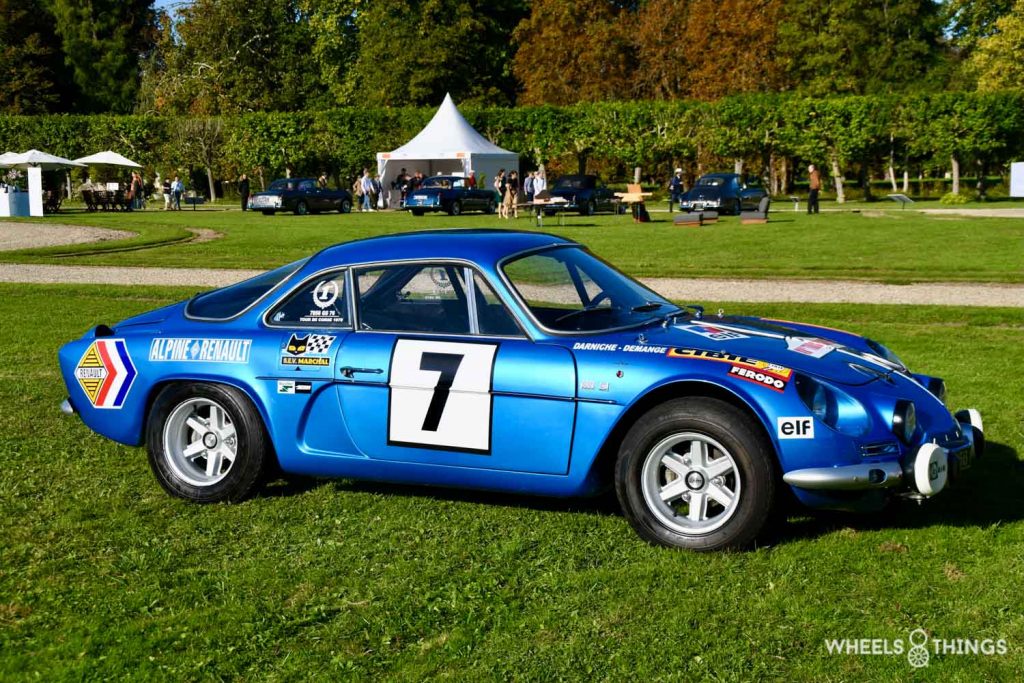
And besides World Cup races, the A110 won many national titles and victories. And not only at rally level. Here in Belgium, Albert Vanierschot won numerous Belgian titles in the class up to 1600cc with a circuit car.
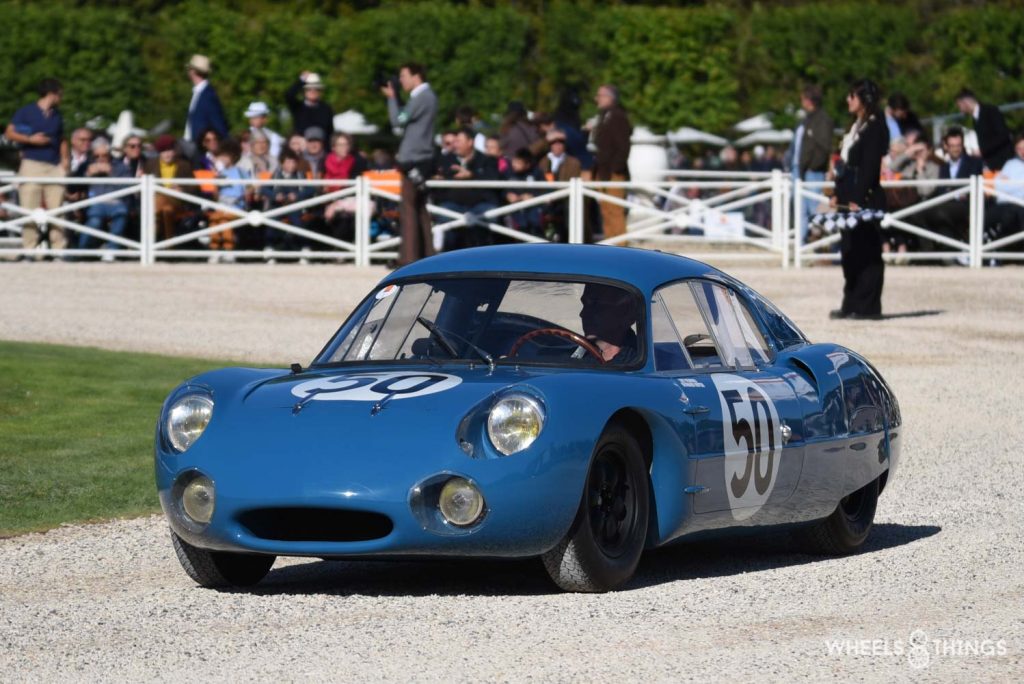
The Jury elected the 1963 M 63 as the victor in this class.
BENTLEY CONTINENTAL
We close last of the 17 classes with the Bentley Continental, which celebrates its 70e anniversary this year. Bentley was also present as a sponsor with its full current range.
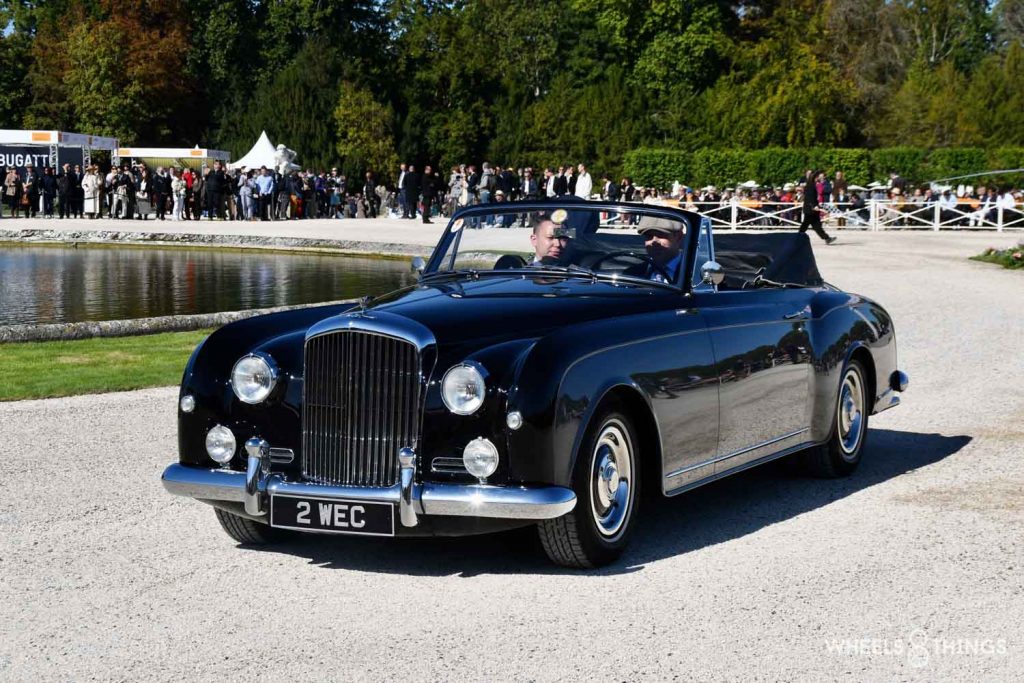
With only four entrants, these Bentley’s were the smallest of the 17 classes. The Continental’s of the 1950s and 1960s are really beautiful and stately cars though. And whether it is a coupe or convertible version ( Drop Head ) doesn’t really matter much: they are beautiful things.
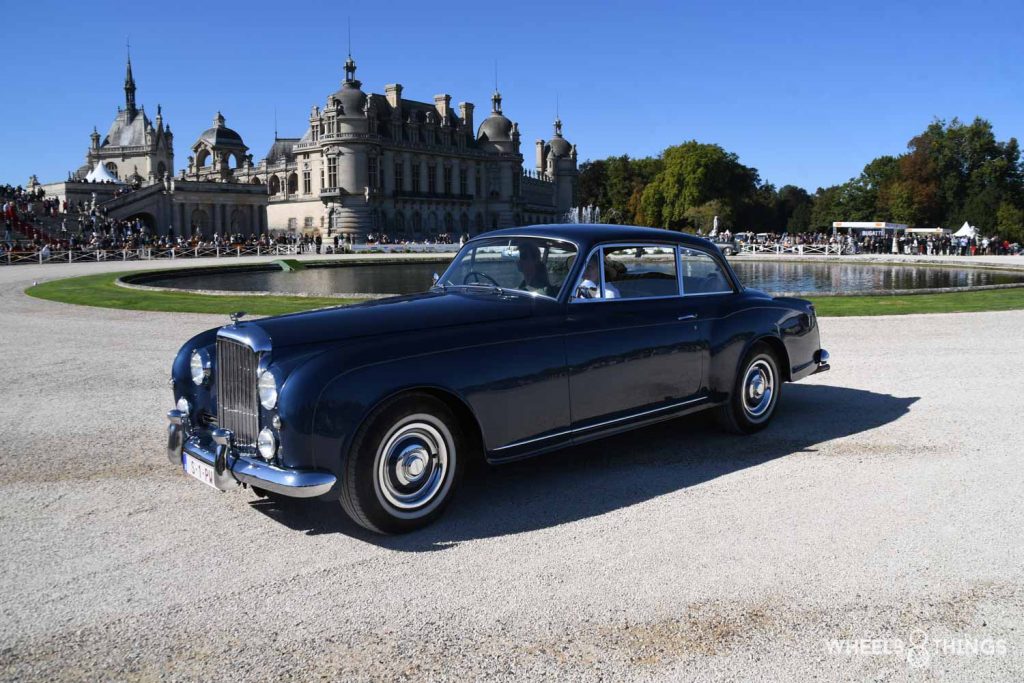
Bentley then still had two outside coachwork firms ( Mulliner and Park Ward ) that delivered exclusive bespoke designs. Later, the two firms would merge.
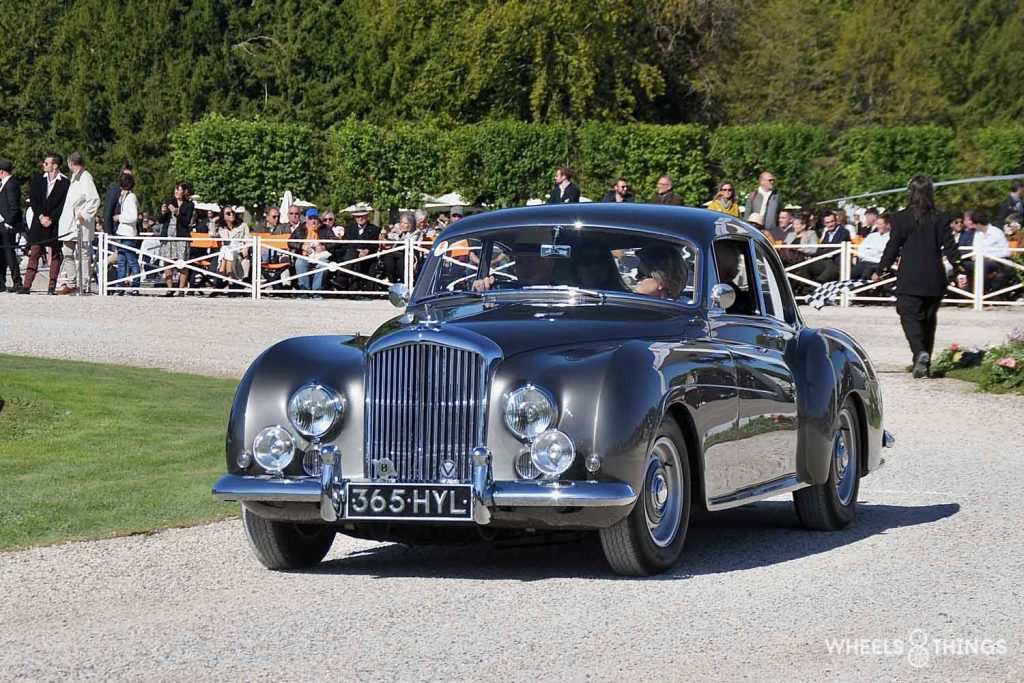
With the Bentley Continental Typ R, we have arrived at the final class winner. But this is not to say that this already brings us to the end.
BRM
Today, we think of BRM as a timepiece rather than a racing car but between 1951 and 1977, BRM or British Racing Motors was a British manufacturer of Grand Prix and Formula 1 cars.
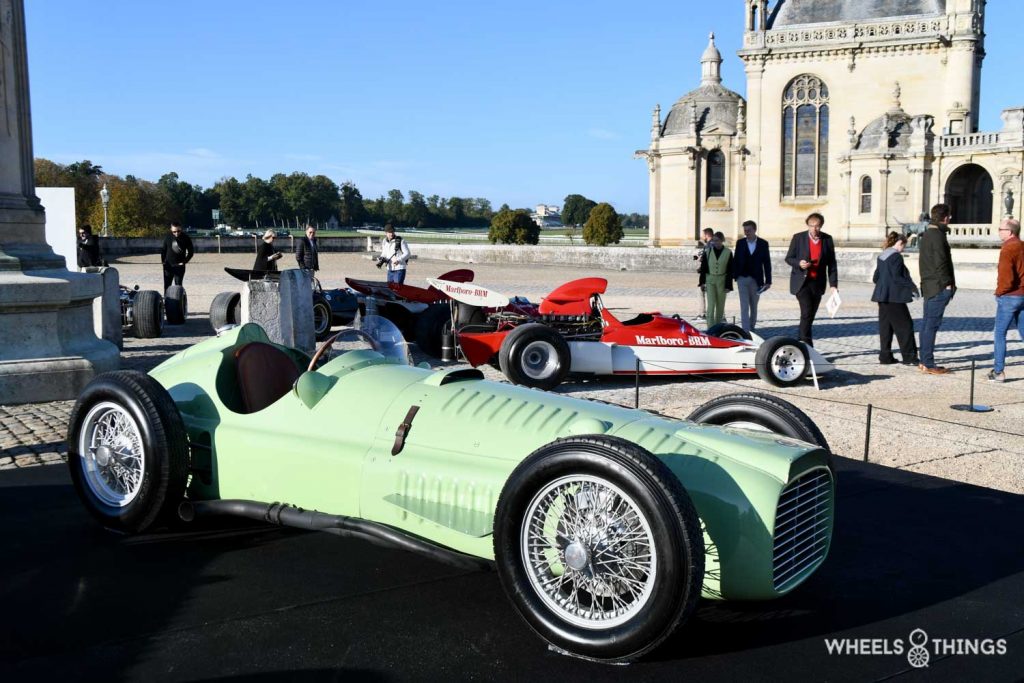
It competed 197 times in a Grand Prix race and won 18 of them. Famous drivers such as Dan Gurney, Graham Hill, Niki Lauda, Pedro Rodriguez, Jackie Stewart, Jo Siffert, John Surtees, Clay Regazonni and Jean Pierre Beltoise were at the wheel of a BRM race car.
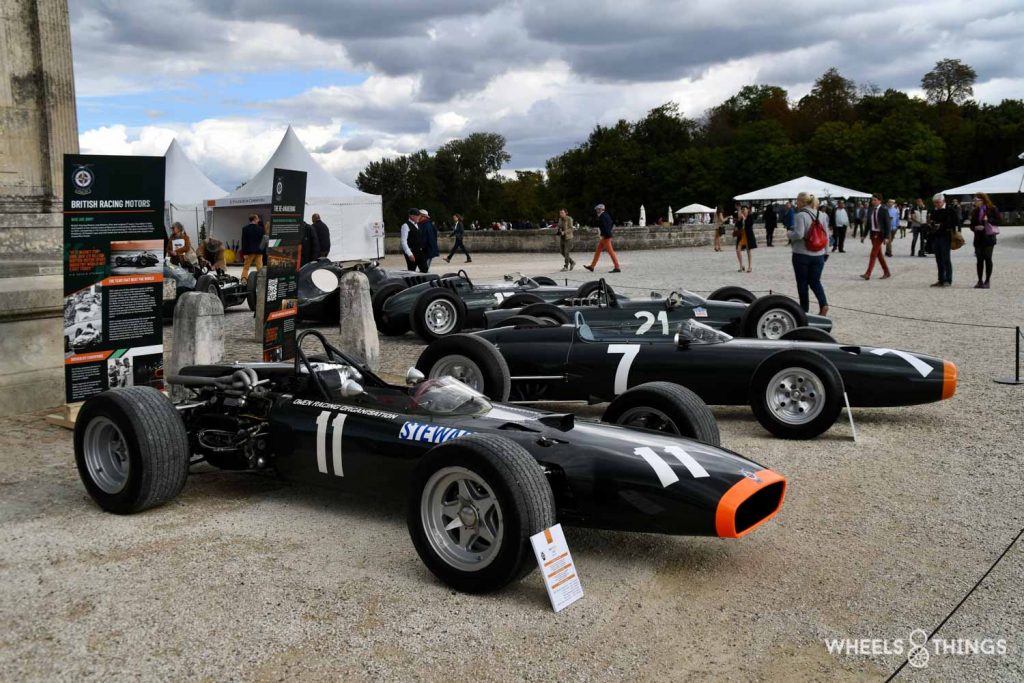
BRM, like Ferrari, designed the entire car from chassis to engine. Graham Hill drove the BRM P 57, in 1962, to his first world title. He also won the Monaco GP three times in a row between 1963 and 1965.
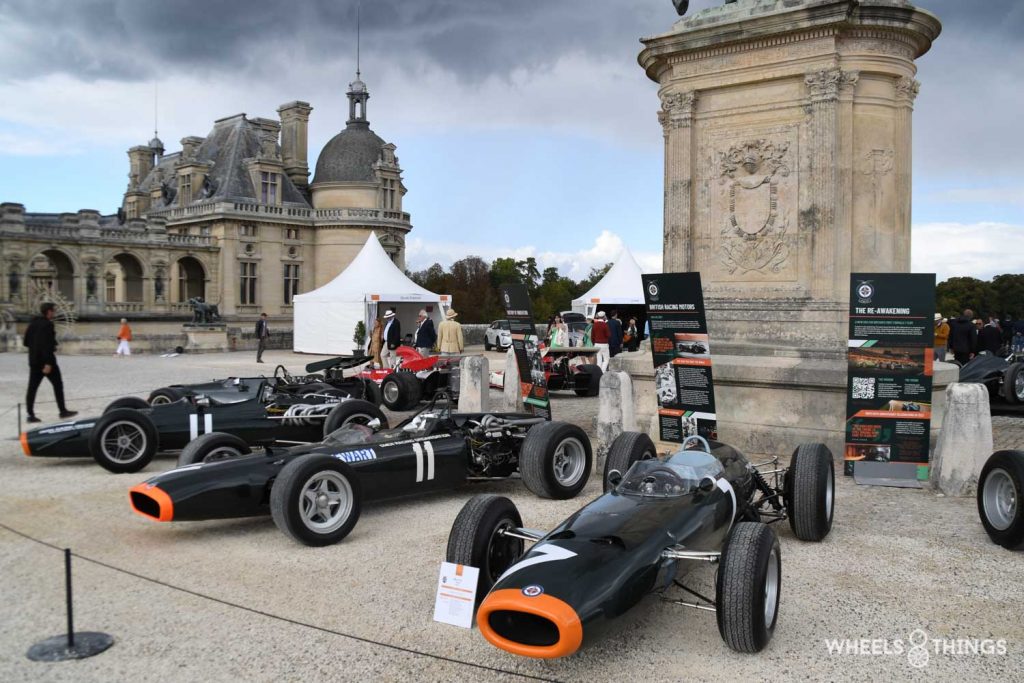
And BRM and Monaco were a successful combination because one year later it was Jackie Stewart who won the race in the principality in the BRM P 261.
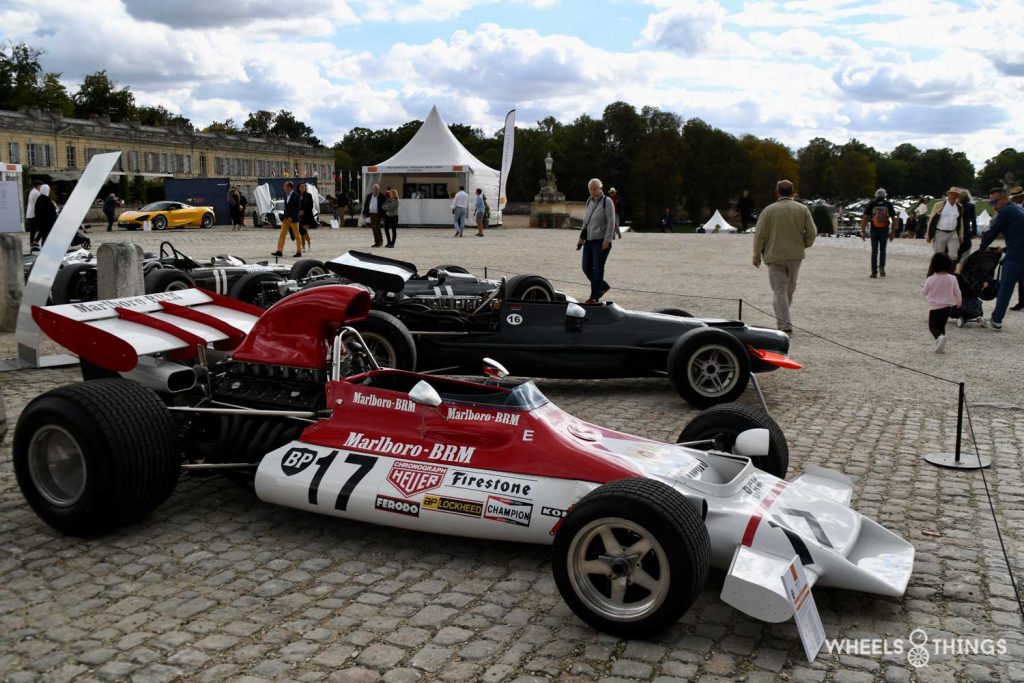
And the fairy tale is not over yet. In 1972, Jean Pierre Beltoise provides the final victory with the Marlboro BRM P 160 B in a “drowned” Monaco Grand Prix.
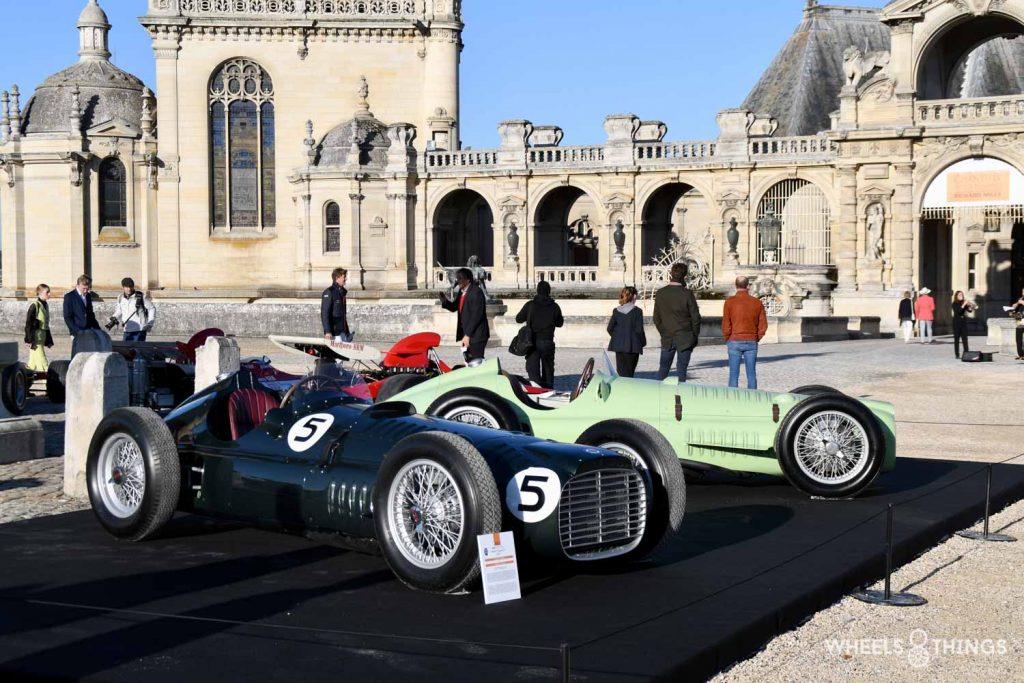
BRM recently launched a remake of the 16-cylinder BRM Type 15. The Type 15, with its impressive 16-cylinder engine, was not very successful. The car was very difficult to keep on track and many technical problems killed the project.
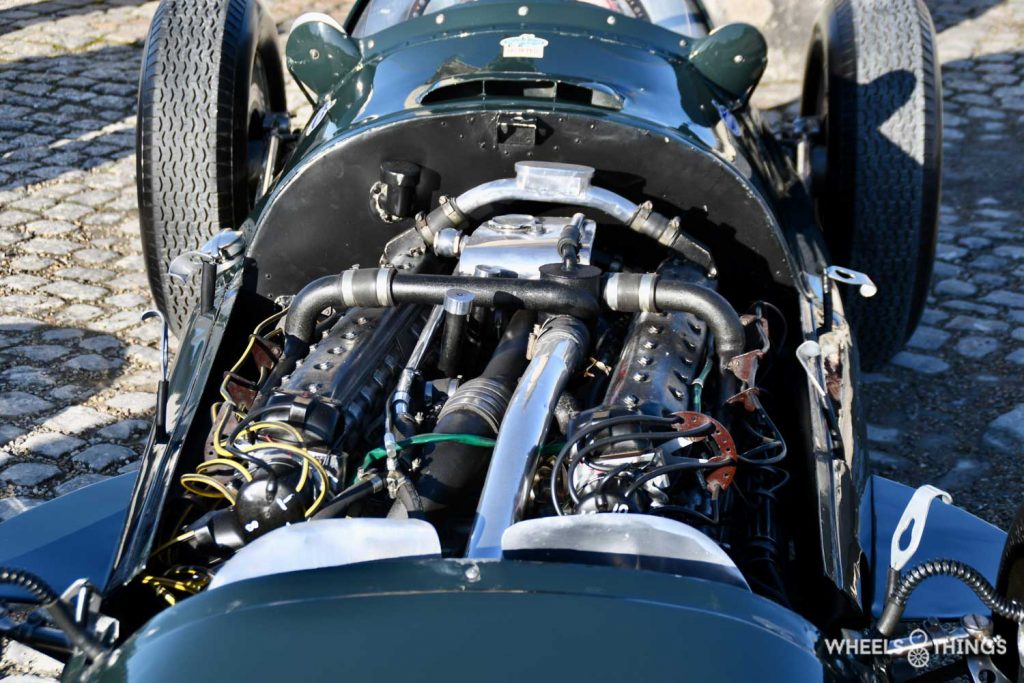
On the Esplanade next to the castle, almost all BRM models were beautifully displayed. One of the original Type 15 models stood there next to a podium on which two of the newly built ones had taken their seats. Why those new ones were on the stage and the original ones next to them we could not really understand. The bonnet of the original was next to the car and so the 16-cylinder engine was clearly visible. Note how the engine is actually “skewed” into it.
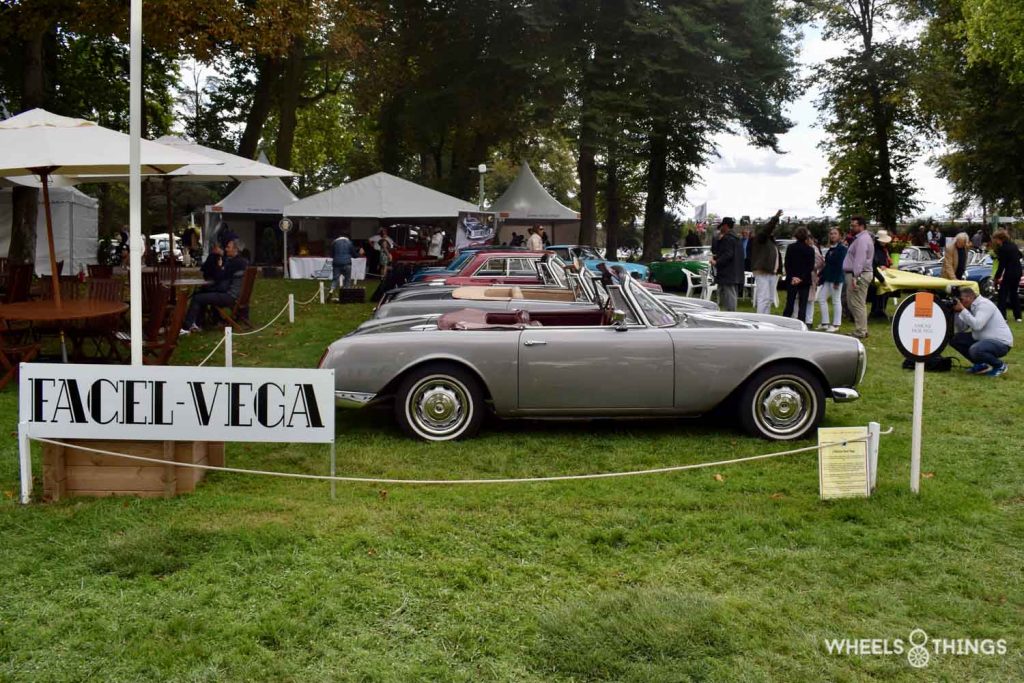
Peter Auto also traditionally provides a lot of fringe entertainment. First of all, many clubs are present, which in turn also compete for a trophy. So we saw the French Facel Vega club with fine specimens and even from Belgium the Rétromobile club from Spa had made the trip to Chantilly.
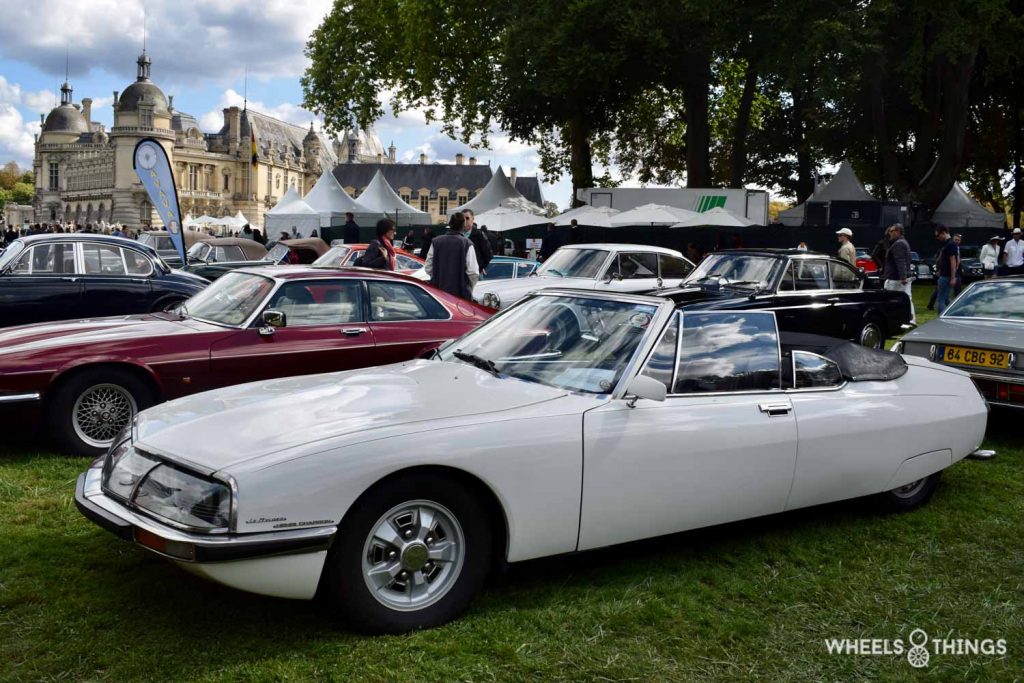
The prize for the most beautiful car went, for the second time, to a Citroën SM Cabrio Mylord by Chapron. Again, a white specimen like this one that had won the prize for the most original car.
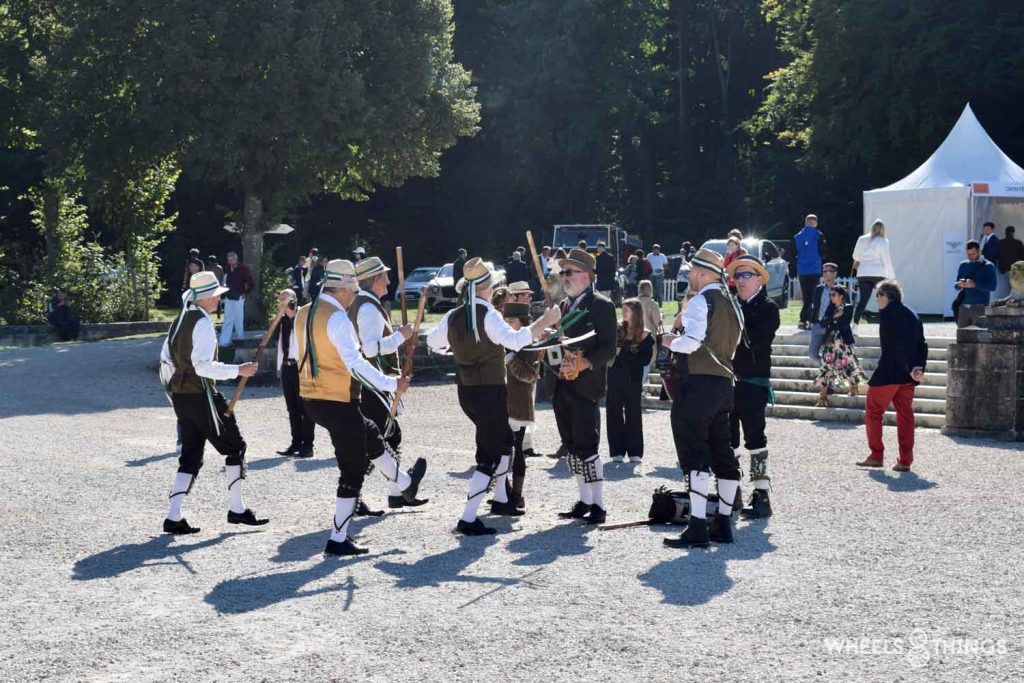
Scattered around the site are also numerous stalls and the traditional “big” board games were also there, of course.
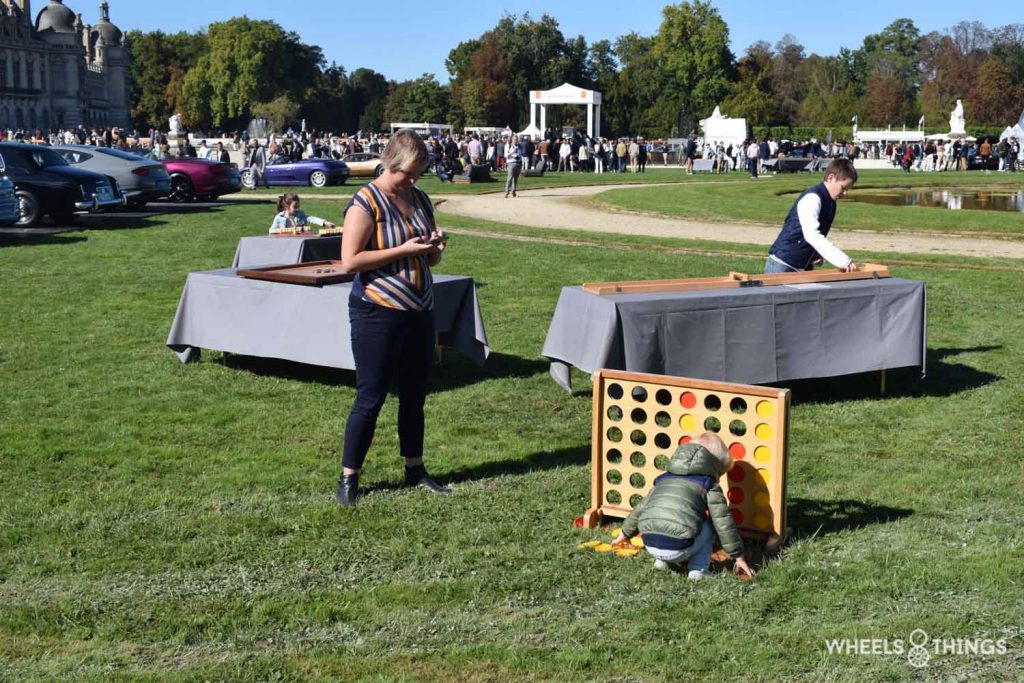
Those looking for something more exciting could take a boat trip in the castle pond or take off in a hot-air balloon. The trip did not go far, though, as the balloon was fixed to the ground with a rope.
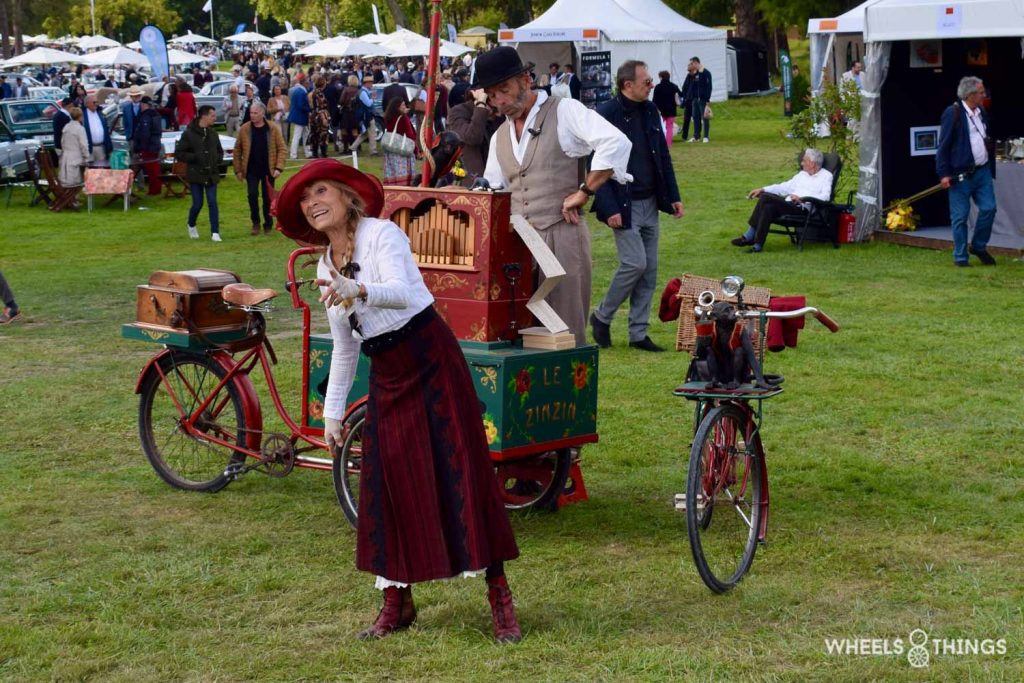
Entertainment was also provided: clarion players, stilt walkers, dance groups and a real organ grinder.
CONCOURS D’ ELEGANCE
In the afternoon, there was then the “Concours d’ Elégance” where the participating car was paired with a “couturier”. The latter is not really our speciality but we saw names like Ozgur, Balmain, Nicha, Lanvin, La Fameuse and Djakovitch.
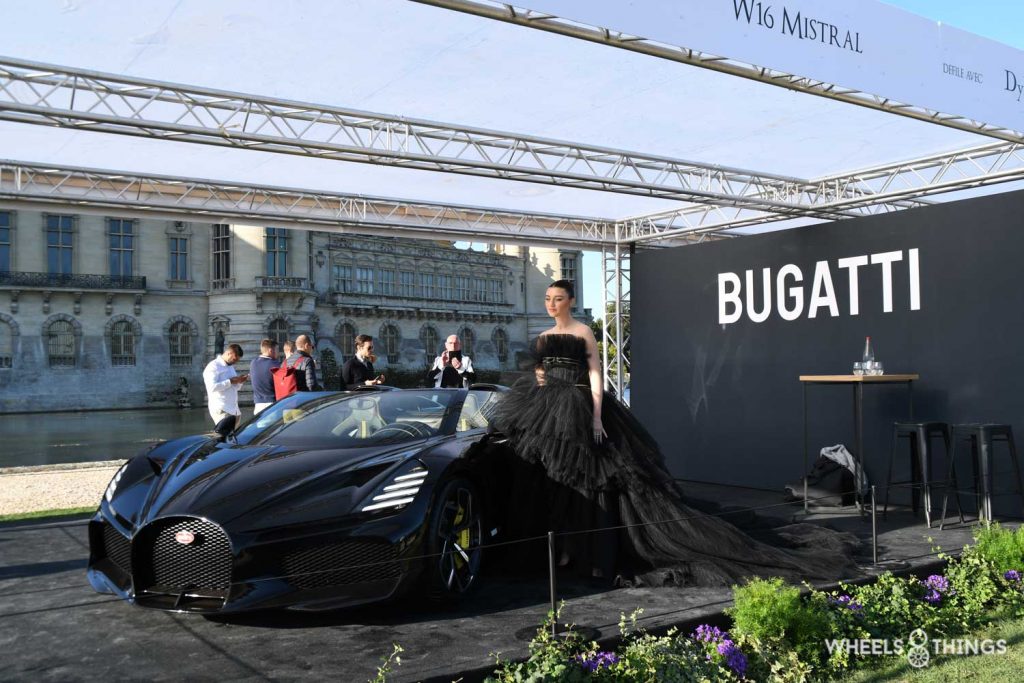
Among the participants the very last version of the Bugatti Chiron, the W 16 Mistral. With the Mistral, the W16 Bugatti engine also comes to an end.
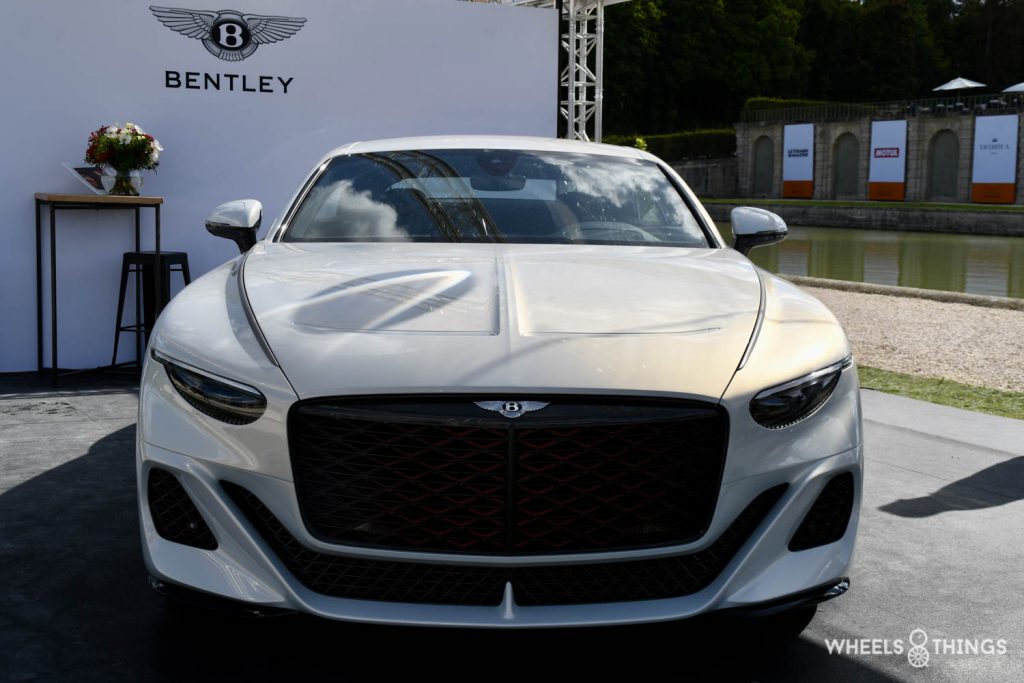
The Bentley Mulliner Batur, mentioned earlier, was also in attendance.
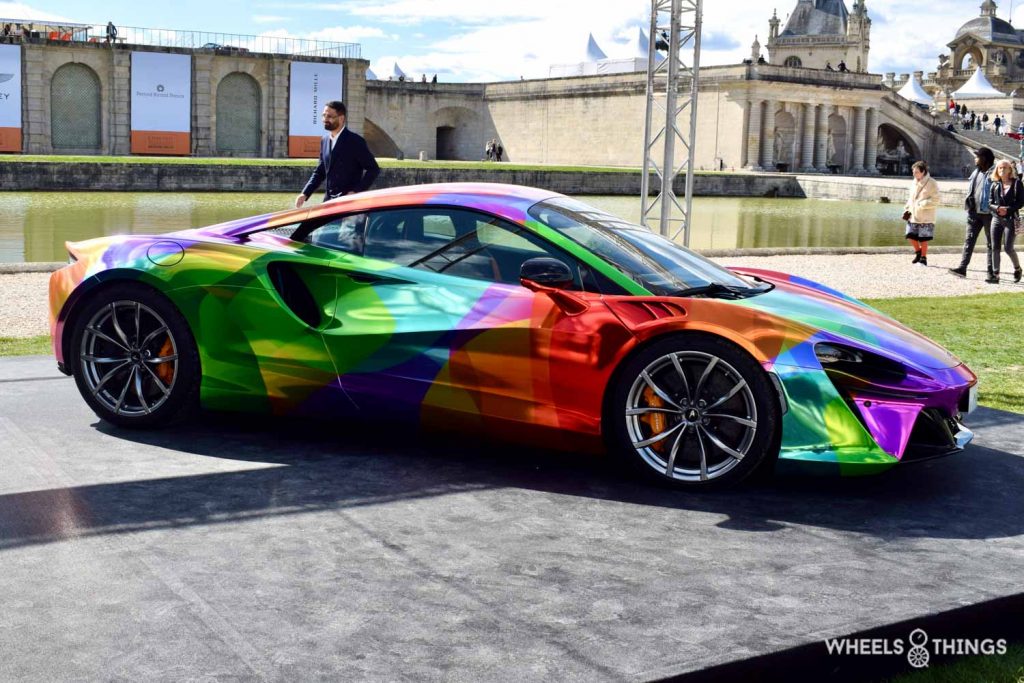
We could not really like the “harlequin” Mclaren Artura.
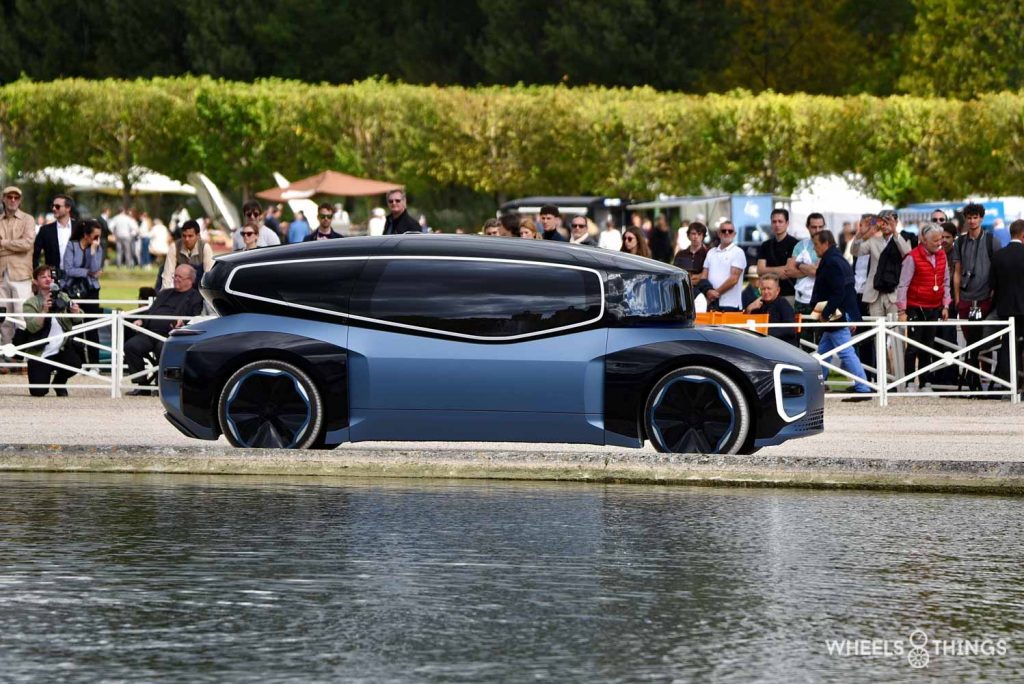
And neither does the Volkswagen GEN. TRAVEL neither. Volkswagen presented this self-driving bus with the slogan: zero emissions and zero stress. You just weren’t allowed to look at it for too long because that second one came on its own.
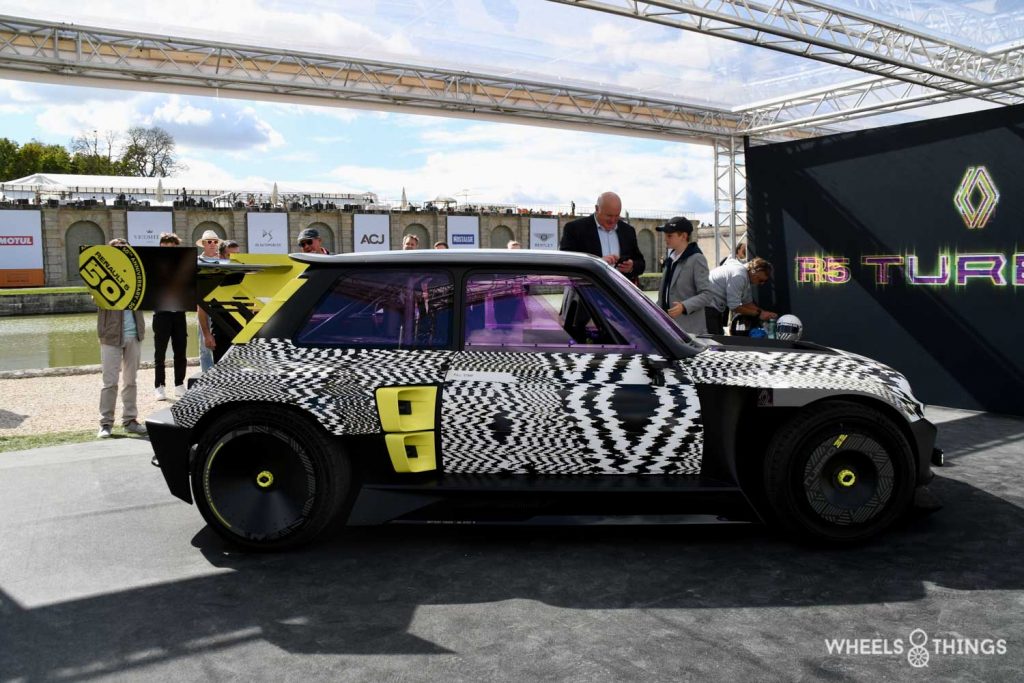
More successful was the Renault R5 Turbo 3 E. A remake of the 5 turbo rally car from the 1980s. The 5 turbo caused a furore in the rally world back then with its centrally mounted engine. The Renault 5 celebrated its 50th anniversary this year, which was enough for Renault to come out with this birthday extravaganza. Unfortunately, the fire-breathing turbo engine was replaced by an electric one, though.
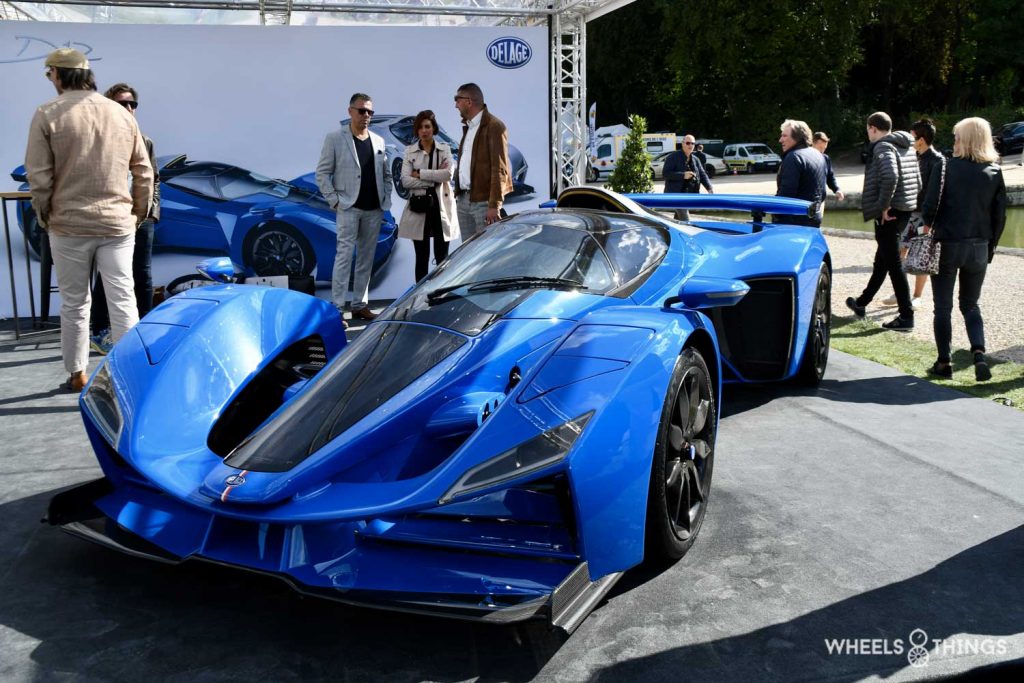
Totally wild we got the new Delage D12. All stops were pulled out for the rebirth of this prestigious French marque. After a promo tour of the United States of America, the D12 was back in France just in time. This Delage is something of a “Formula 1” car for public roads. And with its rather low and very wide dimensions, it does have some F1 DNA in it. The chassis is a monocoque as in F1 and fitted with a front crash box.
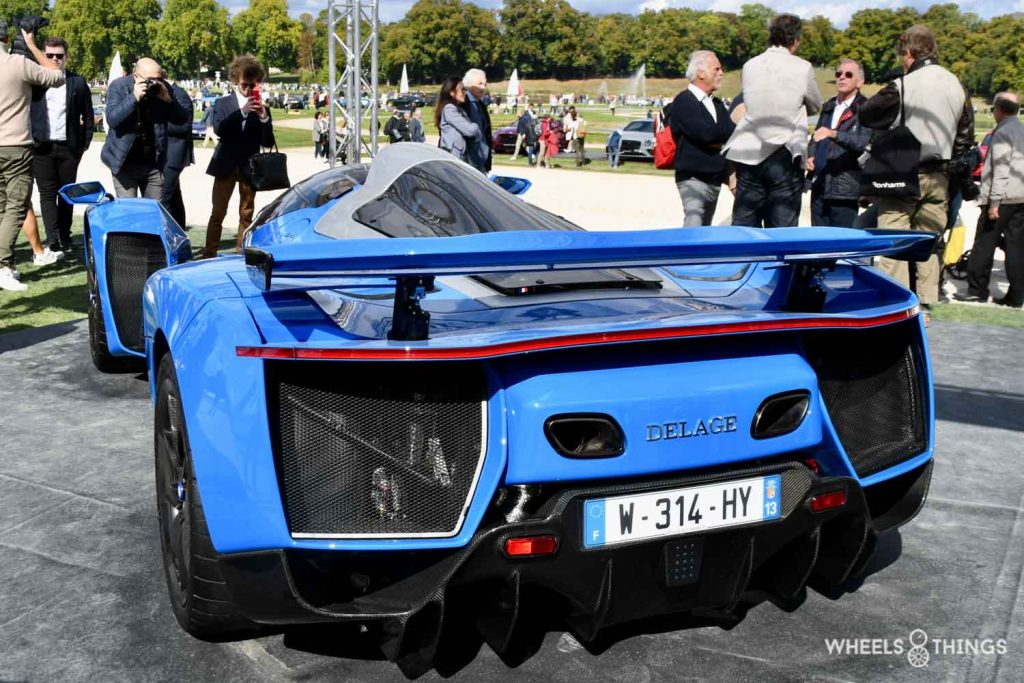
And where in F1 these days they only have to make do with a 6-cylinder 1.6 engine, this Delage is equipped with much better: a 7.6-litre V12 that produces just under 1,000 hp. On top of this comes an electric motor with an extra 110 HP.
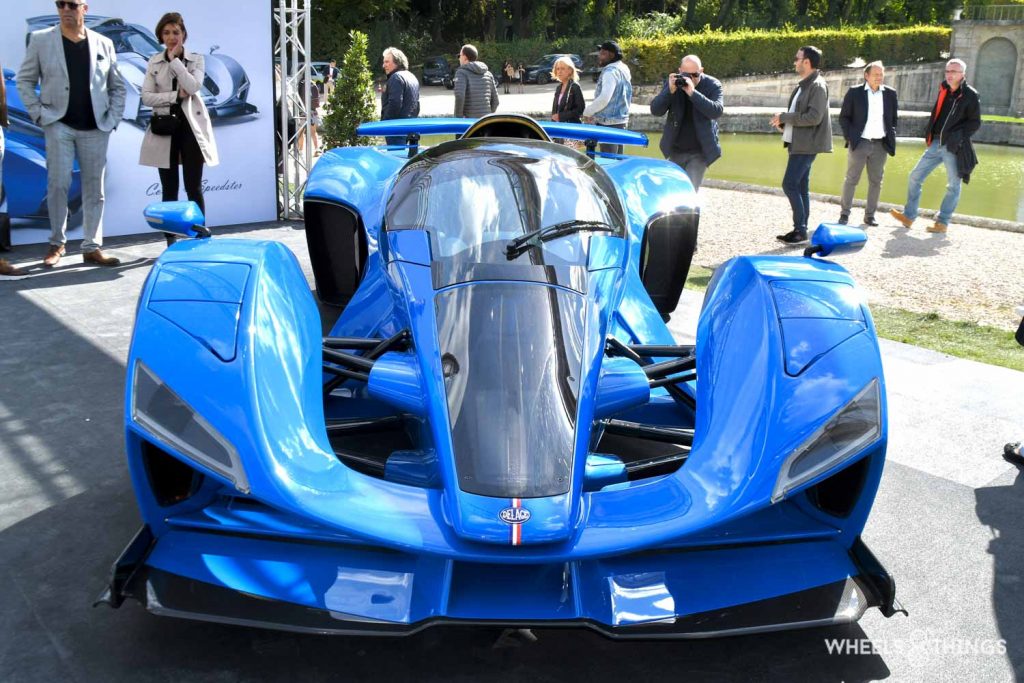
The aim is to make the fastest car in the world that meets homologation for public roads. Next year, the aim is to break the lap record at the Nürburgring. The D12 will be built in a limited run of 30 cars. Customers can choose between a GT version ( public road ) or a Club variant that focuses more on track work. These will have to pay two million euros for it first. But then again, that’s only the price of a Bentley Mulliner Batur. Don’t hesitate and opt for this Delage.
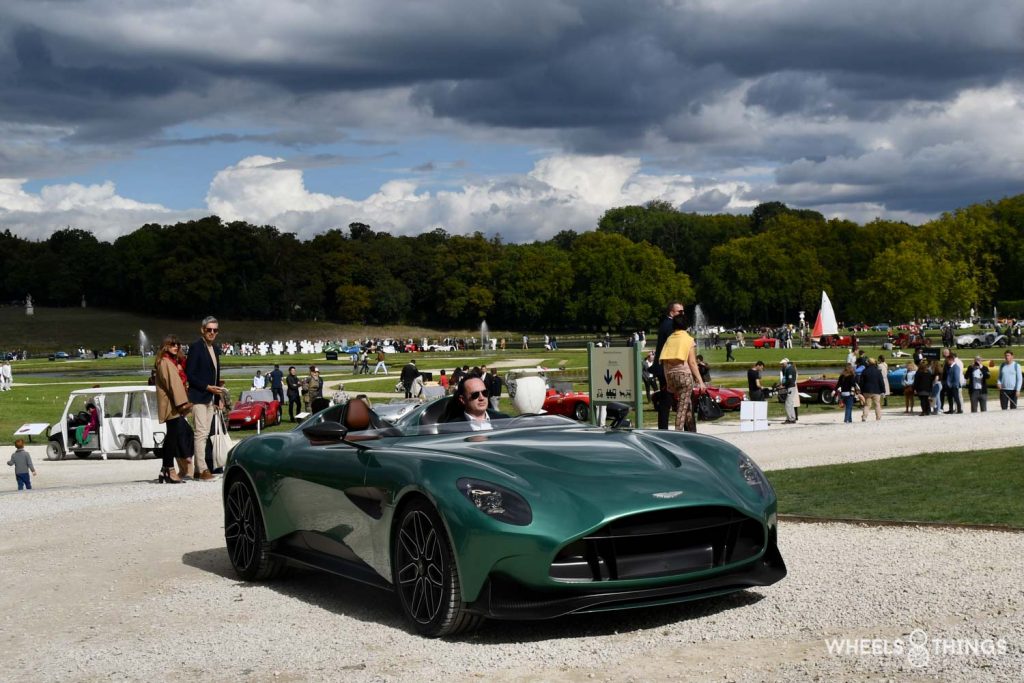
The winner was another V12 with the Aston Martin DBR 22. An open, two-seat roadster based on the legendary DBR1 and DB3 S. Finished in their typical British Racing Green and fitted with an “oldschool” V12, this is a contemporary interpretation of their racing cars from the 1950s and 1960s.
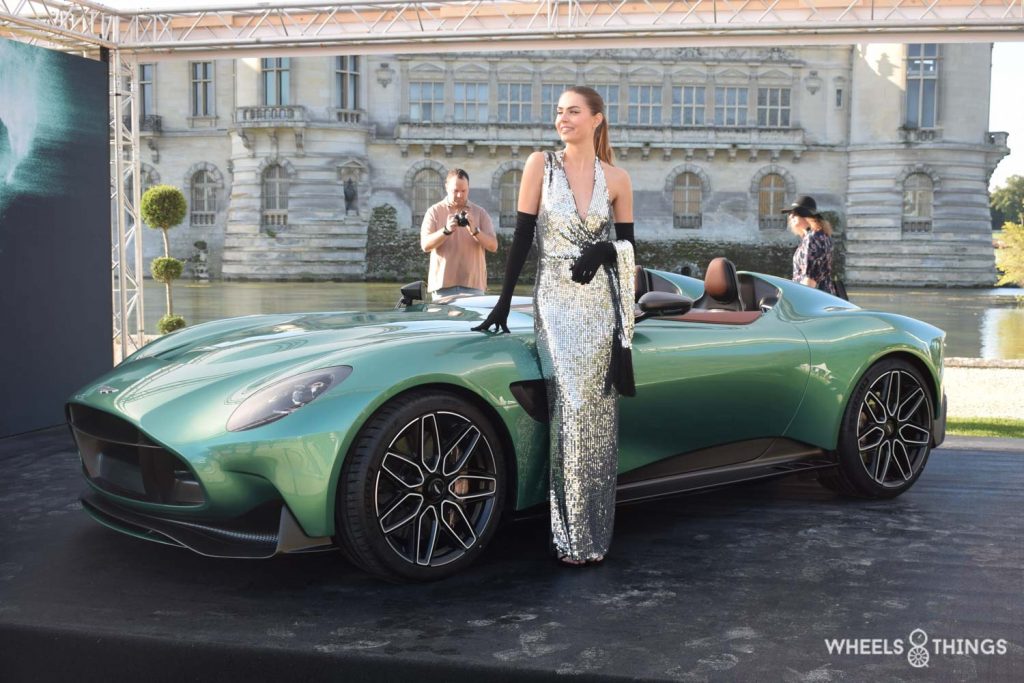
This beauty was designed by Aston Martin’s famous Q division, which celebrated its tenth anniversary in style with it. This Q division makes cars in limited editions and even unique and one-off designs such as the Aston Martin Victor.
BELGIUM
We noticed a huge number of Belgian cars among the participants in Chantilly. Besides the large contribution of the D’Ieteren group with Bugatti and Superlegerra, we also saw many private cars with a Belgian number plate.
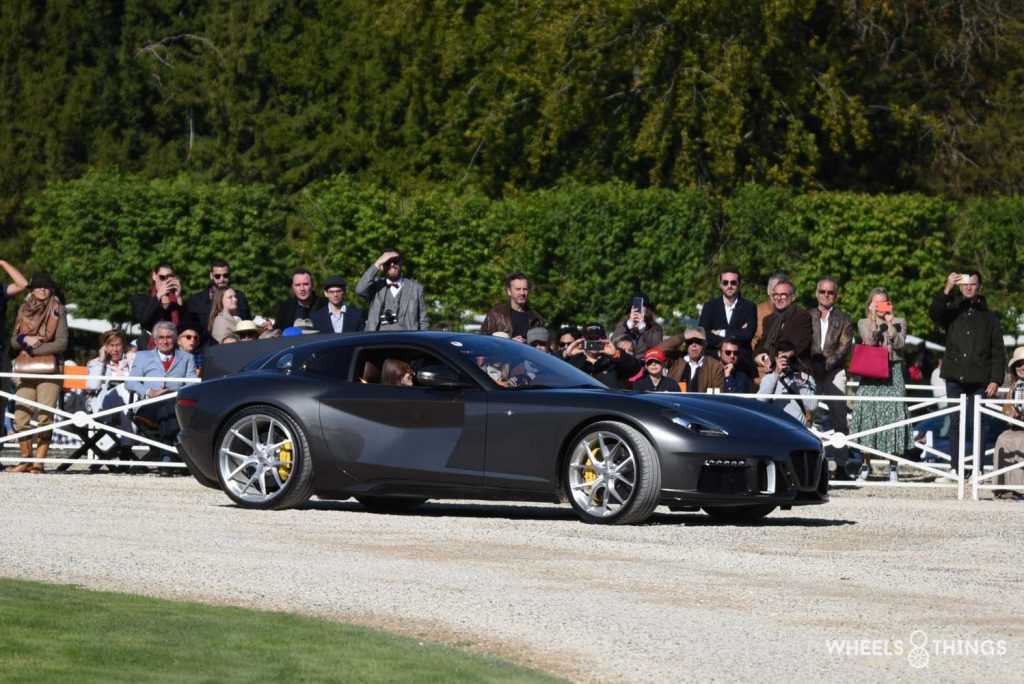
A rough estimate of 20% is certainly not exaggerated. Surely this means that there are many classic car enthusiasts in our little country who have very nice material. Several series were even won by a Belgian car.
Chantilly Arts & Elégance 2022 was another successful edition and well worth a visit. There were, however, slightly fewer participants than in the pre covid times. This is obviously due to the changed situation in the world. After covid and the current war and energy crisis, everything is not as it used to be. That said, we certainly did see some very nice automobiles. The most unique was certainly the 1938 Hispano Suiza H6C Dubonnet Xenia, which deservedly took home the biggest prize.
Unfortunately, it will be another two-year wait for the next issue.





















































































































































